Safety
How to submit an article:
- Registered users can submit any published journal article that has a unique DOI (Digital Object Identifier) name or link to Research Hub.
- For example, you can paste the full DOI link:
https://doi.org/10.1109/5.771073or just the DOI name:10.1109/5.771073into the field above and click submit. - The person who is first to submit a valid article to Research Hub will forever be credited for it, and every article submission earns you +6 Research Points.
Related Topics
Published research studies are articles that present the findings of original research that has undergone a peer-review process and has been made publicly available in scholarly journals, books or other media.

Efficacy and safety of Chinese patent medicine in the adjuvant treatment of prostate cancer: A Bayesian network meta-analysis
2024 Mar 22 Medicine Wang S, Zhang F, Liu J, Qin P
Network Pharmacology Meta-Analysis Prostate CancerBruceolic oil emulsion, when combined with androgen antagonists, shows the greatest efficacy in treating prostate cancer amongst Chinese patent medicines.
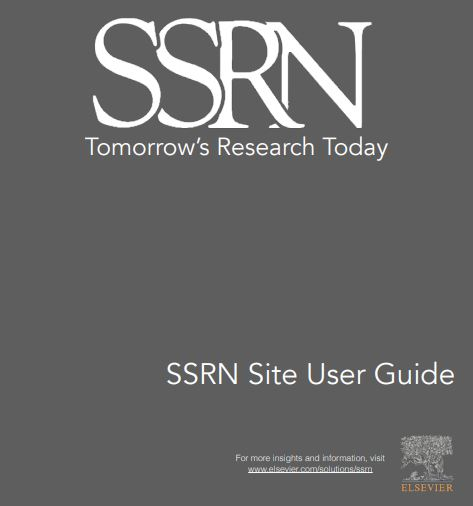
Efficacy and Safety of Different Acupuncture Therapies for Patients with Ulcerative Colitis:A Systematic Review And Network Meta-Analysis
2024 Jan SSRN Electronic Journal Zhang X, Yang S, Jin Y, Cheng X, Lu H, Wu H, et al.
Meta-Analysis Systematic Review Moxibustion Acupuncture Ulcerative ColitisDiverse acupuncture therapies, especially moxibustion, emerged as superior methods for alleviating ulcerative colitis symptoms in clinical practice.
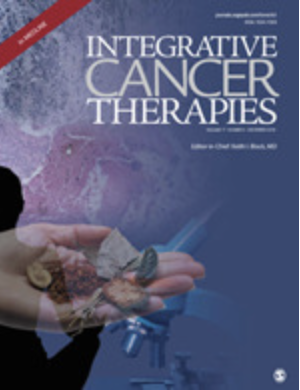
Efficacy and Safety of Compound Kushen Injection for Advanced Colorectal Cancer: A Systematic Review and Meta-Analysis of Randomized Clinical Trials with Trial Sequential Analysis
2024 Jan Integrative Cancer Therapies Wu J, Ma X, Wang X, Zhu G, Wang H, Zhang Y, et al.
Meta-Analysis Systematic Review Ku Shen Colorectal CancerAdding Compound Kushen Injection (CKI), a traditional Chinese medicine, to chemotherapy treatment enhanced treatment response and reduced side effects in advanced colorectal cancer patients.
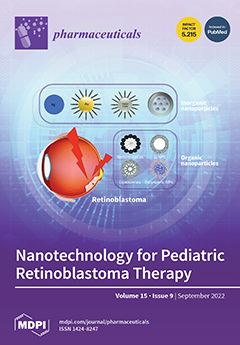
Exploring the Clinical Applications of Lemongrass Essential Oil: A Scoping Review
2024 Jan 25 Pharmaceuticals Kusuma IY, Perdana MI, Vágvölgyi C, Csupor D, Takó M
Review Article Lemongrass Oil Dandruff Gingivitis Periodontitis LemongrassLemongrass essential oil can effectively treat periodontitis, gingivitis, oral malodour, skin aging, and dandruff, and it is comparable to certain established treatments.
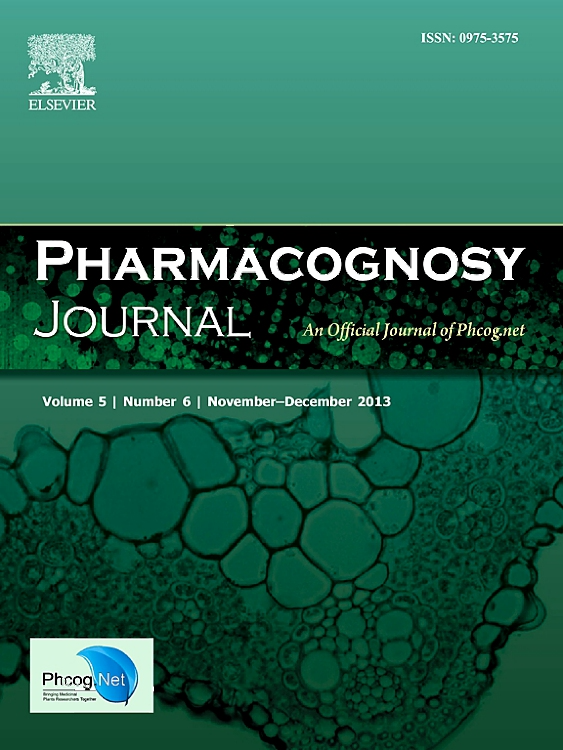
Safety Assessment of Supplementation with Cymbopogon citratus Stapf. (Lemongrass) Extract in Patients with Chronic Kidney Disease Stage 3: A Preliminary 90-Days Prospective Study
2024 Jan 01 Pharmacognosy Journal Wongmanit P, Tungsukruthai P, Phetkate P, Rungprai D, Tungsukruthai S, Supasyndh O, et al.
The study concluded that C. citratus supplementation is safe for CKD stage 3 patients and may help delay the progression of the disease without causing notable side effects.
Experimental Study Clinical Study Lemongrass Chronic Kidney DiseaseResearch insights are moderated by the Research Hub team and offer an at-a-glance overview of interesting research findings.

2024 Medicine
Bruceolic oil emulsion, when combined with androgen antagonists, shows the greatest efficacy in treating prostate cancer amongst Chinese patent medicines.
Network Pharmacology Prostate Cancer
Efficacy and safety of Chinese patent medicine in the adjuvant treatment of prostate cancer: A Bayesian network meta-analysis
Wang S, Zhang F, Liu J, Qin P

2024 Pharmaceuticals
Lemongrass essential oil can effectively treat periodontitis, gingivitis, oral malodour, skin aging, and dandruff, and it is comparable to certain established treatments.
Review Article Dandruff Gingivitis Lemongrass Lemongrass Oil Periodontitis
Exploring the Clinical Applications of Lemongrass Essential Oil: A Scoping Review
Kusuma IY, Perdana MI, Vágvölgyi C, Csupor D, Takó M

2024 SSRN Electronic Journal
Diverse acupuncture therapies, especially moxibustion, emerged as superior methods for alleviating ulcerative colitis symptoms in clinical practice.
Meta-Analysis Acupuncture Moxibustion Ulcerative Colitis
Efficacy and Safety of Different Acupuncture Therapies for Patients with Ulcerative Colitis:A Systematic Review And Network Meta-Analysis
Zhang X, Yang S, Jin Y, Cheng X, Lu H, Wu H, et al.

2024 Integrative Cancer Therapies
Adding Compound Kushen Injection (CKI), a traditional Chinese medicine, to chemotherapy treatment enhanced treatment response and reduced side effects in advanced colorectal cancer patients.
Meta-Analysis Colorectal Cancer Ku Shen
Efficacy and Safety of Compound Kushen Injection for Advanced Colorectal Cancer: A Systematic Review and Meta-Analysis of Randomized Clinical Trials with Trial Sequential Analysis
Wu J, Ma X, Wang X, Zhu G, Wang H, Zhang Y, et al.
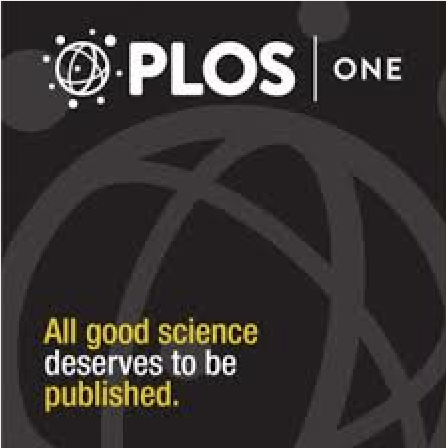
2023 PLOS One
Oral Chinese herbal medicines appear to enhance recovery when used as supplements to conventional treatment after sinus surgery.
Meta-Analysis Chronic Rhinosinusitis
Orally administered Chinese herbal therapy to assist post-surgical recovery for chronic rhinosinusitis—A systematic review and meta-analysis
Cui J, Lin W, May BH, Luo Q, Worsnop C, Zhang AL, et al.
Review Articles
Review articles summarise and critically evaluate the current state of research on a specific topic or field by synthesising multiple primary research studies.

Efficacy and Safety of Different Acupuncture Therapies for Patients with Ulcerative Colitis:A Systematic Review And Network Meta-Analysis
2024 Jan SSRN Electronic Journal Zhang X, Yang S, Jin Y, Cheng X, Lu H, Wu H, et al.
Meta-Analysis Systematic Review Moxibustion Acupuncture Ulcerative ColitisDiverse acupuncture therapies, especially moxibustion, emerged as superior methods for alleviating ulcerative colitis symptoms in clinical practice.

Efficacy and Safety of Compound Kushen Injection for Advanced Colorectal Cancer: A Systematic Review and Meta-Analysis of Randomized Clinical Trials with Trial Sequential Analysis
2024 Jan Integrative Cancer Therapies Wu J, Ma X, Wang X, Zhu G, Wang H, Zhang Y, et al.
Meta-Analysis Systematic Review Ku Shen Colorectal CancerAdding Compound Kushen Injection (CKI), a traditional Chinese medicine, to chemotherapy treatment enhanced treatment response and reduced side effects in advanced colorectal cancer patients.

Exploring the Clinical Applications of Lemongrass Essential Oil: A Scoping Review
2024 Jan 25 Pharmaceuticals Kusuma IY, Perdana MI, Vágvölgyi C, Csupor D, Takó M
Review Article Lemongrass Oil Dandruff Gingivitis Periodontitis LemongrassLemongrass essential oil can effectively treat periodontitis, gingivitis, oral malodour, skin aging, and dandruff, and it is comparable to certain established treatments.

Orally administered Chinese herbal therapy to assist post-surgical recovery for chronic rhinosinusitis—A systematic review and meta-analysis
2023 Oct 05 PLOS One Cui J, Lin W, May BH, Luo Q, Worsnop C, Zhang AL, et al.
Meta-Analysis Systematic Review Chronic RhinosinusitisOral Chinese herbal medicines appear to enhance recovery when used as supplements to conventional treatment after sinus surgery.

Soy protein, bioactive peptides, and isoflavones: A review of their safety and health benefits
2023 Sep PharmaNutrition Tan ST, Tan SS, Tan CX
Review Article Soybean Osteoporosis Isoflavone Cholesterol High Blood PressureSoy protein, bioactive peptides, and isoflavones are generally safe for consumption and may help reduce the risk of several significant health conditions.
Clinical Trials
Clinical trials are research studies that involve people and are conducted to evaluate the safety and efficacy of new treatments or interventions, such as drugs, medical devices, or behavioural therapies.
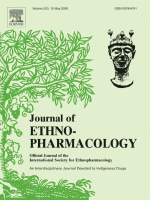
Effect of Guizhi Fuling Wan in primary dysmenorrhea: A randomized controlled trial
2023 May Journal of Ethnopharmacology Luo Y, Mao P, Chen P, Li C, Fu X, Zhuang M
Randomised Controlled Trial Period PainGui Zhi Fu Ling Wan significantly reduced menstrual pain in primary dysmenorrhea patients with heat-burning blood-stasis syndrome, without notable adverse effects.

Acupuncture for chemotherapy-associated insomnia in breast cancer patients: an assessor-participant blinded, randomized, sham-controlled trial
2023 Apr 26 Breast Cancer Research Zhang J, Qin Z, So TH, Chang TY, Yang S, Chen H, et al.
The active acupuncture regimen, combining needling into body acupoints and acupressure on auricular acupoints, was not superior to sham control in reducing the Insomnia Severity Index (ISI) score from baseline to 6 weeks. However, it produced short-term treatment and long-term follow-up better outcomes in improving sleep onset latency, total sleep time, sleep efficiency, anxiety, depression, and quality of life. Participants in the active acupuncture group had a higher cessation rate of sleeping medications than the sham control, indicating that acupuncture could be an effective option for managing chemotherapy-associated insomnia and serve as a tapering approach to reduce the use of sleeping medications in breast cancer patients.
Randomised Controlled Trial Chemotherapy-Associated Insomnia Acupuncture
Effectiveness and safety of Qingfei Dayuan granules for treating influenza and upper respiratory tract infections manifested by the pulmonary heat-toxin syndrome: A multicenter, randomized, double-blind, placebo-controlled trial
2023 Mar 15 Frontiers in Pharmacology Li W, Xie L, Zhu X, Yang Y, Wang L, Yang M, et al.
The trial showed that QFDY was an effective and safe treatment modality for influenza and URTIs manifested by PHTS because it shortened the complete fever relief time, accelerated clinical recovery, and alleviated symptoms such as cough, a stuffy and running nose, and sneezing during the course of treatment.
Randomised Controlled Trial Qingfei Dayuan Granules Influenza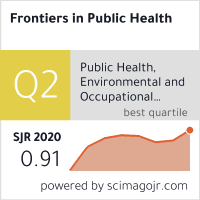
Acupuncture for comorbid depression and insomnia in perimenopause: A feasibility patient-assessor-blinded, randomized, and sham-controlled clinical trial
2023 Feb 06 Frontiers in Public Health Zhao FY, Zheng Z, Fu QQ, Conduit R, Xu H, Wang HR, et al.
Randomised Controlled Trial Perimenopausal DepressionAcupuncture can improve both perimenopausal depression and insomnia with short-medium term effects while being a safe treatment.
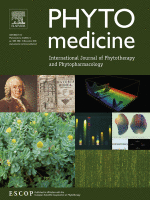
Traditional Chinese medicine Pingchan granule for motor symptoms and functions in Parkinson's disease: A multicenter, randomized, double-blind, placebo-controlled study
2023 Jan Phytomedicine Gu SC, Shi R, Gaoag C, Yuan XL, Wu Y, Zhang Y, et al.
Pingchan granule (PCG) had a long-lasting efficacy for motor symptoms and function in Parkinson's disease (PD) with good tolerance, supporting that PCG might be a viable alternative in the management of PD.
Randomised Controlled TrialStudy Protocols
Published study protocols are detailed plans that outline the objectives, methodology, statistical analyses, and organisation of a research study that have been made publicly available for others to review and use as a reference.

Should acupuncture therapy be used for acute facial paralysis? A protocol for systematic review
2023 Mar 15 Systematic Reviews Cheng L, Li X, Ying Y, Du S, Zhang X, Guo W, et al.
This review will summarize the evidence on the different type of acupuncture therapy for acute Bell’s palsy and Ramsay-Hunt syndrome. We anticipate that it would be safe and effective when applied to the acute phase of PFP, and some specific suitable acupuncture methods would be found resulting from this review.
Study Protocol Acupuncture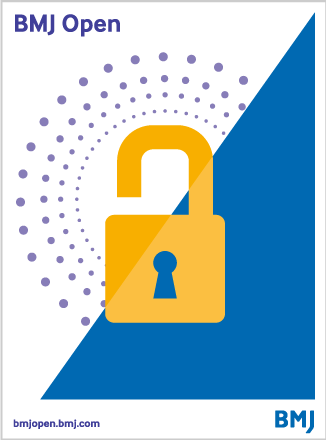
Safety and efficacy of acupuncture for varicocele-induced male infertility: a systematic review protocol
2022 Dec BMJ Open Wang S, Lu R, Shi H, Chen J, Sun M, Ding J, et al.
Study Protocol Male Fertility
Efficacy and safety of acupuncture in combination with Chinese herbal medicine in dealing with osteoporosis: A protocol for a systematic review and network meta-analysis
2022 Dec 30 Medicine Long P, Ju S, Wang J
The current systematic review and network meta-analysis will provide the effectiveness and safety of acupuncture in combination with CHM in dealing with OP. The research will provide reliable evidence for the clinical use of acupuncture in combination with CHM in dealing with OP.
Study Protocol Acupuncture
Acupuncture combined with traditional Chinese medicine for knee osteoarthritis: A protocol for systematic review and meta-analysis
2022 Dec 16 Medicine Wang Y, Lu Q, Guo H, Sun J, Li X, Guan H, et al.
This meta-analysis further established the efficacy of acupuncture combined with traditional Chinese medicine in the treatment of KOA. This meta-analysis aims to investigate the efficacy of acupuncture combined with traditional Chinese medicine on patients with KOA and provide reliable evidence. To provide more options for clinicians and patients in the treatment of KOA.
Study Protocol Acupuncture Knee Osteoarthritis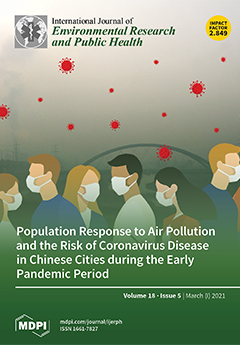
Pharmacopuncture Effects on Insomnia Disorder: Protocol for a Multi-Site, Randomized, Acupuncture-Controlled, Clinical Trial
2022 Dec 12 International Journal of Environmental Research and Public Health Lim JH, Lee JH, Kwon CY, Lee SH, Kang CW, Cho E, et al.
The findings of this trial willprovide evidence that will be useful in clinical decision-making for insomnia treatment strategies.
Study ProtocolPresentation Slides

Network Pharmacology
Bruceolic oil emulsion, when combined with androgen antagonists, shows the greatest efficacy in treating prostate cancer amongst Chinese patent medicines.
Wang S, Zhang F, Liu J, Qin P

Review Article
Lemongrass essential oil can effectively treat periodontitis, gingivitis, oral malodour, skin aging, and dandruff, and it is comparable to certain established treatments.
Kusuma IY, Perdana MI, Vágvölgyi C, Csupor D, Takó M

Meta-Analysis
Diverse acupuncture therapies, especially moxibustion, emerged as superior methods for alleviating ulcerative colitis symptoms in clinical practice.
Zhang X, Yang S, Jin Y, Cheng X, Lu H, Wu H, Ji J

Meta-Analysis
Adding Compound Kushen Injection (CKI), a traditional Chinese medicine, to chemotherapy treatment enhanced treatment response and reduced side effects in advanced colorectal cancer patients.
Wu J, Ma X, Wang X, Zhu G, Wang H, Zhang Y, Li J

Meta-Analysis
Oral Chinese herbal medicines appear to enhance recovery when used as supplements to conventional treatment after sinus surgery.
Cui J, Lin W, May BH, Luo Q, Worsnop C, Zhang AL, Guo X, Lu C, Li Y, Xue CC

Review Article
Soy protein, bioactive peptides, and isoflavones are generally safe for consumption and may help reduce the risk of several significant health conditions.
Tan ST, Tan SS, Tan CX

Meta-Analysis
Acupoint application has been proven to be a safe and effective method for the treatment of ulcerative colitis.
Tong Y, Yu Y, Yin S, Lin S, Chen Y, Su X

Randomised Controlled Trial
Gui Zhi Fu Ling Wan significantly reduced menstrual pain in primary dysmenorrhea patients with heat-burning blood-stasis syndrome, without notable adverse effects.
Luo Y, Mao P, Chen P, Li C, Fu X, Zhuang M

Systematic Review
Combining Guipi Decoction (GPD) with western medicine holds promise for improving chronic heart failure treatment by enhancing effectiveness and cardiac measures
Rong Y, Wu D, Li M, Teng J

Systematic Review
Tuina therapy for chronic low back pain indicates potential pain relief and reduced disability but doesn't improve quality of life
Yang J, Zhou X, Ma Q, Woods JT, Mohabbat AB, Do A, Brault JS, Jensen MA, Shin KM, Shen L, Zhao C, Cheong KCP, He K, Guo Y, Chen Z, Tang S, Tang Y, Tan CIC, Chen J, Bauer BA

Systematic Review
Meta-Analysis highlights promising role of Guipi Decoction as adjuvant therapy for chronic heart failure
Rong Y, Wu D, Li M, Teng J

Systematic Review
Tuina massage for chronic low back pain reveals promising results amid methodological considerations
Yang J, Zhou X, Ma Q, Woods JT, Mohabbat AB, Do A, Brault JS, Jensen MA, Shin KM, Shen L, Zhao C, Cheong KCP, He K, Guo Y, Chen Z, Tang S, Tang Y, Tan CIC, Chen J, Bauer BA
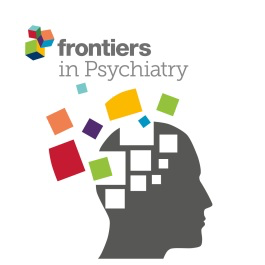
Systematic Review
Acupuncture, especially TEAS, is safer and more effective than medication for improving sleep quality in cancer related insomnia
Ou Y, Lin D, Ni X, Li S, Wu K, Yuan L, Rong J, Feng C, Liu J, Yu Y, Wang X, Wang L, Tang Z, Zhao L

Systematic Review
Acupuncture and Moxibustion Show Promise for Chronic Renal Insufficiency
Ou Y, Lin D, Ni X, Li S, Wu K, Yuan L, Rong J, Feng C, Liu J, Yu Y, Wang X, Wang L, Tang Z, Zhao L
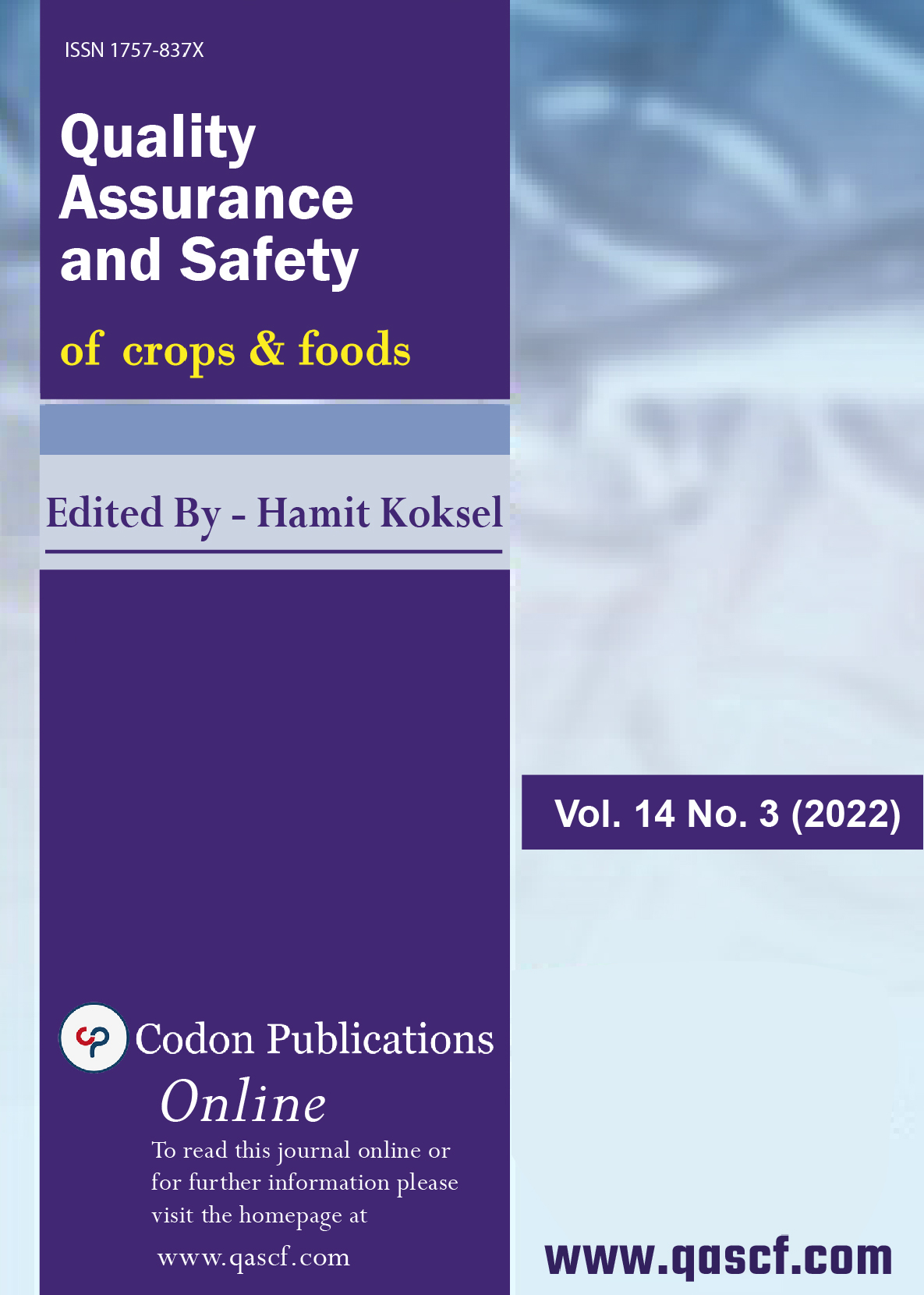
Meta-Analysis
The traditional Chinese herbal medicine Shaoyao Gancao Tang (SG-Tang) may be an effective and safe alternative treatment to relieve Restless Leg Syndrome.
Tian Z, Li R, Wei J, Huai W, Xia J, Jiang H, Xiong Y, Chen Y

Randomised Controlled Trial
Acupuncture can improve both perimenopausal depression and insomnia with short-medium term effects while being a safe treatment.
Zhao FY, Zheng Z, Fu QQ, Conduit R, Xu H, Wang HR, Huang YL, Jiang T, Zhang WJ, Kennedy GA

Systematic Review
Combined Ma Huang Fu Zi Xi Xin decoction and Shen Mai injection treatment showed improved heart rate and symptoms in under 60s with bradyarrhythmia
Zhang Z, Li Y, Yu T, Yan M, Li S

Cohort Study
Epigallocatechin gallate (EGCG), a green tea component, showed potential in treating uterine fibroids and associated infertility without causing liver toxicity or folate deficiency.
Siblini H, Al-Hendy A, Segars J, González F, Taylor HS, Singh B, Flaminia A, Flores VA, Christman GM, Huang H, Johnson JJ, Zhang H
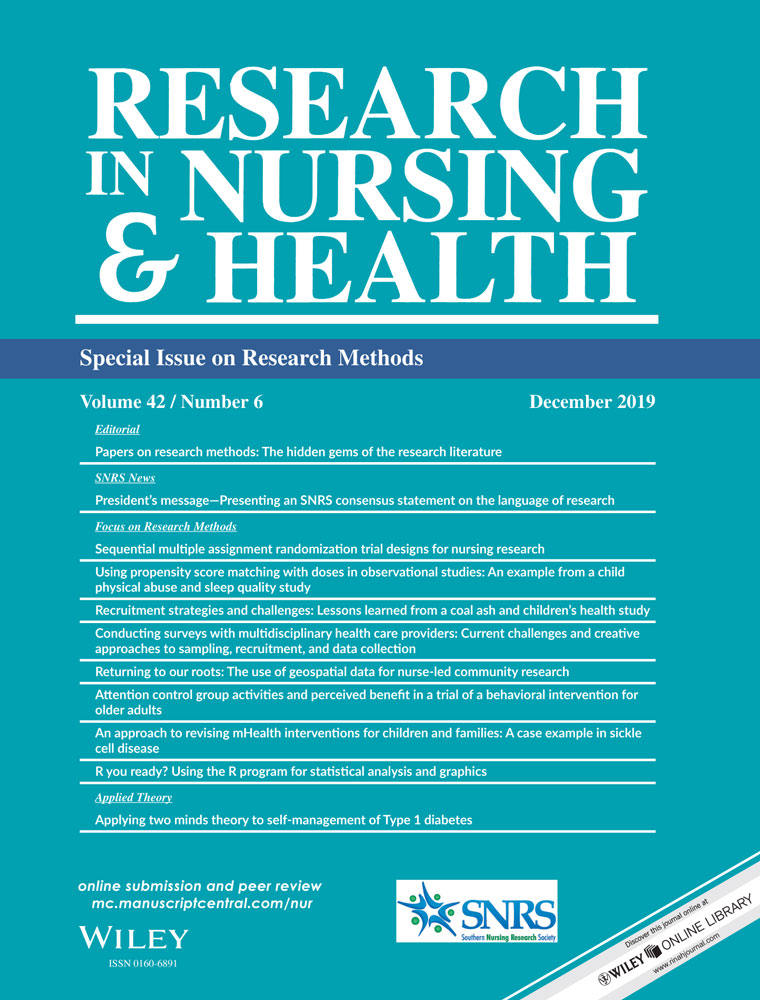
Systematic Review
Acupuncture, either in isolation or as an adjunct to pharmacological treatment, has clinical benefits and can be considered a safe option for managing depression.
Chen B, Wang CC, Lee KH, Xia JC, Luo Z

Systematic Review
Chinese Herbal Medicines may help with chronic sinusitis and acute rhinosinusitis symptoms with LDXGT and modified CEZS working well, especially for CRS.
Cui J, Lin W, May BH, Luo Q, Worsnop C, Zhang AL, Guo X, Lu C, Li Y, Xue CC
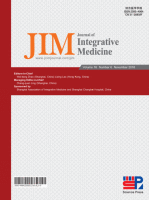
Systematic Review
Acupuncture, when used in conjunction with medicine or alone, appears to improve certain PCOS outcomes such as ovulation rate and recovery of menstrual cycle.
Yang H, Xiao Z, Yin Z, Yu Z, Liu J, Xiao Y, Zhou Y, Li J, Yang J, Liang F
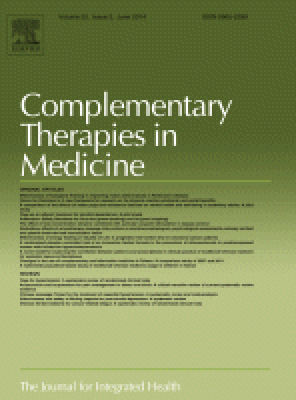
Systematic Review
Acupuncture, when combined with lifestyle changes, can effectively lower blood pressure in grade 1 hypertension patients with fewer side effects
Zhang M, Zhu Y, Wang J, Li Y, Hua Z

Systematic Review
Acupuncture shows positive effects on cancer-related issues; research calls for further exploration of acupuncture's efficacy and safety, especially for conditions like depression, offering further potential support for cancer survivors
Zhang X, Hou W, Pu F, Wang X, Wang Y, Yang M, Cheng K, Wang Y, Robinson N, Liu J

Systematic Review
Acupuncture covering the depth ranges for BL18, BL20, and BL22 and their targeting of various tissues potentially alleviates sympathetic nerve issues and ischemia with assistance of the diaphragm.
Cho Y, Han Y, Kim Y, Han S, Oh K, Chae H, Hongmin C, Ryu M
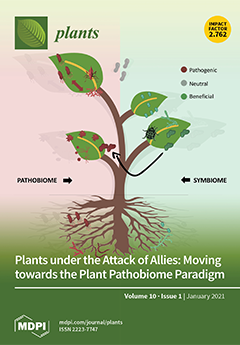
Experimental Study
Broccoli sprouts may reduce the viability of thyroid cancer cells and prevent inflammation, demonstrating a promising safety profile for normal thyroid function.
Paśko P, Zagrodzki P, Okoń K, Prochownik E, Krośniak M, Galanty A

Systematic Review
Traditional Chinese Medicine (TCM) demonstrates weight loss efficacy and metabolic benefits in overweight and obese individuals
Wen ZG, Zhang QQ, Zhang LL, Shen MF, Huang YS and Zhao LH
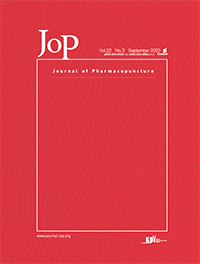
Systematic Review
Complementary therapies are generally effective and safe in treating insomnia with acupuncture being the most frequently effective form, often yielding results superior to western medicine, sham/placebo, and no treatment.
Yeo JJ, Lee JW, Kim KS, Hyun MK

Systematic Review
Chinese herbal medicine (CHM) improved AD symptoms but had no significant impact on patients' quality of life or IgE levels suggesting CHM's potential as an AD treatment with further research.
Cai X, Sun X, Liu L, Zhou Y, Hong S, Wang J, Chen J, Zhang M, Wang C, Lin N, Li S, Xu R, Li X

Systematic Review
HuoXiang ZhengQi (HQXXD) may be a safe and effective treatment for Chronic Cough Variant Asthma (CVA), improving clinical efficacy and airway responsiveness while reducing recurrence rates.
Wang C, Xia Q, Hu B, Jiang W, Zhang H
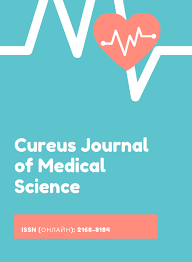
Systematic Review
Honey is effective in treating coughs in children above 12 months.
Mashat GD, Hazique M, Khan KI, Ramesh P, Kanagalingam S, Ul Haq Z, Victory Srinivasan N, Khan AI, Khan S

Systematic Review
Acupuncture coupled with traditional Chinese medicine may be more effective and safer than conventional Western medicine in treating chronic urticaria.
Lu Z, Zhou Q, Chai S, Yang H, Wang J, Luo H, Cao Y, Tao M

Systematic Review
The study found that acupuncture as an adjuvant therapy for frozen-thawed embryo transfer (FET) in infertile women had positive effects on pregnancy outcomes.
Zhu C, Xia W, Huang J, Zhang X, Li F, Yu X, Ma J, Zeng Q

Meta-Analysis
Patients with ulcerative colitis (UC) experienced greater clinical improvement and fewer adverse effects when treated with a combination of Traditional Chinese and Western medicine compared to Western medicine alone.
Chen S, Ji G, Liu X, Yang M, Zhang Y, Cao J, Pan Y
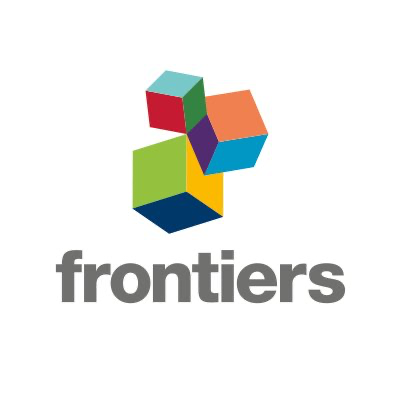
Systematic Review
Electroacupuncture may be more effective than manual acupuncture for managing frozen shoulder, with larger effect sizes in terms of pain, function, and response rate.
Heo JW, Jo JH, Lee JJ, Kang H, Choi TY, Lee MS, Kim JI

Systematic Review
Acupuncture added to conventional rehabilitation has been found more effective in reducing post-stroke spasticity than conventional rehabilitation alone.
Xue C, Jiang C, Zhu Y, Liu X, Zhong D, Li Y, Zhang H, Tang W, She J, Xie C, Li J, Feng Y, Jin R
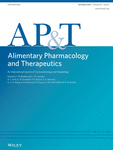
Systematic Review
Peppermint oil proved more effective than placebo in treating irritable bowel syndrome symptoms, but with an increased rate of adverse events.
Ingrosso MR, Ianiro G, Nee J, Lembo AJ, Moayyedi P, Black CJ, Ford AC

Systematic Review
Traditional Chinese medicine therapies, like acupuncture and moxibustion, effectively alleviate irritable bowel syndrome with diarrhea symptoms, and reduce recurrence rates.
Wei X, Wen Y, Wei Y, Liang X, Ma X, Zhang B, Tang X

Systematic Review
The traditional Chinese medicine phlegm-resolving method combined with either CPAP or health guidance improves obstructive sleep apnea symptoms more effectively than the applied methods alone.
Zhou S, Xu H, Liu J, Fan X

Review Article
Pumpkin seed oil, with its phytochemical content, shows beneficial properties against cardiovascular problems in menopausal women and hormone imbalances.
Šamec D, Loizzo MR, Gortzi O, Çankaya T, Tundis R, Suntar , Shirooie S, Zengin G, Devkota HP, Reboredo‐Rodríguez P, Hassan STS, Manayi A, Kashani HRK, Nabavi SM
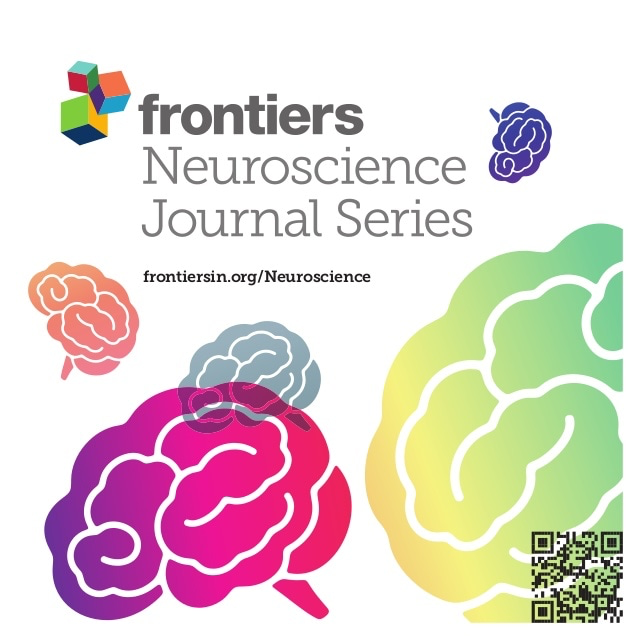
Systematic Review
Chinese herbal medicine shows promising and safe outcomes in relieving functional dyspepsia symptoms and associated psychological disorders.
Luo X, Wang L, Fang S, Qing X, Jiang T, Yang Y, Su X, Wei W

Systematic Review
Acupuncture, specifically electroacupuncture and bee venom acupuncture, shows promise as a growing therapeutic approach in the treatment of Parkinson's Disease.
Li X, Wei W, Wang Y, Wang Q, Liu Z

Randomised Controlled Trial
Modified Xiao Chai Hu Decoction combined with mirtazapine shows superior effectiveness in treating persistent depressive disorder compared to traditional Chinese medicine alone.
Xin Li, Xiuyu Li, Man Gong, Chaoqun Li, Jing Li, Chao Zhou, Tingting He

Systematic Review
Guizhi Shaoyao Zhimu Decoction was more effective and had fewer adverse reactions compared to the control group in the treatment of gout and the combined use of modified GSZD with other treatments showed decreased levels of C-reactive protein and erythrocyte sedimentation rate.
Liu H, Chi X, Zhang H, Shi H, Pan J, Wang Y, Xue X, Lu Y, Song X, Ma K
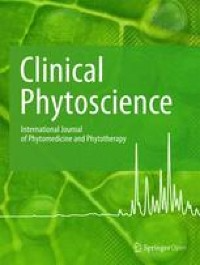
Meta-Analysis
Pumpkin seed extract treatment could potentially offer symptomatic relief for patients experiencing moderate lower urinary tract symptoms suggestive of benign prostate hyperplasia.
Vahlensieck W, Heim S, Patz B, Sahin K

Systematic Review
Xiao Yao San, alone or combined with anxiolytics, assists in better improvement and safety in treating anxiety disorders compared to anxiolytics alone.
Lin J, Ji Y, Si J, Wang G, Li X, Shen L
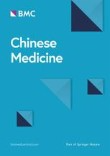
Review Article
Chinese herbal medicine interventions, particularly those based on the Bai-Tou-Weng-Tang and Shen-Ling-Bai-Zhu-San formulas, show promise in treating Ulcerative Colitis.
Zhang X, Zhang L, Chan JCP, Wang X, Zhao C, Xu Y, Xiong W, Chung WC, Liang F, Wang X, Miao J, Bian Z

Systematic Review
Among patients with PCOS, the combined use of acupuncture and moxibustion as a complementary therapy has additional efficacy regarding increased pregnancy and ovulation rates and reduced miscarriage rate.
Li P, Peng J, Ding Z, Zhou X, Liang R

Meta-Analysis
Probiotics combined with traditional Chinese medicine have shown higher rates of efficiency in the treatment of ulcerative colitis than when each is used individually.
Hu Y, Ye Z, She Y, Li L, Wu M, Qin K, Li Y, He H, Hu Z, Yang M, Lu F, Ye Q
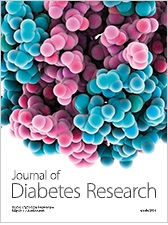
Randomised Controlled Trial
Vitamin D supplementation effectively improves depressive symptoms in women with type 2 diabetes and low vitamin D levels, regardless of the dose administered.
Penckofer S, Ridosh M, Adams W, Grzesiak M, Woo J, Byrn M, Kouba J, Sheean P, Kordish C, Durazo-Arvizu R, Wallis D, Emanuele MA, Halaris A
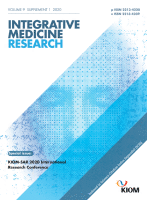
Systematic Review
Some complementary approaches, such as massage and herbal ointments, show promise in reducing postpartum pain.
Smith CA, Hill E, Denejkina A, Thornton C, Dahlen HG
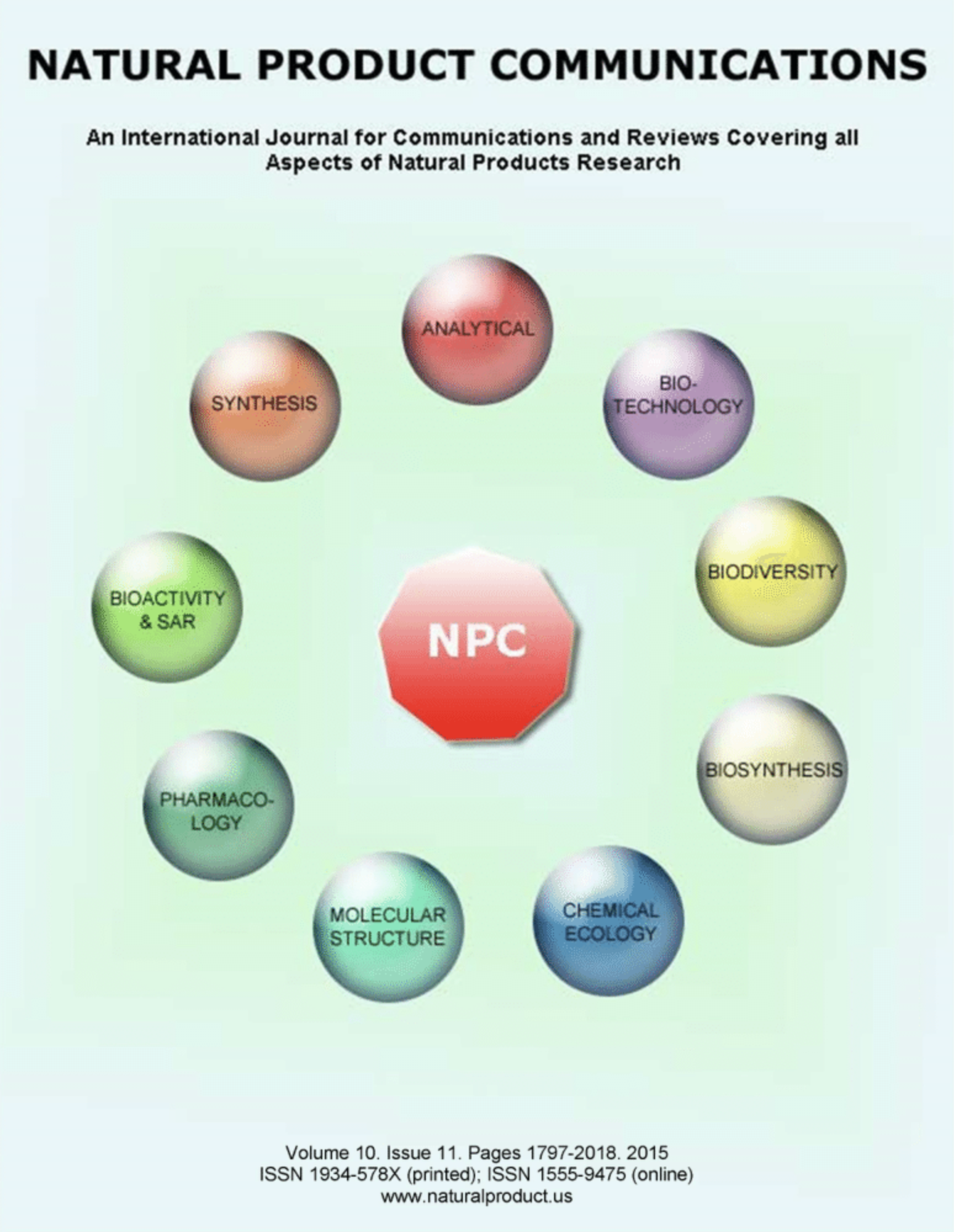
Randomised Controlled Trial
Walnut oligopeptide improves cognitive performance and sleep quality among teenagers and elderly people.
Yeh AL, Chao CL, Huang WF, Lin HC, Wang CJ

Systematic Review
Acupuncture can be effective and safe for primary trigeminal neuralgia. Five acupuncture methods were superior to conventional medicine (carbamazepine) in pain reduction intensity and response rate.
Yin Z, Wang F, Sun M, Zhao L, Liang F

Systematic Review
Traditional Chinese medicine, including acupuncture, can provide superior pain relief and faster recovery for HIV-related Herpes Zoster compared to regular drugs.
Jiang Y, Zheng RX, Yu ZY, Zhang XW, Li J, Lan HD, Qiao SY, Han M, Cao HJ, Robinson N, Liu JP

Systematic Review
Acupuncture appears to have positive effects on live birth rates, clinical pregnancies, and other outcomes in female infertility, but more robust studies are required to establish its true efficacy and safety.
Kewei Quan, Chuyi Yu, Xiaohui Wen, Qiuping Lin, Naiping Wang, Hongxia Ma
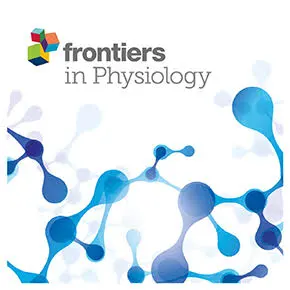
Systematic Review
Moxibustion, a form of traditional Chinese medicine, appears to be an effective and safe treatment for knee osteoarthritis.
Yin S, Zhu F, Li Z, Che D, Li L, Feng J, Zhang L, Huo Z
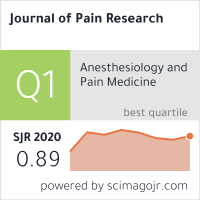
Systematic Review
Acupuncture is more effective than control treatment in alleviating pain and improving well-being in both the short- and long-term in patients with fibromyalgia.
Zheng C, Zhou T

Systematic Review
Xiao Yao San can improve symptoms and reduce recurrence rates in patients with disorders of gut-brain interaction.
Liu Q, Shi Z, Zhang T, Jiang T, Luo X, Su X, Yang Y and Wei W

Meta-Analysis
Cinnamon is a safe therapeutic agent without significant adverse effects based on systematic reviews and meta-analyses.
Gu DT, Tung TH, Jiesisibieke ZL, Chien CW, Liu WY

Systematic Review
High prevalence of insomnia, anxiety, and depression among perimenopausal women, emphasizing the importance of exploring acupuncture as a potential green therapy for effectively addressing these interconnected issues.
Ping Y, Liang C, Fan X, Zhang L, Ying D, Wang Z

Systematic Review
Adding Du Huo Ji Sheng Decoction on bisphosphonate medications seems to be an effective and safe strategy in treating patients with osteoporosis.
Huang CY, Cheng CJ, Chiou WF, Chang WC, Kang YN, Lee MH

Systematic Review
Noni, a medicinal plant, has illustrated diverse anticancer properties across different cancer models through numerous mechanisms including antitumor and immunomodulatory activities.
Chanthira Kumar H, Lim XY, Mohkiar FH, Suhaimi SN, Mohammad Shafie N, Chin Tan TY

Review Article
The flower of Chrysanthemum morifolium, widespread in Asia, has been discovered as a treatment for diverse diseases, including obesity, heart disease, and cancer, due to its beneficial phytoconstituents.
Pandey J, Bastola T, Dhakal B, Poudel A, Devkota HP
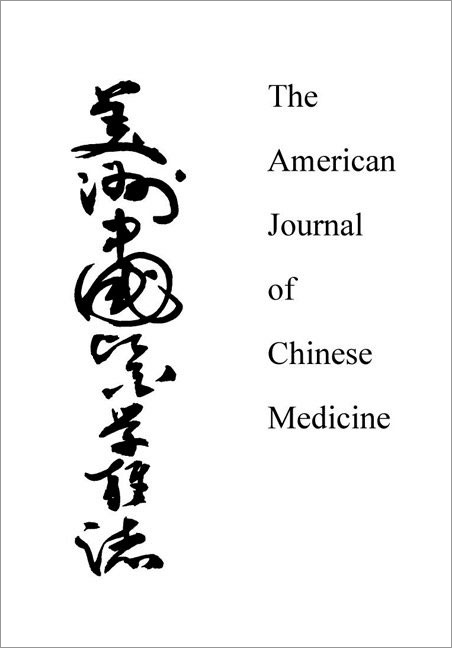
Randomised Controlled Trial
Acupuncture is a safe and effective treatment for Seasonal Allergic Rhinitis, significantly improving symptoms without needing relief medication or causing side effects.
Xue CC, English R, Zhang JJ, Da Costa C, Li CG
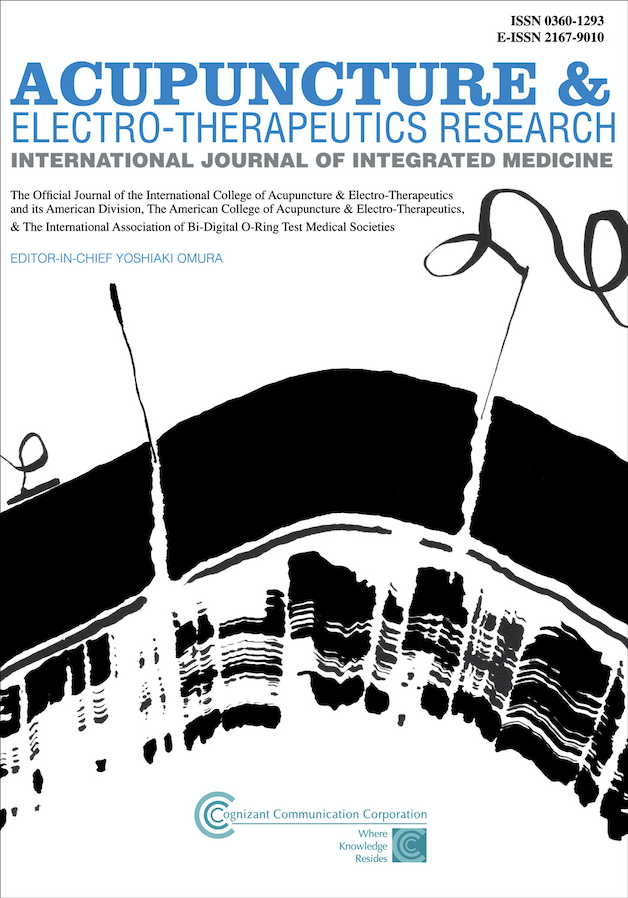
Systematic Review
Compared with conventional treatment, acupuncture as an adjuvant therapy can significantly reduce the incidence of post-stroke fatigue.
Chen Y, Peng M, Li Y
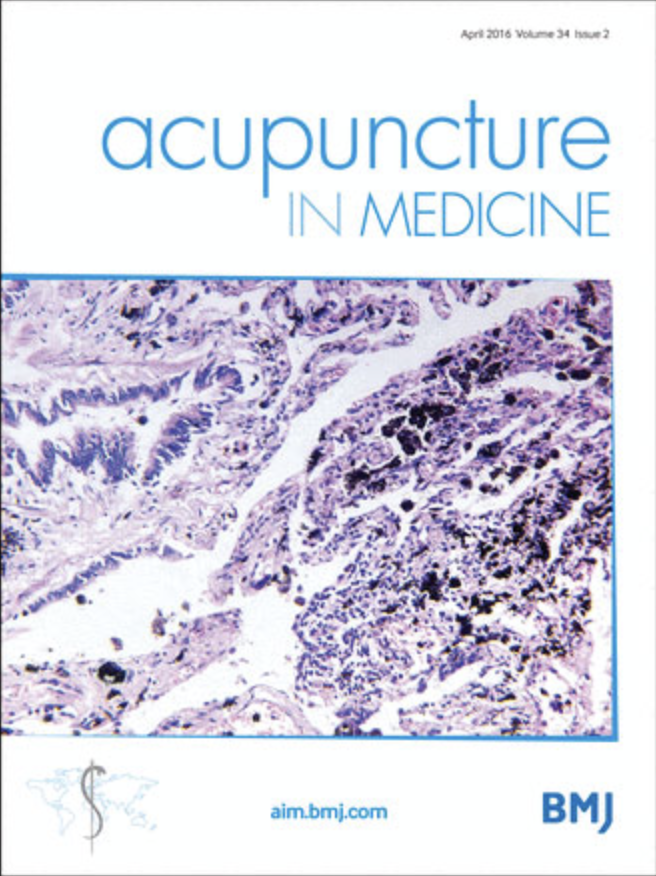
Systematic Review
Acupuncture's potential in reducing menopausal hot flush frequency compared to sham acupuncture, and its similarity in impacting hormone levels to hormone therapy.
Liu C, Wang Z, Guo T, Zhuang L, Gao X
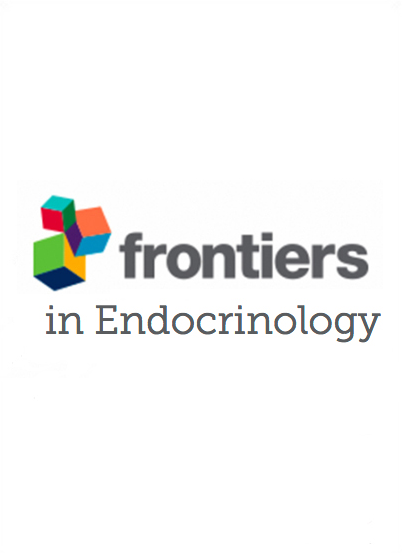
Meta-Analysis
Tea supplements, especially green tea, significantly decrease fasting blood glucose and fasting insulin levels and reduce body weight in women with polycystic ovary syndrome.
Shen W, Pan Y, Jin B, Zhang Z, You T, Qu Y, Han M, Yuan X, Zhang Y
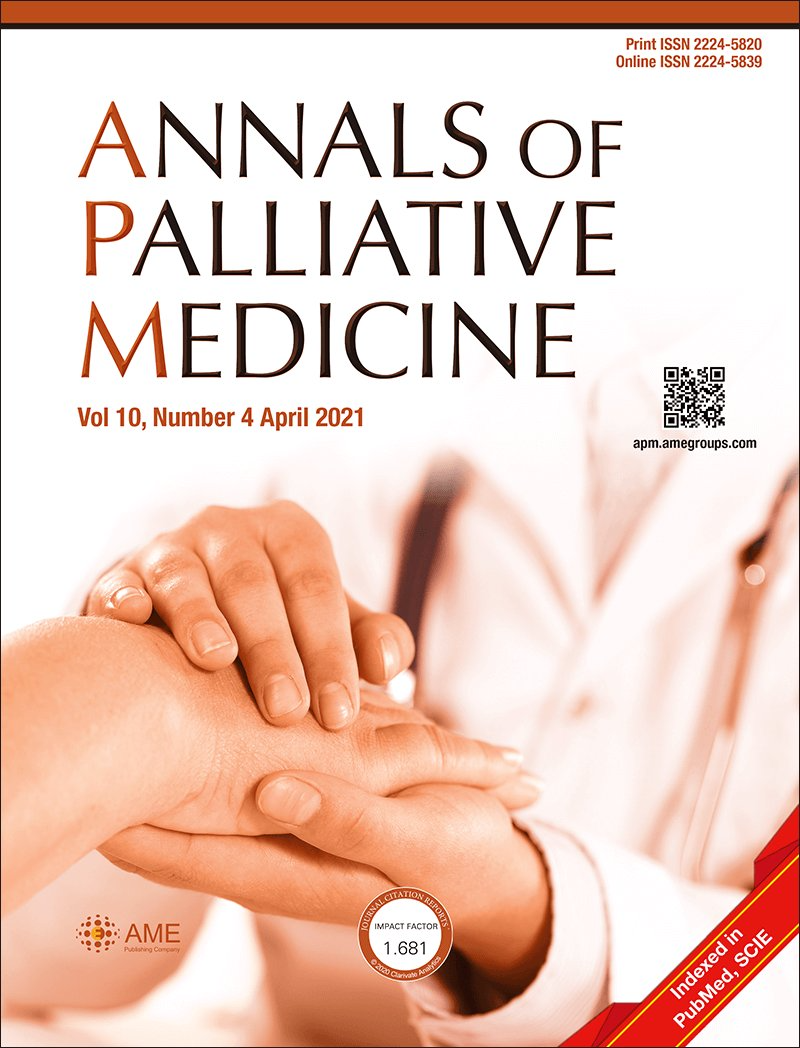
Systematic Review
Traditional Chinese Medicine shows promise in preventing cholelithiasis recurrence post lithotripsy
Li B, Lin Y, Nie B, Zhao G, Zhang X, Zhu M, Hu J, Huang P, Feng S, Qiu R, Tian G, Zhang S, Shang H
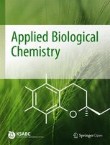
Review Article
Cinnamomum cassia, or cinnamon, exhibits promising therapeutic benefits in combating gastritis by targeting inflammation pathways, according to preclinical studies.
Lee JH, Park DH, Lee S, Seo HJ, Park SJ, Jung K, Kim SY, Kang KS
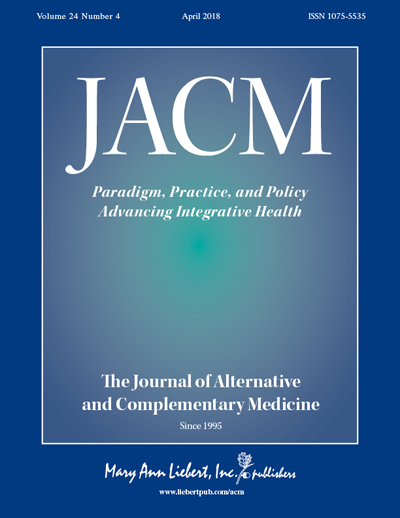
Randomised Controlled Trial
A combined treatment of soy and hop extract is a safe and effective alternative to traditional hormone replacement therapy for improving postmenopausal symptoms.
Kim HI, Kim MK, Lee I, Yun J, Kim EH, Seo SK
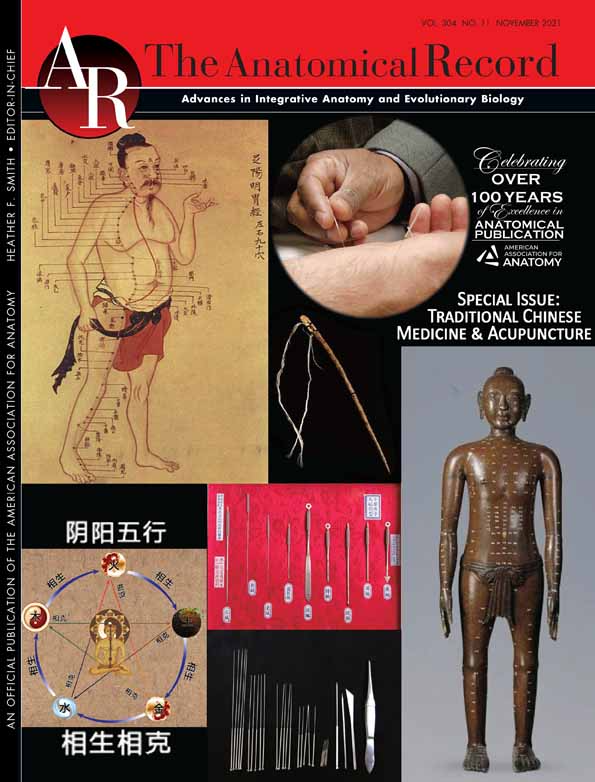
Systematic Review
Acupuncture, either alone or combined with antidepressants can effectively treat depression, and offers faster onset and longer-lasting efficacy compared to antidepressants.
Zhang Z, Li S, Meng H, Wang Y, Zhang Y, Wu M, Chen Y, Rong P, Wang Y

Review Article
Acupuncture therapy could potentially serve as an effective supplementary treatment method for psoriasis.
Jing M, Shi L, Zhang Y, Zhu M, Yuan F, Zhu B, Chen M, Ge X

Systematic Review
Treatment of rheumatoid arthritis using acupuncture with Western medicine was associated with higher efficacy and lower risks than treatment with Western medicine alone.
Huo X, Liang L, Ding X, Bihazi A, Xu H
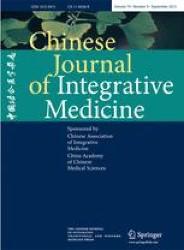
Systematic Review
Chinese herbal medicine presents beneficial effects in controlling disease activity and lowering glucocorticoid dosage in systemic lupus erythematosus patients.
Wang Y, Han M, Pedigo CE, Xie Z, Wang W, Liu J

Systematic Review
Acupuncture is an effective approach for hyperemesis gravidarum and has a great potential to mitigate ketonuria, ease nausea and vomiting, increase food intake, and shorten the hospital stay.
Haizhen Lu, Chengwen Zheng, Yanmei Zhong, Linhao Cheng, Yi Zhou
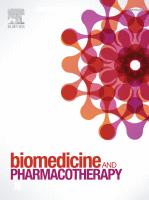
Randomised Controlled Trial
Qing-Chang-Hua-Shi (QCHS) granules, a Chinese herbal formula, have shown significant efficacy in improving clinical remission and mucosal healing in moderately active ulcerative colitis patients.
Shen H, Zhang S, Zhao W, Ren S, Ke X, Gu Q, Tang Z, Xie J, Chen S, Chen Y, Zou J, Zhang L, Shen Z, Zheng K, Liu Y, Gu P, Cheng J, Hu J, Zhu L

Systematic Review
Acupuncture could be effective and safe for post-stroke cognitive impairment.
Xu Kuang, Wenjuan Fan, Jiawei Hu, Liqun Wu, Wei Yi, Liming Lu, Nenggui Xu

Systematic Review
Traditional Chinese medicine infant massage can reduce the symptoms of constipation in children suffering from functional constipation.
Zhi Liu, Li Gang, Ma Yunwei, Ling Lin

Systematic Review
The addition of CHM to clomiphene may improve pregnancy rates.
Zhou K, Zhang J, Xu L, Lim CED

Systematic Review
Acupuncture can effectively improve the post voided residual urine, maximal cystometric capacity, and bladder capacity for first voiding desire values of patients with urinary retention after hysterectomy.
Zhao Q, Yan C, Dan M, Jia H
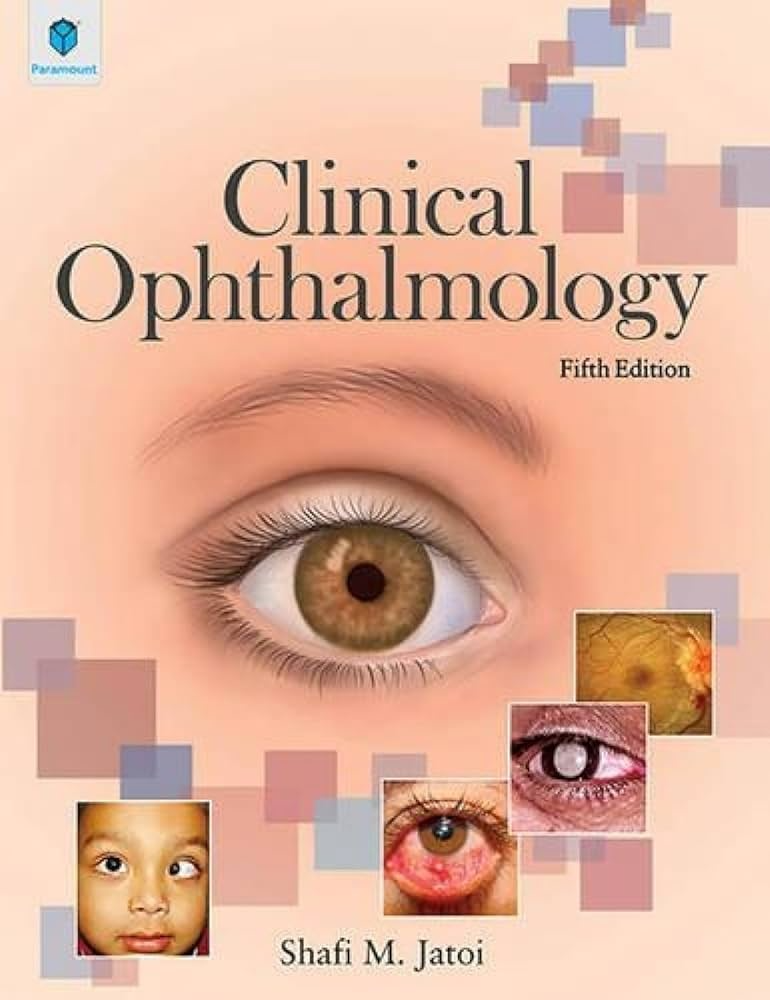
Review Article
Curcumin, with its anti-inflammatory, antioxidant, antimicrobial and antimutagenic properties, is a potential therapeutic agent for retinal diseases.
Nebbioso M, Franzone F, Greco A, Gharbiya M, Bonfiglio V, Polimeni A

Systematic Review
The comprehensive evaluation results show that scalp acupuncture is effective in treating insomnia.
Fu-gui Liu, Ai-hua Tan, Chao-qun Peng, Yun-xia Tan, Ming-chao Yao
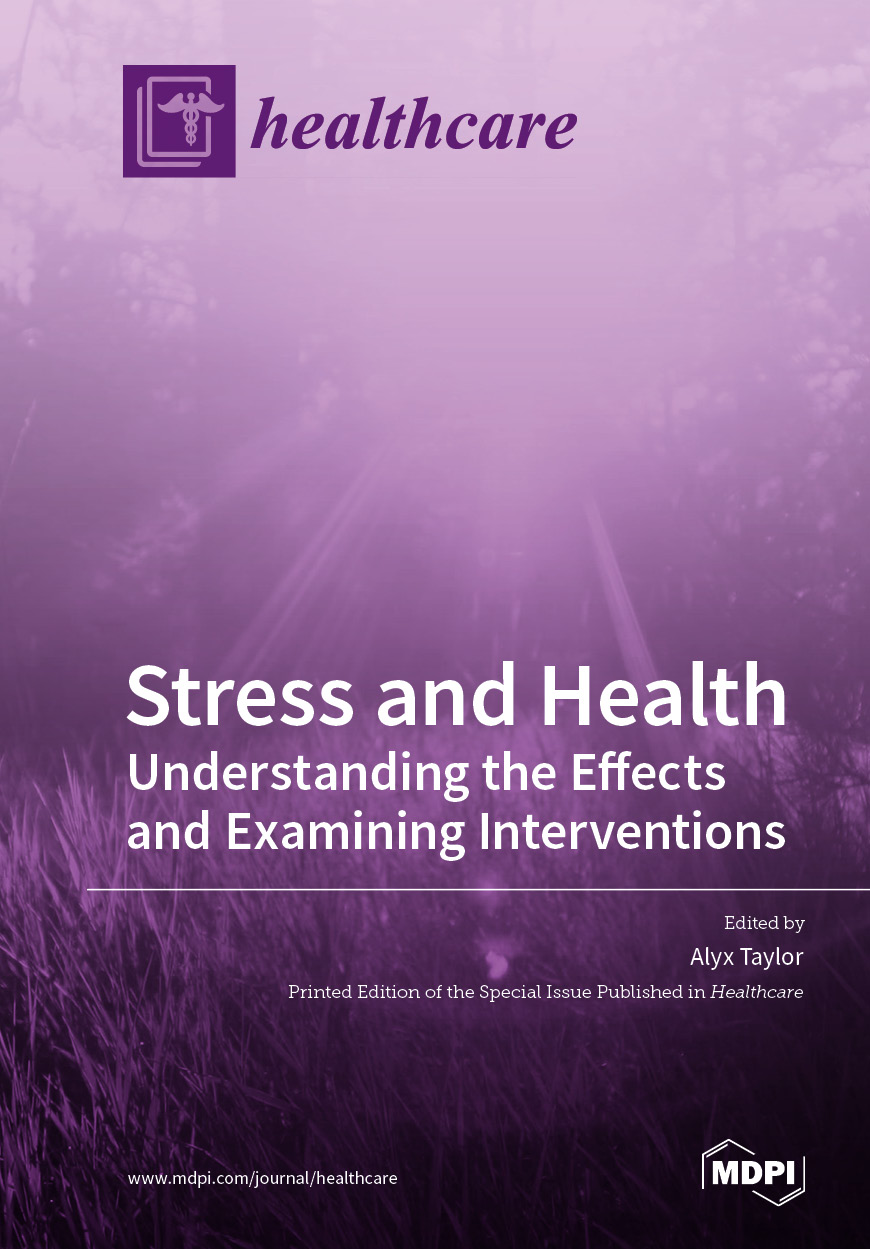
Systematic Review
Our updated systematic review and meta-analysis suggested that moxibustion has a positive effect on correcting breech presentation.
Liao J-A, Shao S-C, Chang C-T, Chai PY-C, Owang K-L, Huang T-H, Yang C-H, Lee T-J, Chen Y-C
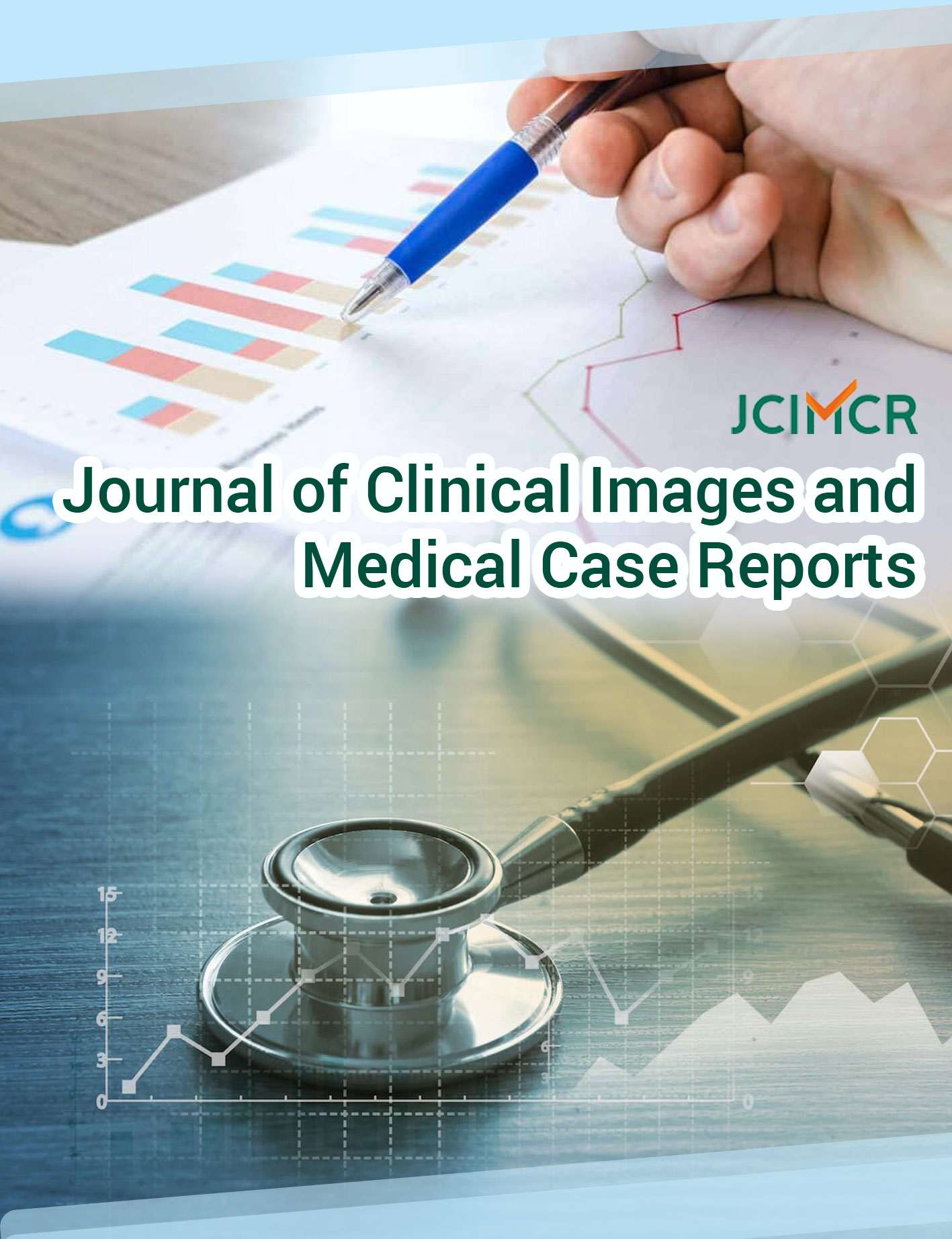
Systematic Review
Long Dan Xie Gan Decoction combined with valacyclovir appears to enhance the treatment of herpes zoster, improving pain intensity, and crust formation time.
Wang X, , Wu L, Hou Y, Ding S, Wang S, Zhang Y, Zhang G, , , , , ,

Systematic Review
Meta-analysis results showed that Tuina was superior to drugs for improving the effectiveness rate for tension-type headache.
Fan Z, Di A, Huang F, Zhao S, Qiu M, Wu C, Huang C, Guo R, Tian Q, Wu S

Systematic Review
Acupuncture alone or traditional Chinese medicines (taken orally) in combination with western medicine significantly increased the pregnancy rate of PCOS patients and CAM was more effective than western medicine alone for improving hormone levels.
Jiayu Hu, Wenhua Shi, Jiayue Xu, Shaoxuan Liu, Siya Hu, Wenjing Fu, Jing Wang and Fengjuan Han
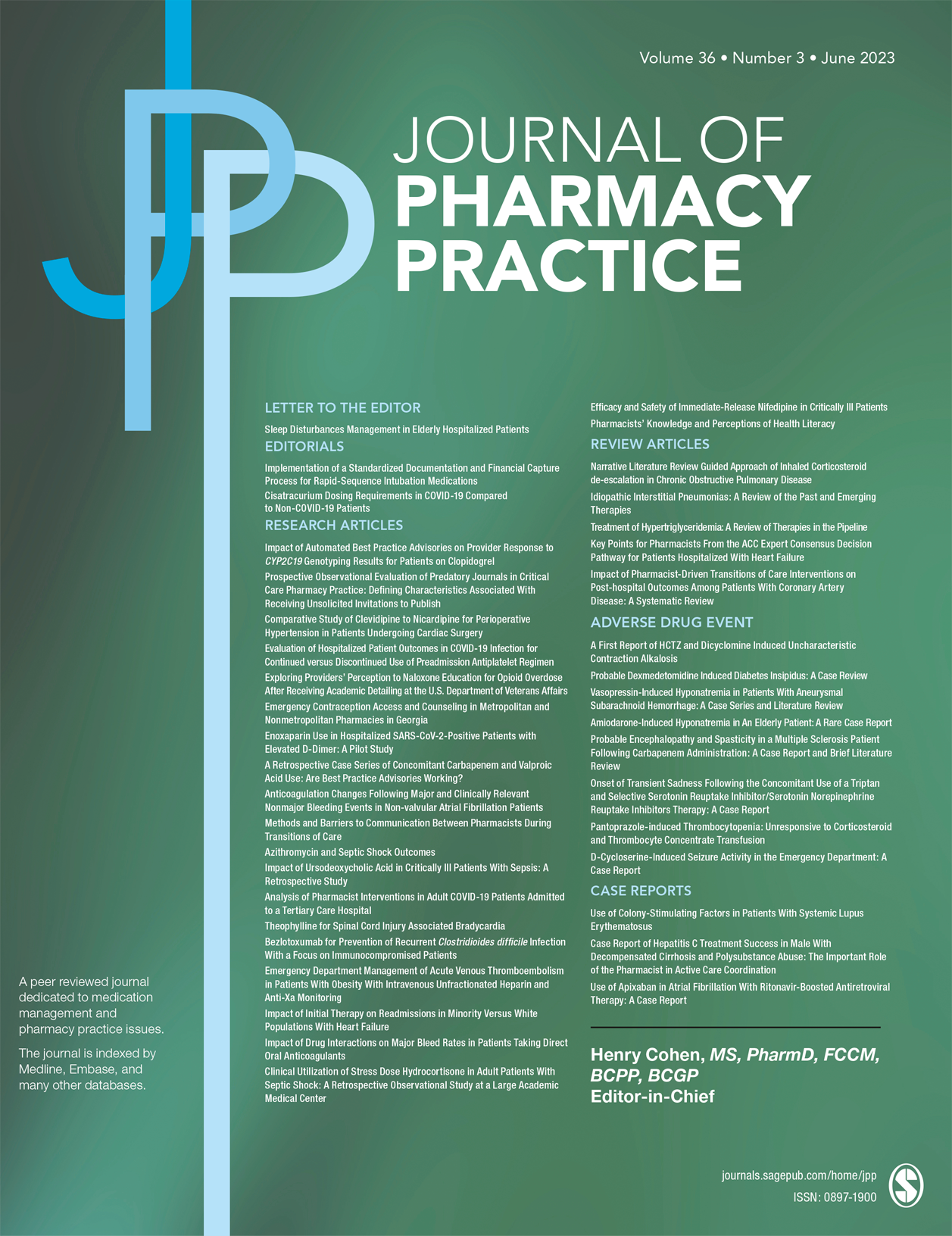
Systematic Review
Black cohosh indicated potential benefits in hormone regulation and endometrial thickness, alongside safety in short-term use.
Fan CW, Cieri-Hutcherson NE, Hutcherson TC

Systematic Review
Acupuncture, moxibustion and Chinese herbal medicines are the most commonly used complementary and alternative medicine in the treatment of female infertility.
Feng J, Wang J, Zhang Y, Zhang Y, Jia L, Zhang D, Zhang J, Han Y, Luo S

Meta-Analysis
The evidence supports that acupuncture can be considered in the treatment of cough-variant asthma as an adjuvant therapy.
Xiong J, Qi WC, Yang H, Zou ST, Kong J, Wang CL, Zhou YF, Liang FR

Systematic Review
The use of Yu Ping Feng San for pediatric allergic rhinitis appears relatively safe compared to Western medical therapy yet its routine use remains unsupported.
Liao Y, Zhong J, Liu S, Dai M, Liu Y, Li X, Yang Y, Zhang D, Lai D, Lu T, Zhang Q, Zhao Y

Review Article
Acupuncture, in its various forms, shows significant potential in alleviating pain and improving shoulder function in patients with rotator cuff disorders.
Choi S, Lee J, Lee S, Yang GY, Kim KH

Systematic Review
Moderate-quality evidence revealed an association between acupressure and greater pain relief compared with physical therapy.
Tao Li , Xiaohui Li ,Fan Huang , Qiang Tian , Z. Y. Fan , and S. Wu
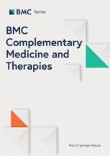
Systematic Review
Raspberry leaf for childbirth, highlighting the lack of robust evidence on its effects, safety, and efficacy during pregnancy, emphasizing the need for more comprehensive research.
Bowman R, Taylor J, Muggleton S, Davis D

Systematic Review
Acupuncture therapy on patients with recurrent implantation failure can improve the pregnancy outcome of patients. It is a relatively effective treatment with satisfactory safety and suitable for clinical application.
Li, M., Liu, Y., Wang, H., Zheng, S., Deng, Y., & Li, Y.

Systematic Review
Gui Zhi Decoction and associated formulas significantly improve the effectiveness of allergic rhinitis treatments when used alone or combined with Western medicine.
Yang S, Fu Q, Deng H, Wu J, Zhang Q, Wang L, Yao X

Systematic Review
Traditional Chinese medicines might have various beneficial effects for non-alcoholic fatty liver disease such as improving TCM syndrome score, liver function, and body lipid profile.
Liang Z, Chen X, Shi J, Hu H, Xue Y, Ung COL

Systematic Review
Traditional Chinese medicines such as Shenge formula, Shugan Jianpi Huatan decoction and Heze lipid lowing oral liquid decoction might have positive effects on NAFLD by improving TCM syndrome scores, liver function, and body lipid profile.
Liang, Z., Chen, X., Shi, J. et al.
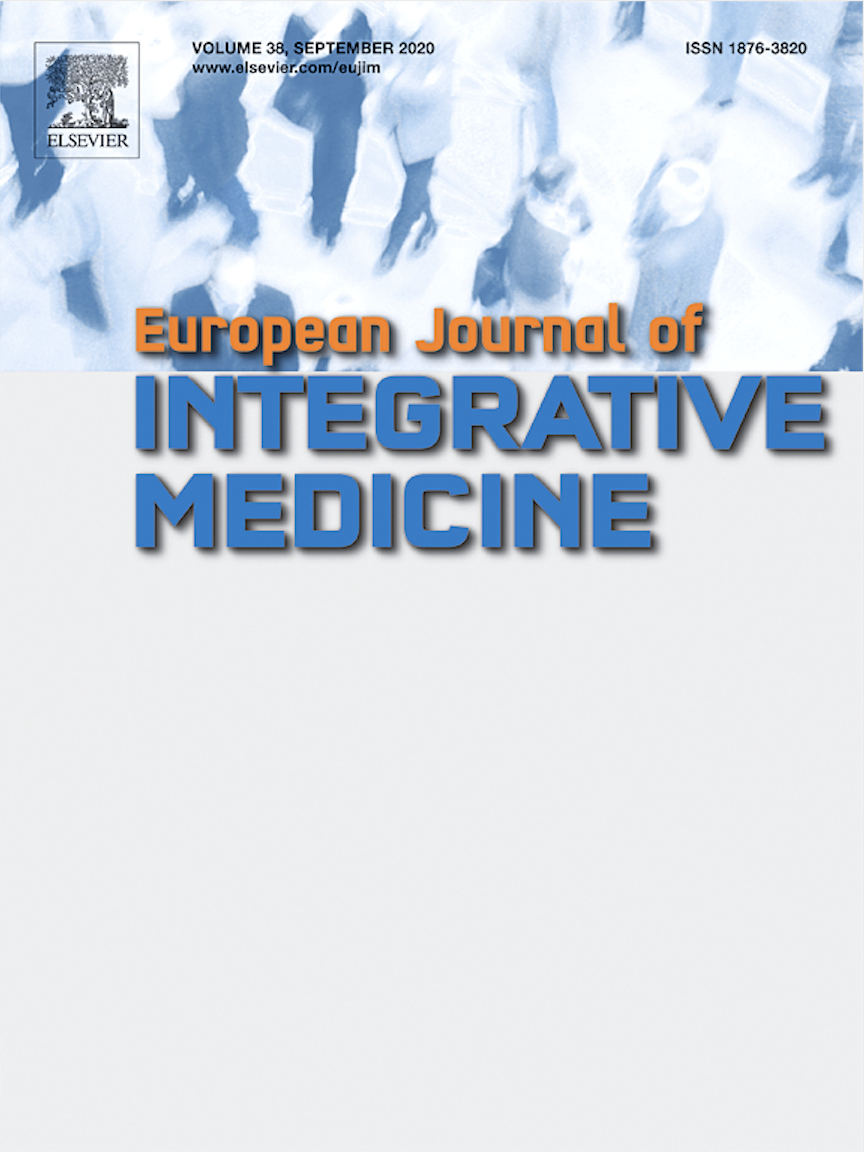
Systematic Review
Acupuncture has beneficial effects on effectiveness, cognitive ability, and activities of daily living in the treatment of dementia.
Shao S, Tang Y, Guo Y, Tian Z, Xiang D, Wu J

Systematic Review
Chinese herbal medicine seems to be as effective as flunarizine in reducing the frequency of migraines in adults.
Lyu S, Zhang CS, Guo X, Zhang AL, Sun J, Lu C, Xue CC, Luo X

Systematic Review
Based on moderate certainty of evidence, we conclude that acupuncture is mildly more effective and much safer than medication for the prophylaxis of migraine.
Giovanardi CM, Cinquini M, Aguggia M, Allais G, Campesato M, Cevoli S, Gentili F, Matrà A and Minozzi S
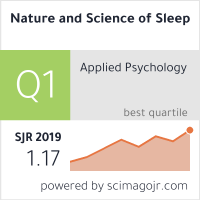
Randomised Controlled Trial
Ten sessions of electroacupuncture can improve the sleep quality of patients with insomnia without serious adverse effects.
Lee B, Kim BK, Kim HJ, Jung IC, Kim AR, Park HJ, Kwon OJ, Lee JH, Kim JH.

Network Pharmacology
Kushen-based traditional Chinese medicine formulations show considerable potential and effectiveness in treating ulcerative colitis with meaningful improvement in clinical remission rate.
Chen M, Ding Y, Tong Z

Randomised Controlled Trial
DKB114, a mixture of Linn flower extract, effectively reduces serum uric acid level, suggesting its potential as a dietary supplement for hyperuricemia treatment.
Park YH, Kim DH, Lee JS, Jeong HI, Lee KW, Kang TH

Meta-Analysis
Acupuncture at ST25 appears to be more effective than lactulose in the treatment of functional constipation.
Li P, Luo Y, Wang Q, Shu S, Chen K, Yu D, Fan C.
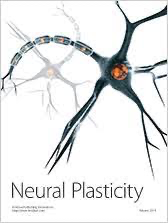
Systematic Review
Acupuncture treatment can improve the clinical effectiveness of diarrhea-predominant irritable bowel syndrome or functional diarrhea.
Jianbo Guo, Xiaoxiao Xing, Jiani Wu, Hui Zhang, Yongen Yun, Zongshi Qin, and Qingyong He

Systematic Review
Acupuncture was superior to sham/placebo acupuncture in treating insomnia.
Zhang J, He Y, Huang X, Liu Y, Yu H

Systematic Review
In a meta-analysis of 14 trials with 1030 women, acupoint stimulation and Chinese Herbal Medicine were effective in improving menstrual cycles, perimenopausal symptoms, and sex hormone levels in comparison to Hormone Replacement Therapy.
Li Y, Xia G, Tan Y, Shuai J
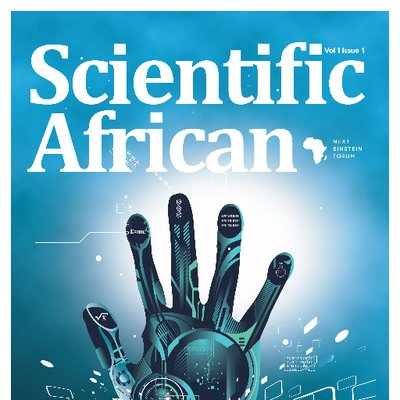
Review Article
Pumpkin seeds carry bioactive compounds with antidiabetic, antidepressant, antioxidant, antitumor, and cytoprotective activities, also aiding in microbiological infections and specific organ disorders.
Dotto JM, Chacha JS

Systematic Review
Ban Xia Xie Xin decoction has shown superior effectiveness and safety for treating chronic atrophic gastritis than patent medicine plus western medicine.
Cao Y, Zheng Y, Niu J, Zhu C, Yang D, Rong F, et al.

Randomised Controlled Trial
Supplementation with a kudzu flower and mandarin peel extract dose of 1150 mg/day seems to be an acceptable option for reducing hot flashes symptoms, as well as improving bone turnover, compared with the placebo group, during the menopausal transition.
Kim JE, Jeong H, Hur S, Lee J, Kwon O.

Randomised Controlled Trial
The use of Chinese herbal formula granules appears to improve kidney function in stage 3 chronic kidney disease patients.
Zhao J, Sun W, Chen J, Sun Z, Chen D, Cao C, Yang M, Ma J, Wang L, Xing C, Chen Y, Sheng M, Zhou E, Xu L, Gao K, Liu L, Liu Q, Yi L, He W, Zhu Y
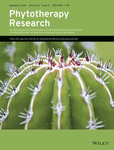
Systematic Review
Zuo Gui Wan combined with anti-osteoporosis drugs may have beneficial effects on osteoporosis with respect to bone mineral density and bone metabolism markers.
Li J, Sun K, Qi B, Feng G, Wang W, Sun Q, Zheng C, Wei X, Jia Y

Systematic Review
Acupuncture could significantly relieve pain and increase cure rate for acute ankle sprain, even producing improved results when combined with other therapies.
Liu AF, Gong SW, Chen JX, Zhai JB

Systematic Review
Acupuncture is beneficial in the treatment of metabolic syndrome and could serve as an alternative therapy for metabolic syndrome-associated conditions.
Li X, Jia HX, Yin DQ, Zhang ZJ

Systematic Review
Our meta-analysis provides promising evidence to suggest that using the Tonifying-Kidney principle combined with western medicines for primary osteoporosis is more effective than using western medicines alone.
Liang J, Wang F, Huang J, Xu Y, Chen G
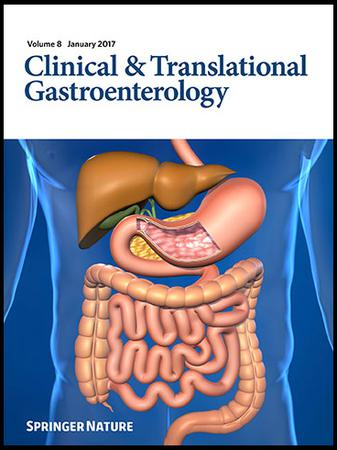
Randomised Controlled Trial
Jia Wei Xiao Yao Wan showed an improvement in gastrointestinal symptoms for patients with functional dyspepsia who resisted conventional treatments.
Chen G, Feng P, Wang S, Ding X, Xiong J, Wu J, Wang L, Chen W, Chen G, Han M, Zou T, Li L, Du H

Systematic Review
Gua sha therapy may be more effective than hot packs with massage for reducing breast pain.
Zakarija-Grkovic I, Stewart F

Systematic Review
Du Huo Ji Sheng Decoction monotherapy or combined with antiosteoporosis drugs may have beneficial effects for postmenopausal osteoporosis.
Li J, Wang W, Feng G, Du J, Kang S, Li Z, Zhu W, Shang H

Review Article
Traditional Chinese medicine impacts on the prevention and treatment of influenza with potential value in shorting fever durations and alleviating influenza symptoms among children and pregnant women.
Xiong Y, Li NX, Duan N, Liu B, Zhu H, Zhang C, Li L, Lu C, Huang L
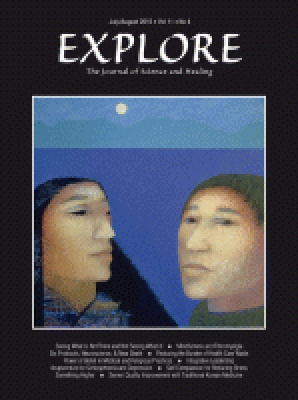
Systematic Review
Modified Tao-Hong Siwu Tang (MTST) appears more effective than non-steroidal anti-inflammatory drugs (NSAIDs), and a combination of Tao-Hong Siwu Tang with oral contraceptives (OCs) offers benefits over OCs alone for treating primary dysmenorrhea.
Ji HR, Park KS, Woo HL, Lee MJ, Yoon JG, Lee HJ, Hwang DS, Lee CH, Jang JB, Lee JM

Randomised Controlled Trial
Combining acupuncture via shu-stream acupoints with the Chinese herbal formulation Dang Gui Yin Zi presents a potentially effective treatment for Chronic Spontaneous Urticaria.
Qin Y, Guo J, Song P, Hou T, He Y, Han M, Yu Q, Lin W, Chen M, Su H
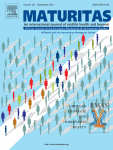
Systematic Review
Siwutang (including its derived formulas) appears to be superior to conventional Western medicine for pain relief and in relation to response rate.
Li G, Liu A, Lin M, Liao S, Wen Z
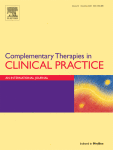
Systematic Review
This review discovered that acupuncture might be a safe and effective adjuvant therapy for individuals with poststroke spastic hemiplegia.
Fan W, Kuang X, Hu J, Chen X, Yi W, Lu L, Xu N, Wang L.
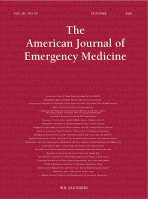
Systematic Review
Chinese medicine combined with conventional treatment significantly improved clinical efficacy, increased viral nucleic acid negative conversion rate, prominently reduced pulmonary inflammation, and improved host immune function.
Sun, C. Y., Sun, Y. L., & Li, X. M.

Systematic Review
Acupuncture shows promise in treating postcholecystectomy syndrome.
Yin Z, Xiao Q, Xu G, Cheng Y, Yang H, Zhou J, Fu Y, Chen J, Zhao L, Liang F
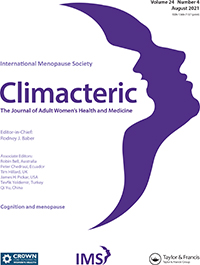
Systematic Review
Menopause symptoms, menopausal hormone therapy (MHT), and acupuncture's efficacy and safety, supported by clinical evidence, with a focus on traditional Chinese medicine practices.
Y. Qin, X. Ruan, R. Ju, J. Pang, G. Zhao & X. Hu

Review Article
Magnesium sulfate-rich natural mineral waters are effective and safe as a natural treatment for functional constipation.
Dupont C, Hébert G

Systematic Review
Cupping therapy, as an adjunct to current treatments, may potentially enhance efficacy when treating patients with chronic urticaria.
Xiao, X., Zhang, L., Shi, Y., Yao, J., Cao, W., Liu, Y., Zou, Z., Zhou, S., Chen, M., Li, C., Zheng, Q., & Li, Y.

Systematic Review
Current evidence suggests that acupuncture is an efficient and safe treatment for functional constipation.
Wang, Lu; Xu, Mingmin; Zheng, Qianhua; Zhang, Wei; Li, Ying.

Systematic Review
Compared with the sham acupuncture group, the acupuncture group had greater improvements in the frequency of migraine attacks, VAS score, and treatment efficiency.
Ou MQ, Fan WH, Sun FR, Jie WX, Lin MJ, Cai YJ, Liang SY, Yu YS, Li MH, Cui LL, Zhou HH
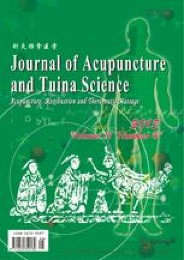
Systematic Review
In the treatment of knee osteoarthritis, the acupuncture group had significant advantages over sham acupuncture or no-acupuncture groups in relieving pain and improving physical function.
Wang, Tt., Liu, Y., Ning, Zy. et al.

Meta-Analysis
Oral treatment with Six Gentlemen Decoction with Aucklandia and Amomum (SGDAA), a traditional Chinese medicine, significantly improves the treatment of Ulcerative colitis compared to conventional Western medicine.
Yuan H, Zhang T, Huang S, Zhou J, Park S
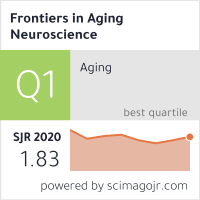
Systematic Review
Acupuncture plus drug therapy may have a more beneficial effect for Alzheimer's disease patients than drug therapy alone on general cognitive function in the short and medium term and on Activities of Daily Living scores in the medium term.
Wang, Y. Y., Yu, S. F., Xue, H. Y., Li, Y., Zhao, C., & Jin, Y. H.

Randomised Controlled Trial
Acupuncture was shown to significantly improve the sleep quality in pregnant women, possibly through increasing melatonin secretion.
Foroughinia S, Hessami K, Asadi N, Foroughinia L, Hadianfard M, Hajihosseini A, Pirasteh N, Vossoughi M, Vafaei H, Faraji A, Kasraeian M, Doroudchi M, Rafiee Monjezi M, Roozmeh S, Bazrafshan K.

Systematic Review
This systematic review and meta-analysis provides evidence that acupuncture moxibustion therapy is serviceable and safe in treating breast cancer-related lymphedema.
Huimin Jin, Yuying Xiang, Yuqian Feng, Yiting Zhang, Shan Liu, Shanming Ruan, Huamiao Zhou

Systematic Review
The current evidence suggests that acupuncture and moxibustion is more effective than ibuprofen or Fenbid in the treatment of primary dysmenorrhoea.
Jun Yang, Jun Xiong, Ting Yuan, Xue Wang, Yunfeng Jiang, Xiaohong Zhou, Kai Liao, Lingling Xu

Systematic Review
Acupuncture on treating chronic fatigue syndrome has the advantage for efficacy and safety compared to conventional treatments such as drugs, counselling psychology and physical therapy.
Yin ZH, Wang LJ, Cheng Y, Chen J, Hong XJ, Zhao L, Liang FR.
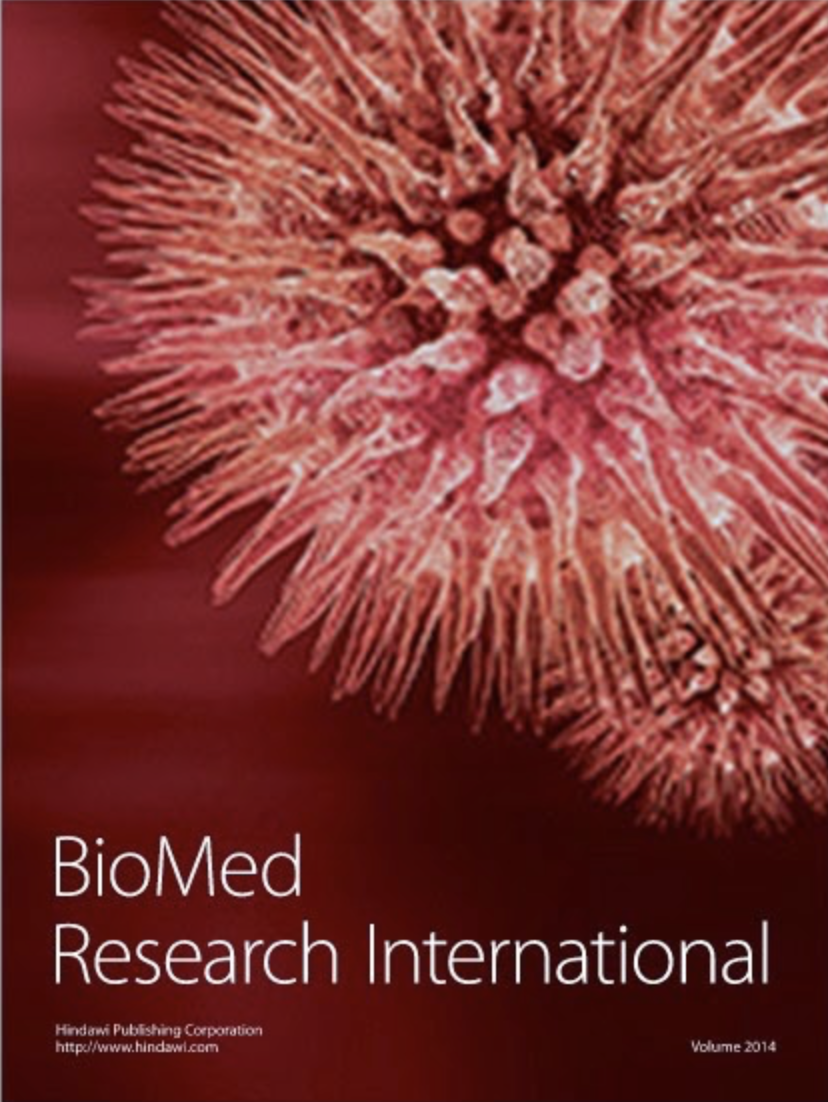
Systematic Review
Acupuncture may be an effective and safe treatment in obstructive sleep apnea patients.
Liaoyao Wang, Jia Xu, Yijun Zhan, Jian Pei
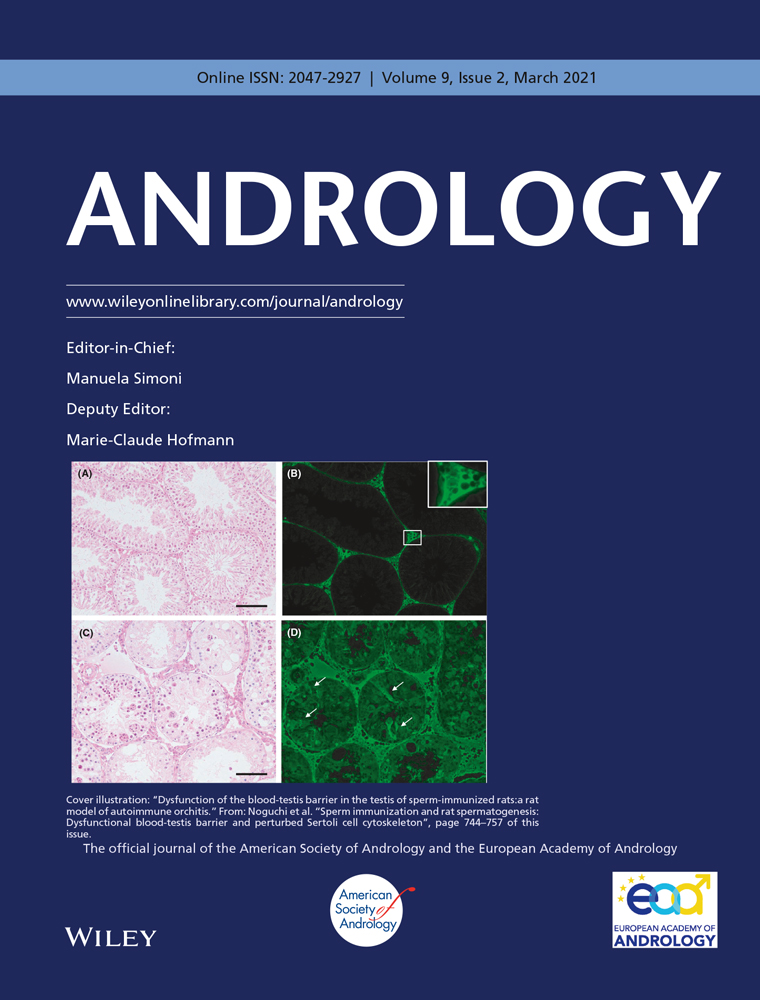
Systematic Review
Traditional Chinese Medicine when combined with vitamins significantly improves sperm characteristics and pregnancy rates in male infertility treatment.
Wang M, Wang Q, Du Y, Jiang H, Zhang X
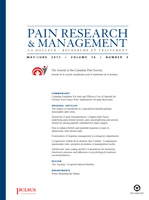
Systematic Review
Acupuncture reduced more headache days and the times of using painkiller and was more effective in reducing the frequency and degree of headache than western medicine and sham acupuncture.
Li YX, Xiao XL, Zhong DL, Luo LJ, Yang H, Zhou J, He MX, Shi LH, Li J, Zheng H, Jin RJ

Systematic Review
Apple vinegar consumption has potential health benefits, including weight loss and lower blood glucose levels, with seemingly insignificant side effects.
Launholt TL, Kristiansen CB, Hjorth P

Systematic Review
Green tea, containing antioxidative catechins, may possess some beneficial effects in reducing the risk of specific types of cancer.
Filippini T, Malavolti M, Borrelli F, Izzo AA, Fairweather-Tait SJ, Horneber M, Vinceti M

Systematic Review
Acupuncture enhances Luteinized Unruptured Follicle Syndrome (LUFS) ovulation, hormone levels, artery characteristics.
Xiaojuan Liu, Wenying Shi, Zhifeng Liu, Shuqing Shi, Chao Ke, Peiming Zhang, Zhenyu Tan, Wei Zhang

Randomised Controlled Trial
Electroacupuncture might provide stronger impact on knee osteoarthritis than manual acupuncture, though both methods are safe and feasible treatments.
Wang TQ, Li YT, Wang LQ, Shi GX, Tu JF, Yang JW, Hou YQ, Lin LL, Sun N, Zhao JJ, Hou HK, Liu CZ

Systematic Review
The use of acupuncture in the management of perimenopausal depression is safe, effective, and offers long-lasting benefits relative to antidepressants and HRT.
Xiao X, Zhang J, Jin Y, Wang Y, Zhang Q
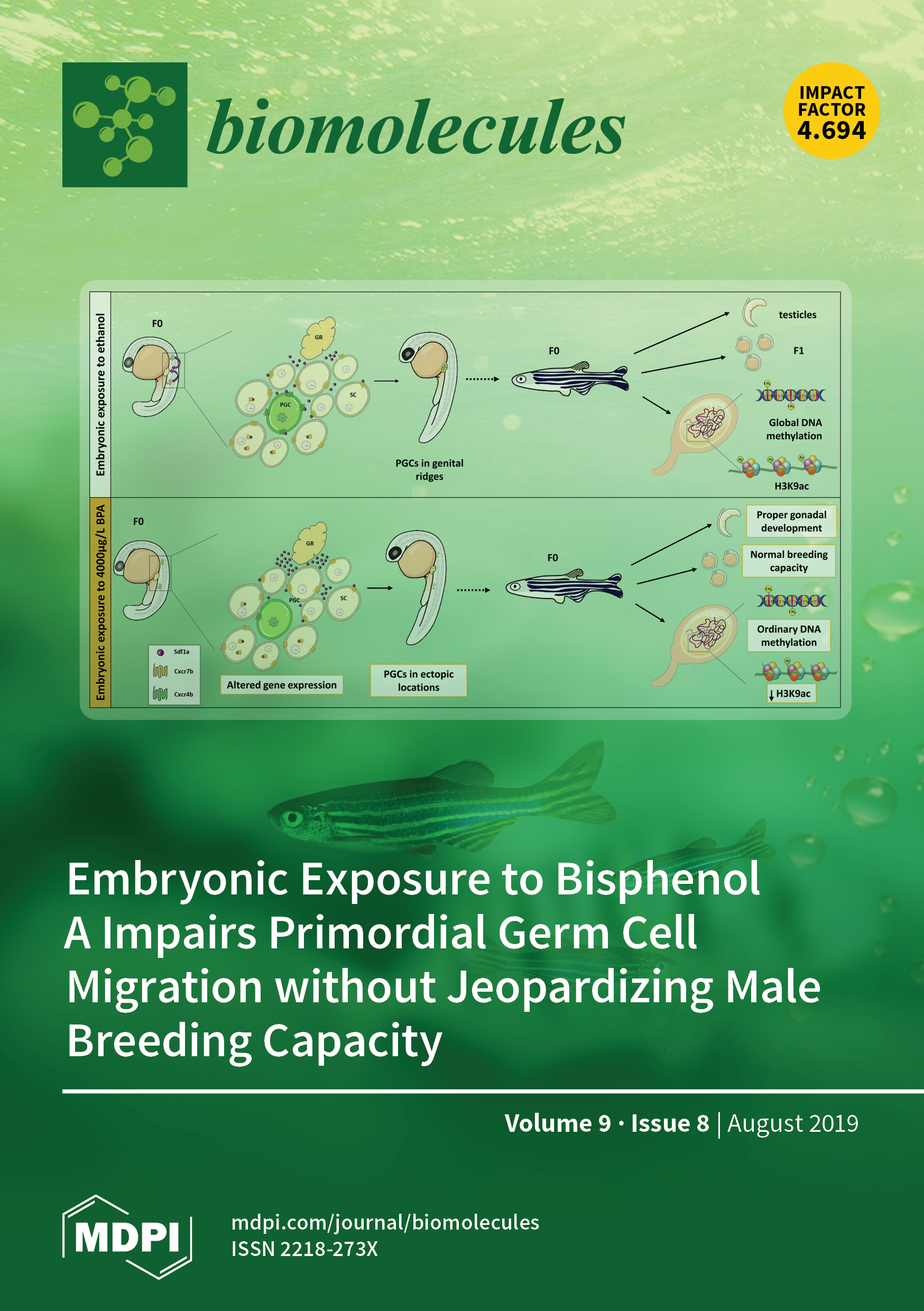
Review Article
Avocado and soybean unsaponifiables may effectively reduce inflammation and symptoms related to osteoarthritis, autoimmune diseases, and menopause.
Salehi B, Rescigno A, Dettori T, Calina D, Docea AO, Singh L, Cebeci F, Özçelik B, Bhia M, Dowlati Beirami A, Sharifi-Rad J, Sharopov F, C. Cho W, Martins N

Randomised Controlled Trial
Consuming walnuts daily can reduce cardiovascular risk factors in chronic kidney disease patients without altering significant physiological levels.
Sanchis P, Molina M, Berga F, Muñoz E, Fortuny R, Costa-Bauzá A, Grases F, Buades JM

Systematic Review
Meta-analysis showed that acupuncture was comparable to drugs in the reduction of overactive bladder symptoms.
Mak TC, Chen HY, Cho WC

Systematic Review
A combination of peppermint oil and caraway oil is an effective and safe short-term treatment for functional dyspepsia.
Juanjuan Li, Lin Lv, Jiaqi Zhang, Lin Xu, Enjin Zeng, Zedan Zhang, Fengyun Wang, Xudong Tang

Systematic Review
Acupuncture has the advantage for acute and preventive treatment of migraine in pain improvement and safety.
Xia-tian Zhang, Xin-yi Li, Chen Zhao, Ye-yin Hu, Yi-yi Lin, He-qing Chen, Zhao-feng Shi, Xiao-yu Zhang, Hong-cai Shang, Gui-hua Tian
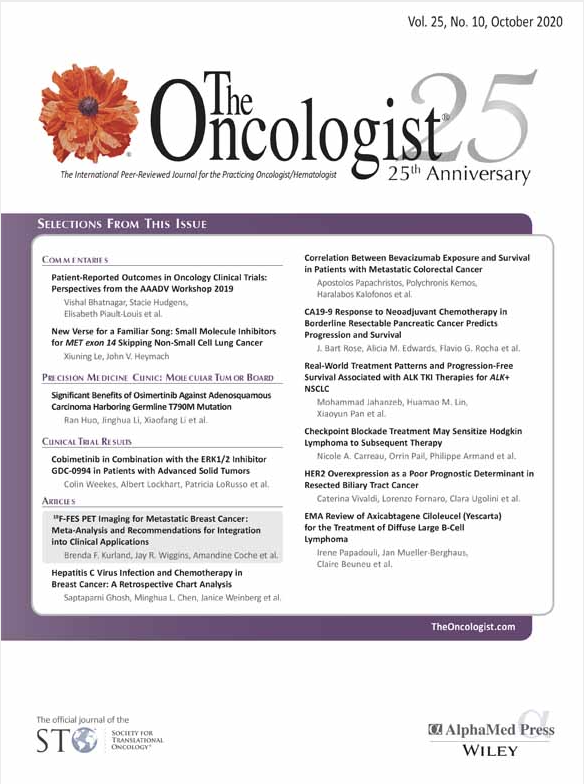
Randomised Controlled Trial
Acupuncture treatment significantly improves neuropathic symptoms in women suffering from chemotherapy-induced peripheral neuropathy after breast cancer therapy.
Lu W, Giobbie-Hurder A, Freedman RA, Shin IH, Lin NU, Partridge AH, Rosenthal DS, Ligibel JA
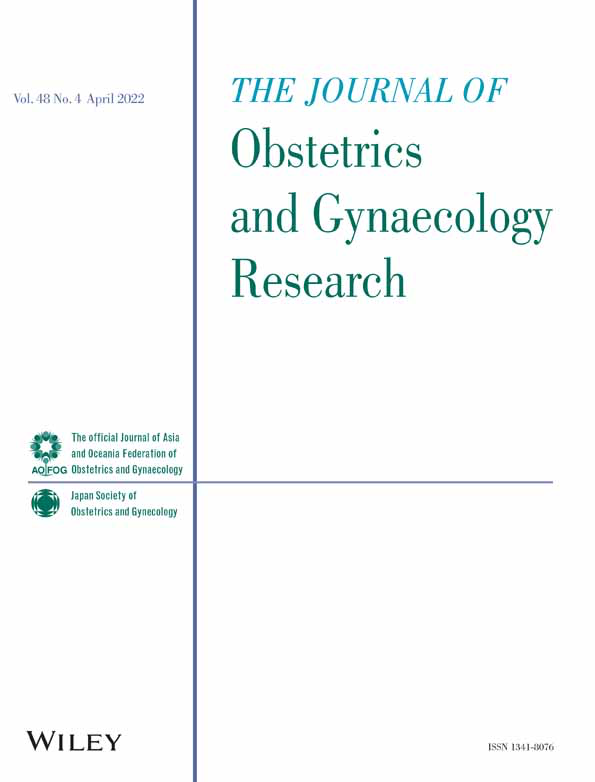
Systematic Review
Acupuncture intervention could significantly improve the treatment outcomes for breast cancer-related lymphedema, regardless of the control treatments used.
Hou W, Pei L, Song Y, Wu J, Geng H, Chen L, Wang Y, Hu Y, Zhou J, Sun J
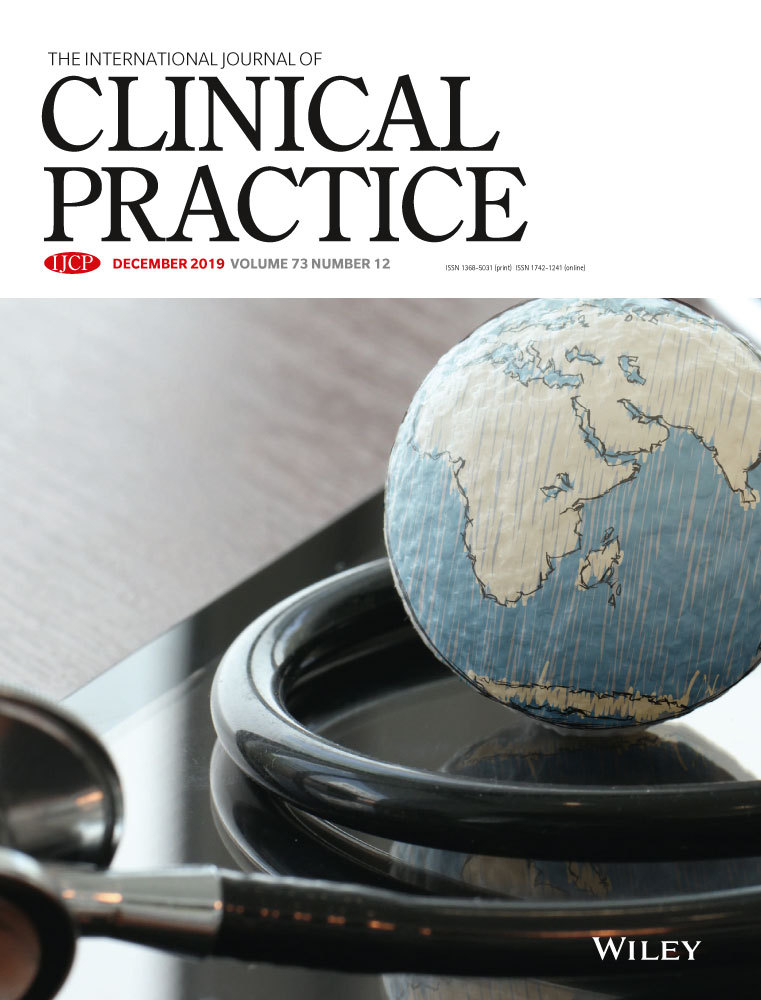
Systematic Review
Certain traditional herbal medicines used in east-Asia as adjuncts to conventional medications improved outcomes in acute and chronic asthma.
Allison Clyne,Angela Wei Hong Yang,Mingdi Li,Yutong Fei,Brian H May

Systematic Review
Acupuncture might be effective at reducing itch intensity and may be more effective than conventional medicine at reducing eczema area and severity index (EASI) and improving the global symptoms of atopic eczema.
Jiao R, Yang Z, Wang Y, Zhou J, Zeng Y, Liu Z
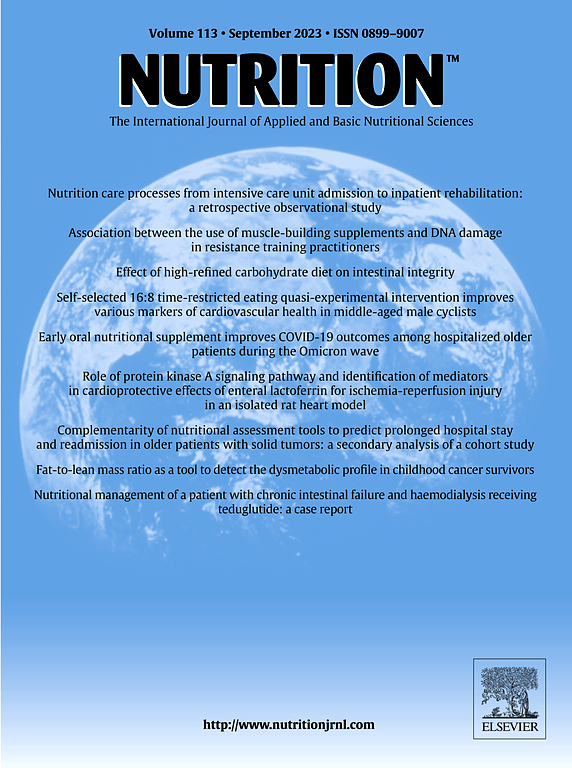
Clinical Study
Hépar mineral water, rich in sulphates and magnesium, effectively treats functional constipation, showing significant results within 7 days.
Dupont C, Constant F, Imbert A, Hébert G, Zourabichvili O, Kapel N
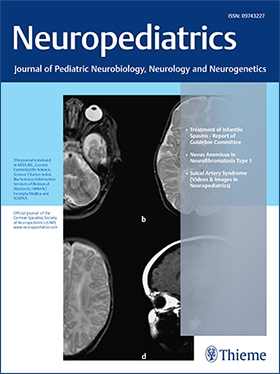
Review Article
Currently, acupuncture is considered to be a safe, helpful, and available alternative option for patients who have not responded to or complied with conventional pharmacotherapy.
Doll, E., Threlkeld, B., Graff, D., Clemons, R., Mittel, O., Sowell, M. K.
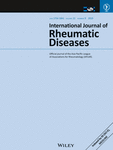
Systematic Review
Avocado-soybean unsaponifiables treatment is effective in reducing knee osteoarthritis symptoms without increasing adverse events, contrary to those with hip osteoarthritis.
Simental‐Mendía M, Sánchez‐García A, Acosta‐Olivo CA, Vilchez‐Cavazos F, Osuna‐Garate J, Peña‐Martínez VM, Simental‐Mendía LE

Systematic Review
According to high-quality outcomes, acupuncture had more total effective rate, short-term effective rate, and less adverse reactions than western medicine in treating knee osteoarthritis.
Li J, Li YX, Luo LJ, Ye J, Zhong DL, Xiao QW, Zheng H, Geng CM, Jin RJ, Liang FR
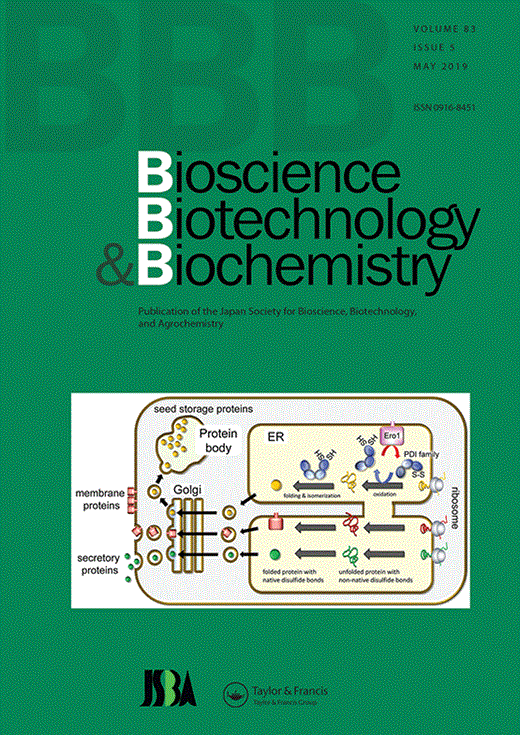
Randomised Controlled Trial
Adzuki bean extract administered once a day can result in increased HDL-C concentration.
Kitano-Okada T, Nagata R, Han KH, Mikami N, Satoh K, Nishihira J, Sasaki K, Ohba K, Fukusima M

Systematic Review
Acupuncture seems to be superior to drug therapy in the treatment of Bell's palsy including cure rate and total effective rate.
Zhang R, Wu T, Wang R, Wang D, Liu Q

Systematic Review
Acupuncture therapy seems effective for motor function, pain relief and activities of daily living in stroke patients with mild Shoulder-Hand Syndrome, when it is used in combination with rehabilitation.
Liu S, Zhang CS, Cai Y, Guo X, Zhang AL, Xue CC, Lu C
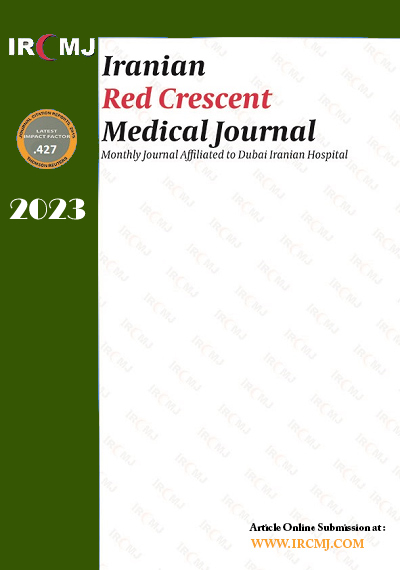
Randomised Controlled Trial
Peppermint oil capsules may significantly reduce the severity of premenstrual syndrome symptoms in reproductive-age women.
Agajani Delavar M, Ebrahimi S, Esmaeilzadeh S, Khamse A

Meta-Analysis
Chamomile has demonstrative positive effects on generalized anxiety disorders and sleep quality, but exhibits minimal impact on state anxiety and insomnia.
Hieu TH, Dibas M, Surya Dila KA, Sherif NA, Hashmi MU, Mahmoud M, Trang NTT, Abdullah L, Nghia TLB, Y MN, Hirayama K, Huy NT

Systematic Review
Chinese herbal medicine may be effective and safe for treating diabetic kidney disease, although evidence quality varies.
Zhang L, Yang L, Shergis J, Zhang L, Zhang AL, Guo X, Qin X, Johnson D, Liu X, Lu C, Xue CC, Mao W

Systematic Review
Acupuncture shows promise in improving endometrial receptivity and fertility outcomes in infertile women, but further high-quality research is needed to establish its effectiveness definitively.
Zhong, Y., Zeng, F., Liu, W. et al.

Meta-Analysis
Traditional Chinese Medicine (TCM), when used alongside Western Medicine (WM), seems to improve treatment outcomes for Crohn's disease.
Wang Y, Li M, Zha AS

Meta-Analysis
Massage therapy proves more beneficial in improving ADHD symptoms in children and adolescents than traditional Ritalin treatment.
Chen SC, Yu BYM, Suen LKP, Yu J, Ho FYY, Yang JJ, Yeung WF

Systematic Review
Acupuncture is an effective and safe treatment for patients with fibromyalgia. It may be more effective in relieving pain in both the short and long term compared with conventional medication.
Zhang X, Chen H, Xu W, Song Y, Gu Y, Ni G

Systematic Review
Acupuncture may have a significant effect on clinical pregnancy rates, independent of comparator group, when used in women who have had multiple previous IVF cycles, or where there was a low baseline pregnancy rate.
Smith, C. A., Armour, M., Shewamene, Z., Tan, H. Y., Norman, R. J., & Johnson, N. P.
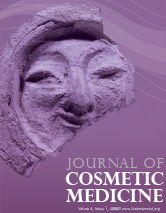
Systematic Review
The safety of cosmetic acupuncture appears tolerable, however, well-designed high-quality studies, are needed to determine its effects on facial cosmetic conditions.
Byung-Cheul Shin & Kyeong-Tae Lim

Systematic Review
Andrographis Paniculata (Chuan Xin Lian) appears beneficial and safe for relieving acute respiratory tract infection symptoms and shortening time to symptom resolution.
Hu XY, Wu RH, Logue M, Blondel C, Lai LYW, et al.
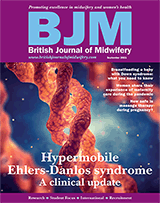
Systematic Review
Acupuncture in postpartum depression was at least as effective as fluoxetine hydrochloride, supporting the notion that acupuncture may be a safe and effective option.
Akari Komori, David Arthur, Samara Radford, Hsiewe Ying Tan, Li Zheng, Mira An, Rika Umeda, and Zhen Zheng

Systematic Review
Herbal medicines for labor induction show effectiveness
Zamawe C, King C, Jennings HM, Mandiwa C, Fottrell E

Systematic Review
Chinese herbal medicine combined with moxibustion might be beneficial for treating PCOS, and the treatment might improve the therapeutic effects of conventional western medications including clomiphene citrate, oral contraceptives, and/or metformin.
Kwon, Chan-Young, Lee, Boram, Park, Kyoung Sun

Systematic Review
There is potential of acupuncture combined with conventional treatment for treating female chronic pelvic pain.
Sung SH, Sung ADM, Sung HK, An TEB, Kim KH, Park JK
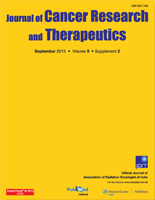
Systematic Review
The use of acupuncture as an adjunct to ameliorate hot flashes is still a relatively sound treatment for breast cancer patients.
Wang XP, Zhang DJ, Wei XD, Wang JP, Zhang DZ.

Systematic Review
Acupuncture may reduce overall mood and physical PMS symptoms when compared to sham. Acupressure may reduce the number of women having moderate to severe PMS symptoms when compared to sham acupressure.
Armour M, Ee CC, Hao J, Wilson TM, Yao SS, Smith CA

Systematic Review
There is limited evidence that acupuncture is safe and might be effective in pain relieving for patients with postherpetic neuralgia.
Wang, Yang., Li, Wang., Peng, Weina., Zhou, Jing., Liu, Zhishun
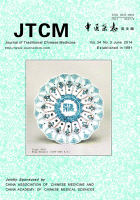
Systematic Review
Stimulating acupoints had positive effects on childhood cough variant asthma and was a relatively safe treatment.
Jin Yutong, Chen Shan, Xuan Lihua

Meta-Analysis
Our meta-analysis provides a new evidence supporting the efficacy and safety of acupuncture in treatment to post-stroke dysphagia in short-term compared with rehabilitation or medication.
Li, Lx., Deng, K. & Qu, Y.

Systematic Review
Moxibustion was found to be an effective and safe treatment improving symptoms and quality of life in patients with Benign Prostatic Hyperplasia.
Bae G, Lee S, Hong J, Lee I, Kim S, Choi J, Han C, Yun Y, Park S, Kwon J

Systematic Review
Acupuncture might reduce menstrual pain and associated symptoms more effectively compared to no treatment or NSAIDs.
Woo HL, Ji HR, Pak YK, Lee H, Heo SJ, Lee JM, Park KS

Review Article
Acupuncture effectively manages a range of post-spinal cord injury complications, including motor and sensory dysfunction, pain, neurogenic bowel and bladder, pressure ulcers, spasticity, and osteoporosis.
Qianqian, F., Omer, C., Lize, X., & Yun, X.

Systematic Review
Acupuncture alone is more effective in treating postpartum urinary retention than intramuscular injection of neostigmine, with good safety profile.
Xiao-Mei Wang, Jing Gong, Si-Cong Li, and Mei Han
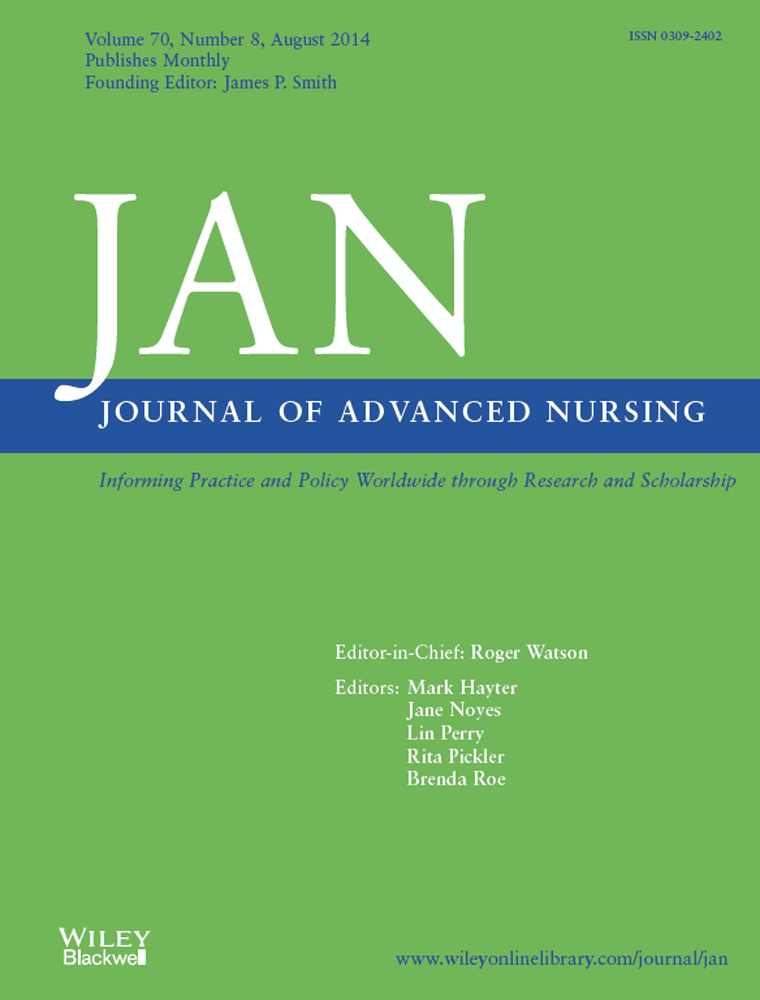
Systematic Review
Skin-patches of Chinese herbal medicine combined with Western medicine seemed to be more effective than Western medicine alone to reduce the pain scores of patients with acute gouty arthritis.
Wang HR, Fu Q, Liu Z, Li ML, Zhai SQ

Systematic Review
Compared with other therapies, acupuncture at ST38 appeared to reach a better therapeutic effectiveness in improving the recovery of shoulder joint mobility.
Yang C, Lv TT, Yu TY, Wong S, Lu MQ, Li YZ
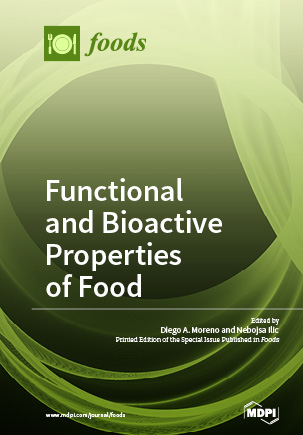
Systematic Review
Ginger emerges as a safe and effective treatment for nausea and vomiting in early pregnancy.
Stanisiere J, Mousset PY, Lafay S
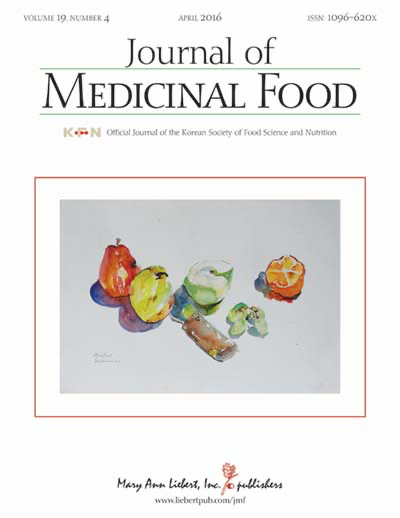
Randomised Controlled Trial
Tremella fuciformis, as a nutritional supplement, safely improved subjective memory complaints and cognitive functions in individuals suffering from subjective cognitive impairment.
Ban S, Lee SL, Jeong HS, Lim SM, Park S, Hong YS, Kim JE

Systematic Review
Ma Huang Tang may lower the duration of fever when it is used alone or in combination with neuraminidase inhibitors and may be a well-tolerated treatment.
Yoshino, T., Arita, R., Horiba, Y. et al

Systematic Review
Acupuncture has similar efficacy compared to pharmacotherapies for acne vulgaris, however acupuncture interventions reported less adverse effects and may be a treatment option.
Mansu SSY, Liang H, Parker S, Coyle ME, Wang K, Zhang AL, Guo X, Lu C, Xue CCL
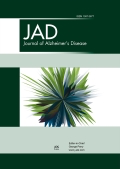
Systematic Review
Chinese herbal medicine as adjuvant therapy exerted an additive anti-vascular dementia benefit on Mini-Mental State Examination (MMSE) scores.
Xu, Qing-qing et al

Systematic Review
Acupuncture might have effect in decreasing the number of micturition episodes, incontinence episodes, and nocturia episodes.
Zhao Y, Zhou J, Mo Q, Wang Y, Yu J, Liu Z.

Systematic Review
Acupuncture might have effect in decreasing the number of micturition episodes, incontinence episodes, and nocturia episodes.
Zhao Y, Zhou J, Mo Q, Wang Y, Yu J, Liu Z

Systematic Review
Chai Hu Shu Gan San (a traditional Chinese Medicine) is a promising in treating depression, especially in post-stroke and postpartum cases.
Sun Y, Xu X, Zhang J, Chen Y
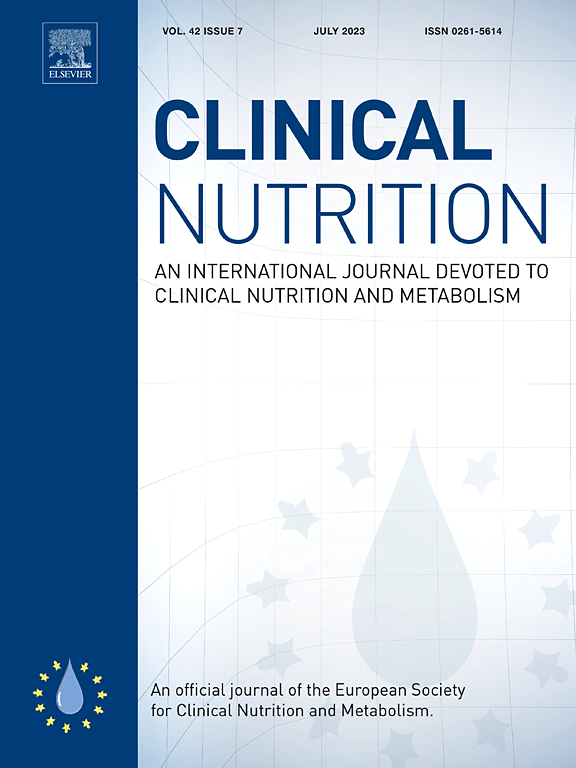
Randomised Controlled Trial
Green tea extract can potentially control pain and improve knee joint physical function in adults suffering from osteoarthritis.
Hashempur MH, Sadrneshin S, Mosavat SH, Ashraf A

Systematic Review
Evidence supports the use of acupuncture for menopause symptoms as an adjunctive or stand-alone treatment for reducing vasomotor symptoms and improving health-related quality of life outcomes.
Befus D, Coeytaux RR, Goldstein KM, McDuffie JR, Shepherd-Banigan M, Goode AP, Kosinski A, Van Noord MG, Adam SS, Masilamani V, Nagi A, Williams JW Jr.

Meta-Analysis
The herbal formula Modified Bu Zhong Yi Qi Tang significantly improves functional constipation symptoms with fewer adverse events.
Gong H, Qin F, He H
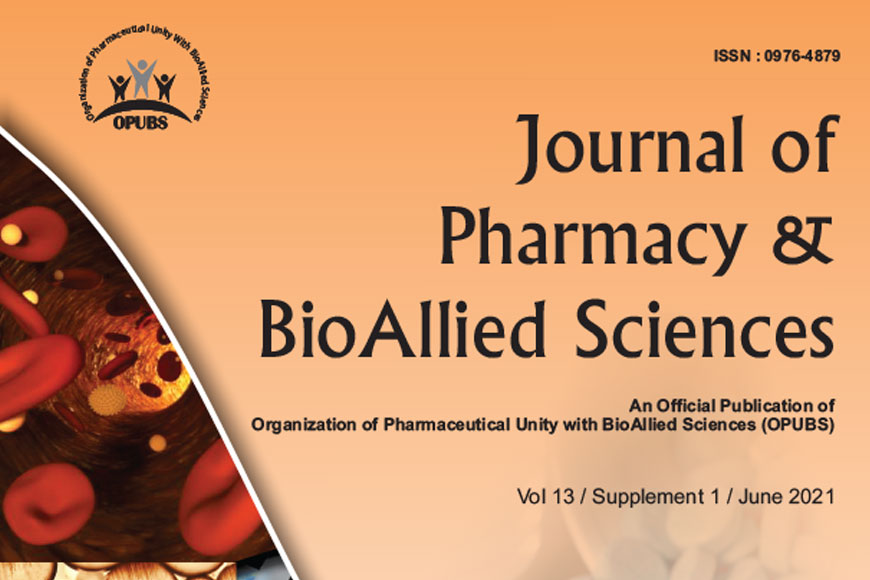
Review Article
Saffron possesses major bioactive compounds such as safranal, crocin, and picrocrocin that are hypothesized to be integral to its antidepressant effects.
Siddiqui MJ, Saleh MSM, Basharuddin SNBB, Zamri SHB, Mohd Najib MH, Che Ibrahim MZ, binti Mohd Noor NA, Binti Mazha HN, Mohd Hassan N, Khatib A

Systematic Review
Chinese herbal medicines showed greater improvement in terms of clinical efficacy in the treatment of irritable bowel syndrome with constipation than cisapride and mosapride.
Dan-yan Li , Yun-kai Dai , Yun-zhan Zhang, Meng-xin Huang, Ru-liu Li, Jia Ou-yang, Wei-jing Chen, Ling Hu

Systematic Review
Acupuncture may be effective at relieving chronic knee pain 12 weeks after acupuncture administration.
Zhang Q, Yue J, Golianu B, Sun Z, Lu Y.

Systematic Review
Yu Ping Feng San, a Chinese herbal medicine, combined with pharmacotherapy could be effective for treating allergic rhinitis in adults.
Luo Q, Zhang CS, Yang L, Zhang AL, Guo X, Xue CC, Lu C

Systematic Review
Acupuncture and acupressure show potential for improving cervical readiness and certain birthing outcomes, their impact on reducing caesarean section rates remains inconclusive.
Smith CA, Armour M, Dahlen HG
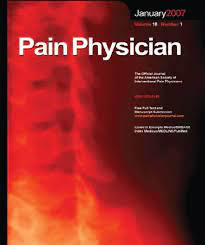
Meta-Analysis
The existing evidence suggests that most acupuncture therapies, including acupuncture combined with other therapies, are effective in decreasing pain and in improving physical function.
Li X, Wang R, Xing X, Shi X, Tian J, Zhang J, Ge L, Zhang J, Li L, Yang K.

Systematic Review
Cupping therapy and acupuncture are potentially safe, and they have similar effectiveness in relieving pain.
Zhang, YJ., Cao, HJ., Li, XL. et al.
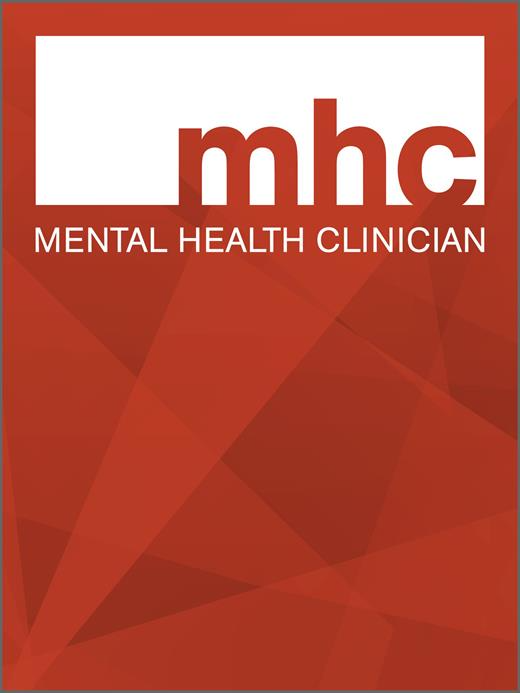
Experimental Study
Lavender essential oil, particularly its primary constituents linalool and linalyl acetate, may offer a beneficial anxiolytic effect through its interaction with certain neurological mechanisms.
Malcolm BJ, Tallian K

Systematic Review
Acupuncture may increase the clinical pregnancy rate and ongoing pregnancy rate and decrease the risk of ovarian hyperstimulation syndrome in women with PCOS undergoing IVF or ICSI.
Jo J, Lee YJ
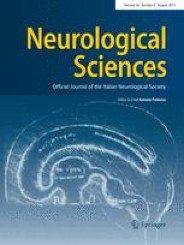
Randomised Controlled Trial
Shiatsu is a safe and potentially useful alternative approach for refractory headache.
Villani V, Prosperini L, Palombini F, Orzi F, Sette G.

Systematic Review
Acupuncture was more effective than conventional medicine therapy in effectiveness, improvement rate of vertigo and headache, and increased average blood flow velocity of vertebral-basilar artery.
Zhuanzhuan Hou, Shibing Xu, Qinglin Li, Libing Cai, Weigang Wu, Huida Yu, Huade Chen

Systematic Review
Tai Chi could be an effective alternative and/or complementary approach to existing therapies for people with fatigue.
Yu Xiang, Liming Lu, Xiankun Chen, Zehuai Wen
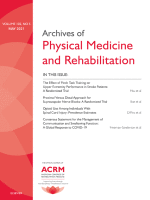
Systematic Review
Electroacupuncture combined with conventional routine care has the potential of reducing spasticity in the upper and lower limbs and improving overall and lower extremity motor function and activities of daily living for patients with spasticity, within 180 days poststroke.
Cai Y, Zhang CS, Liu S, Wen Z, Zhang AL, Guo X, Lu C, Xue CC
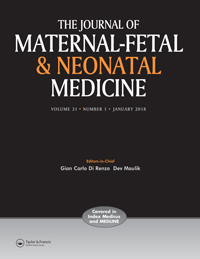
Case Report
Chamomile consumption may stimulate abundant milk production and increase lactogenesis in lactating women.
Silva FV, Dias F, Costa G, Campos MG

Systematic Review
There is a significant effect of Chinese herbal medicine for improving Expanded Disability Status Score, annual relapse frequency and the total clinical efficacy rate for multiple sclerosis compared with western conventional treatment.
Liang Song, Qi-hui Zhou, Hui-lin Wang, Feng-jiao Liao, Liang Hua, Hong-feng Zhang, Li-bo Huang, Yan Lin, Guo-qing Zheng
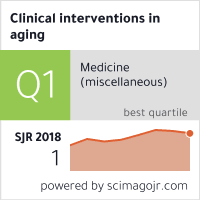
Systematic Review
The Chinese herbal formula Erxian decoction appears to be more effective than basic supplements in treating osteoporosis.
Li JY, Jia YS, Chai LM, Mu XH, Ma S, Xu L, Wei X

Systematic Review
Bu Zhong Yi Qi Tang treatment improves clinical symptoms, exercise capacity, lung function and quality of life for patients with stable chronic obstructive pulmonary disease.
Yuanbin Chen, Johannah Linda Shergis, Lei Wu, Xuhua Yu, Qigang Zeng, Yinji Xu, Xinfeng Guo, Anthony Lin Zhang, Charlie Changli Xue, Lin Lin
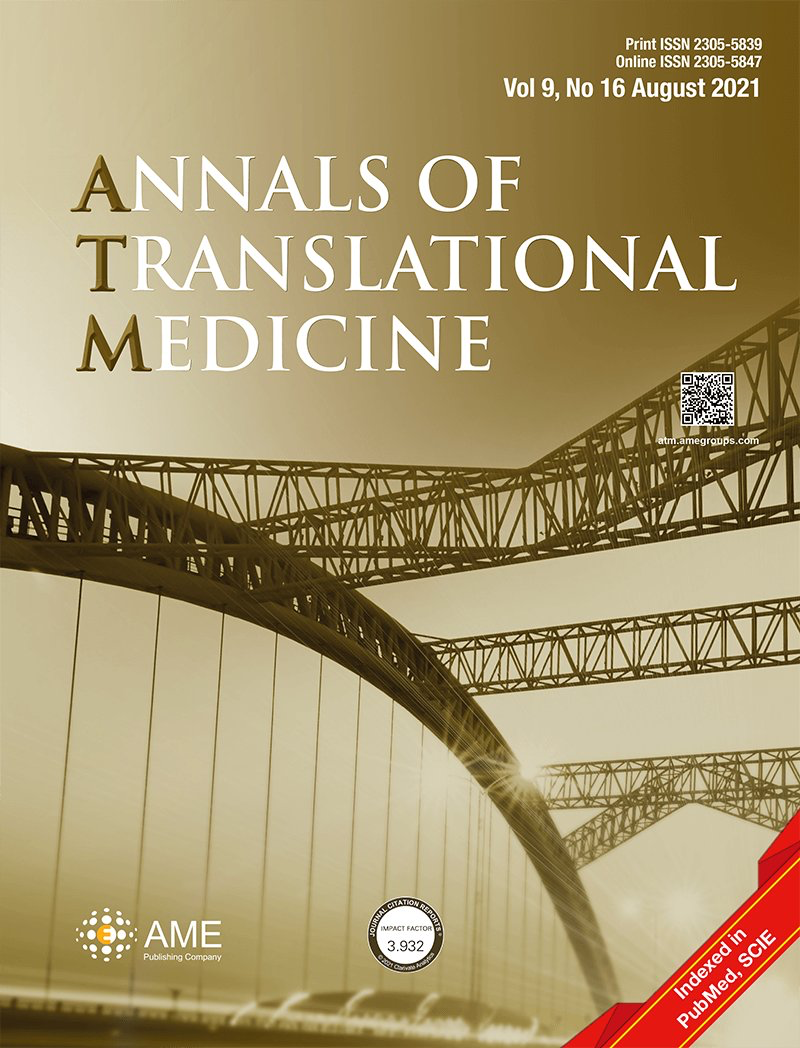
Systematic Review
Chinese medicine warming and invigorating drugs combined with levothyroxine may improve treatment of hypothyroidism caused by Hashimoto disease more than levothyroxine alone.
Xiangwen Cheng, Zixiao Wei, Guangde Zhang, Xin Shao, Bo Li, Rui Gao
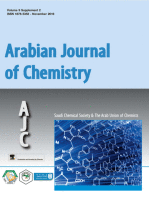
Review Article
Fennel exhibits antifungal, antibacterial, antioxidant, antithrombotic and hepatoprotective activities.
Manzoor A.Rather, Bilal A.Dar, Shahnawaz N.Sofia, Bilal A.Bhat, Mushtaq A.Qurishi
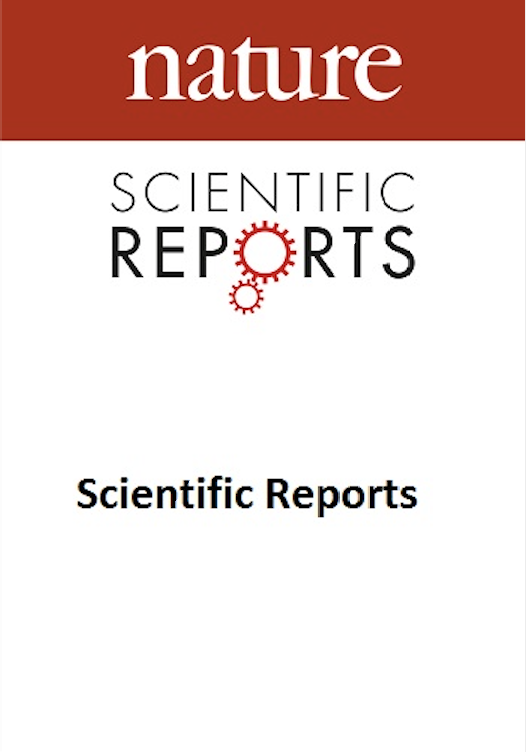
Systematic Review
Acupuncture may be recommended for the treatment of chronic prostatitis/chronic pelvic pain syndrome with relatively rare incidence of adverse events.
Qin, Z., Wu, J., Tian, J. et al.
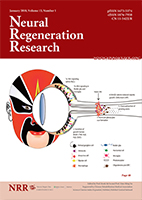
Randomised Controlled Trial
A 14-session course of needling at Fengchi is relatively safe for treating posterior circulation ischemia with vertigo.
Wen Y, Zhang C, Zhao Xf, Deng Sz, He S, Huang Lh, Tian G, Meng Zh

Systematic Review
Acupuncture may have beneficial effects on improving dependency, global neurological deficiency, and some specific neurological impairments for people with stroke in the convalescent stage, with no obvious serious adverse events.
Yang A, Wu HM, Tang JL, Xu L, Yang M, Liu GJ.

Systematic Review
We found low-to moderate-quality evidence for the efficacy and safety of acupuncture for recovery after surgery in colorectal cancer patients.
Kim KH, Kim DH, Kim HY, Son GM.

Randomised Controlled Trial
The combination of traditional Chinese medicine and endocrine therapy may be more effective in slowing prostate cancer progression and increasing patients' survival time.
Cao H, Mu Y, Li X, Wang Y, Chen S, Liu J
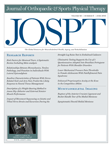
Systematic Review
Acupuncture, specifically needle-based and electroacupuncture, can potentially provide therapeutic benefits for carpal tunnel syndrome, Achilles tendinopathy, and shoulder injuries.
Cox, J., Varatharajan, S., Côté, P., & Optima Collaboration
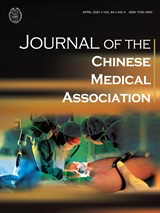
Meta-Analysis
Compared with oseltamivir, Chinese herbs might have superior potential effects on fever resolution and similar effects on viral shedding.
Li, Jiang-Honga,; Wang, Re-Qina; Guo, Wen-Jieb; Li, Juan-Shengc

Systematic Review
The review found limited consistent evidence supporting the effectiveness of acupuncture for relieving menstrual pain compared to sham treatments or other interventions.
Smith CA, Armour M, Zhu X, Li X, Lu ZY, Song J

Systematic Review
Acupuncture as a complementary therapy may have a potential effect in chronic urinary retention due to spinal cord injury in decreasing postvoid residual urine volume and improving bladder voiding.
Jia Wang, Yanbing Zhai, Jiani Wu, Shitong Zhao, Jing Zhou, Zhishun Liu

Systematic Review
Current evidence supports acupuncture as an effective treatment for chronic prostatitis/chronic pelvic pain syndrome-induced symptoms, particularly in relieving pain.
Qin Z, Wu J, Zhou J, Liu Z.

Systematic Review
Acupoint stimulation shows promise in alleviating nausea and vomiting in pregnancy.
Van den Heuvel, E., Goossens, M., Vanderhaegen, H. et al.

Systematic Review
Acupuncture may prove effective and safe in relieving symptoms of chronic urticaria.
Yao Q, Li S, Liu X, Qin Z, Liu Z
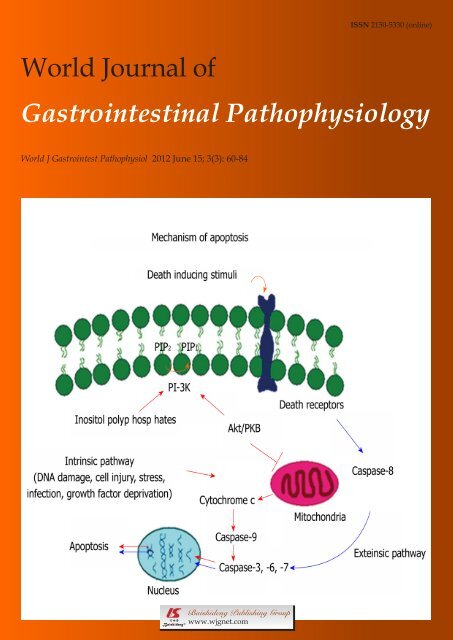
Clinical Study
Hydrogen carbonate-rich mineral water significantly reduces heartburn frequency and severity, improving quality of life with excellent tolerability.
Beer AM

Clinical Study
Drinking hydrogen carbonate-rich mineral water significantly reduces heartburn episodes and improves quality of life in individuals with dyspeptic symptoms.
Pohl U, Auinger A, Bothe G, Uebelhack R
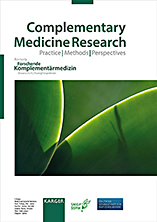
Systematic Review
Acupuncture therapy is more effective than NSAID in improving clinical efficacy rates and pain scores for treatment of chrondomalacia patellae.
Lv Z.-T.a · Li Z.-Q.b · Zhou X.c · Ma W.-W.d · Zhang J.-M.a · Chen A.-M
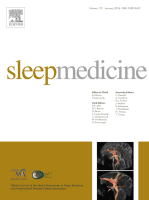
Systematic Review
Chinese herbal medicine was superior to placebo and benzodiazepine drugs and was superior to benzodiazepines and psychotherapy alone as an adjunct therapy in terms of subjective sleep quality and quantity and safety.
Xiaojia Ni, Johannah Linda Shergis, Xinfeng Guo, Anthony Lin Zhang, Yan Li, Chuanjian Lu, Charlie Changli Xue

Randomised Controlled Trial
Drinking natural mineral water rich in magnesium sulphate and sodium sulphate daily improves bowel movement frequency and stool consistency in people with functional constipation.
Bothe G, Coh A, Auinger A
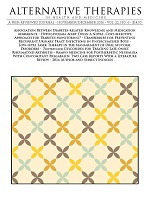
Systematic Review
Compound formulas of traditional Chinese medicine, compared with placebo, can provide benefits to patients with the common cold, with no serious side effects having been identified in the included trials.
Li G, Cai L, Jiang H, Dong S, Fan T, Liu W, Xie L, Mao B.

Systematic Review
The use of acupuncture may be more effective than drugs and may enhance the effect of drugs for patients with sciatica.
Zongshi Qin, Xiaoxu Liu, Jiani Wu, Yanbing Zhai, Zhishun Liu,

Randomised Controlled Trial
Four weeks of acupuncture treatment is a safe and effective option for clinical management of seasonal allergic rhinitis in the Melbourne area for patients' symptom relief and quality of life improvement.
Xue CC, Zhang AL, Zhang CS, DaCosta C, Story DF, Thien FC
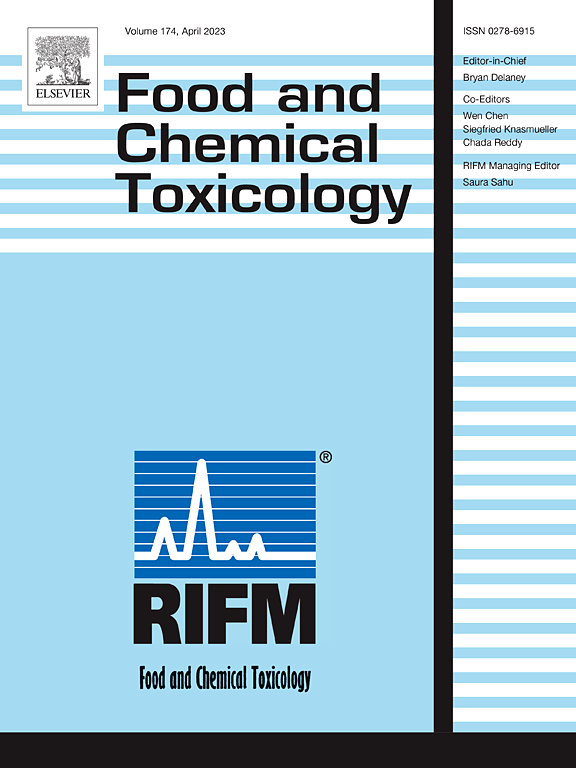
Randomised Controlled Trial
Green tea extract consumption can potentially cause mild adverse reactions, notably nausea, skin conditions, and increased alanine aminotransferase levels.
Dostal AM, Samavat H, Bedell S, Torkelson C, Wang R, Swenson K, Le C, Wu AH, Ursin G, Yuan JM, Kurzer MS

Clinical Study
Acupuncture demonstrates a significant immediate effect in reducing discomforts and VAS of both dizziness and vertigo.
Chiu, CW., Lee, TC., Hsu, PC. et al.

Systematic Review
Acupuncture has been found potentially more effective than drugs in improving cognitive function and daily life in Alzheimer's disease patients, while also demonstrating safety.
Zhou, J., Peng, W., Xu, M., Li, W., & Liu, Z.
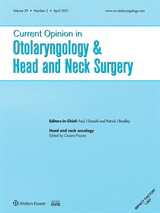
Systematic Review
There are high-quality randomized controlled trials that demonstrate efficacy and effectiveness for acupuncture in the treatment of both seasonal and perennial allergic rhinitis.
Malcolm B. Tawa, William D. Reddyb, Folashade S. Omolec, and Michael D. Seidmand

Systematic Review
Acupuncture may impact Luteinized Unruptured Follicle Syndrome (LUFS) by lowering FSH, increasing E2, and resuming menstruation.
Jo J, Lee YJ, Lee H

Systematic Review
Acupuncture proves to be a promising alternative therapy for treating Bell's palsy, despite some controversy surrounding its use.
Li, P., Qiu, T., & Qin, C.
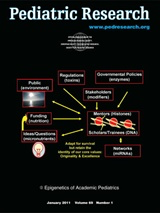
Systematic Review
The efficacy of acupuncture for some pediatric conditions is promising, such as for cerebral palsy, nocturnal enuresis, tic disorders, amblyopia, and pain reduction.
Chunsong Yang, Zilong Hao, Ling-Li Zhang & Qin Guo

Systematic Review
Traditional Chinese Medicine, when used alongside dopamine replacement therapy, could potentially improve the severity of symptoms in Parkinson's disease patients.
Guoxin Zhang, Nian Xiong, Zhentao Zhang, Ling Liu, Jinsha Huang, Jiaolong Yang, Jing Wu, Zhicheng Lin, Tao Wang

Systematic Review
Acupuncture therapies demonstrate some potential benefits in treating psoriasis vulgaris, despite conflictions in individual study results.
Coyle M, Deng J, Zhang AL, Yu J, Guo X, Xue CC, Lu C

Meta-Analysis
Current evidence provisionally demonstrates that acupuncture treatment is superior to either non-acupuncture or conventional therapy for cerebral infarction.
Li Li, Hong Zhang , Shu-qing Meng, Hai-zhou Qian

Systematic Review
Saffron, derived from Crocus sativus flower, shows similar efficacy to antidepressant medications in treating major depression, potentially due to its variety of biochemical effects.
Lopresti AL, Drummond PD

Randomised Controlled Trial
Drinking 1 liter of Hépar, a magnesium sulfate-rich mineral water, daily reduces constipation and hard or lumpy stools more effectively than low-mineral water in women.
Dupont C, Campagne A, Constant F
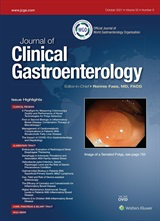
Systematic Review
Peppermint oil is a safe and effective short-term treatment for irritable bowel syndrome.
Khanna, Reena ; MacDonald, John K. ; Levesque, Barrett G.
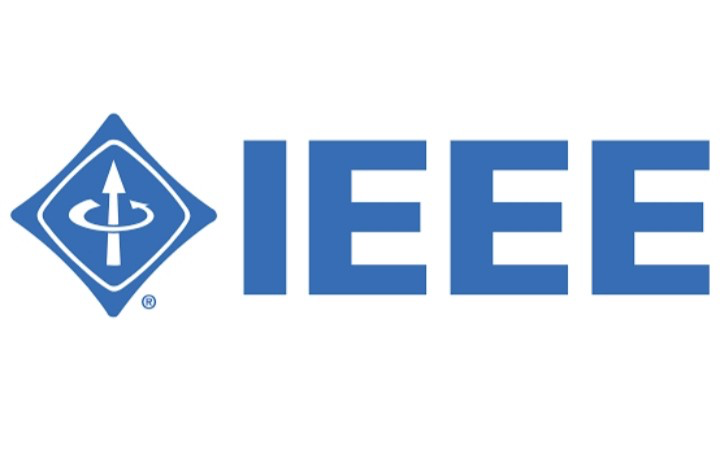
Systematic Review
Acupuncture shows promise in treating polycystic ovary syndrome (PCOS).
Hong Ma, Xiaohong Quan, Jianwei Li, Bin and Xiuhua Chen

Systematic Review
Acupuncture during pregnancy appears to be associated with few adverse events when correctly applied.
Park J, Sohn Y, White AR, Lee H.

Systematic Review
Chinese herbal medicine combined with western medicine used to treat subacute thyroiditis may improve clinical symptoms and signs, reduce relapse rate, and alleviate the side effects of hormones.
Hui Luo, Meng Lü, Xiaohua Pei, Zhongyuan Xia
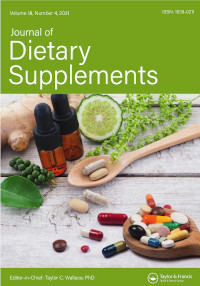
Systematic Review
Goji (Lycium spp.) has a consolidated safety and efficacy profile, based on scientific literature, clinical trials, expert opinions, history, pharmacology, interactions, adverse effects, toxicology, and dosing.
Ulbricht C, Bryan JK, Costa D, Culwell S, Giese N, Isaac R, Nummy K, Pham T, Rapp C, Rusie E, Weissner W, Windsor RC, Woods J, Zhou S
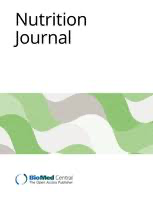
Systematic Review
Ginger could be considered a harmless and possibly effective alternative option for women suffering from nausea and vomiting during pregnancy.
Viljoen, E., Visser, J., Koen, N. et al.
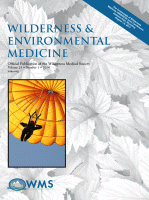
Review Article
Honey has shown to be a safe and occasionally superior treatment for various wounds compared to current treatments, even in wilderness environments.
Stewart JA, McGrane OL, Wedmore IS

Systematic Review
Acupuncture and herbal medicine show promise in alleviating premenstrual syndrome and premenstrual dysphoric disorder symptoms, with over 50% relief and proven safety.
Jang SH, Kim DI, Choi MS

Systematic Review
Guizhi Fuling formula shows potential in treating uterine fibroids.
Chen NN, Han M, Yang H, Yang GY, Wang YY, Wu XK, Liu JP

Randomised Controlled Trial
Tualang honey demonstrates efficacy comparable to Tribestan in enhancing sperm parameters among oligospermic males, including concentration, motility, and morphology, with a favorable safety profile.
Ismail SB, Bakar MB, Nik Hussain NH, Norhayati MN, Sulaiman SA, Jaafar H, Draman S, Ramli R, Wan Yusoff WZ
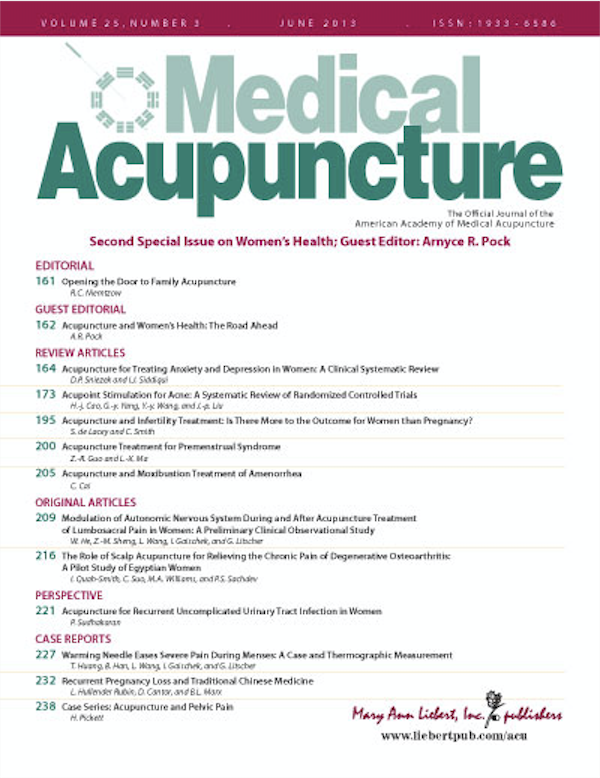
Systematic Review
Acupuncture's efficacy in treating gynecologic and obstetric disorders
Selva Olid A, Martinez Zapata MJ, Sola I, Stojanovic Z, Uriona Tuma SM, Bonfill Cosp X.
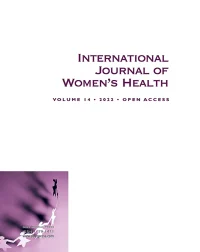
Randomised Controlled Trial
Green tea extract has shown promising results in reducing uterine fibroid volume, fibroid-related symptoms, and improving quality of life in women with symptomatic uterine fibroids.
Roshdy E, Rajaratnam V, Maitra S, Sabry M, Ait Allah AS, Al-Hendy A

Systematic Review
Despite its widespread use during assisted reproductive technology (ART) cycles, acupuncture does not appear to improve live birth or pregnancy rates in couples dealing with subfertility.
Cheong YC, Dix S, Hung Yu Ng E, Ledger WL, Farquhar C
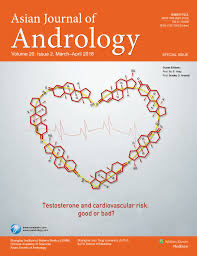
Systematic Review
Chinese herbal medicine appears to be more effective than Western medication in improving quality of life and reducing prostate volume in benign prostatic hyperplasia patients.
Ma CH, Lin WL, Lui SL, Cai XY, Wong VT, Ziea E, Zhang ZJ

Systematic Review
Compared with no treatment and standard therapy, acupuncture improves pain and stiffness in people with fibromyalgia.
Deare JC, Zheng Z, Xue CC, Liu JP, Shang J, Scott SW, Littlejohn G.

Systematic Review
Chinese herbal medicine may help in functional recovery in gout patients, while safely controlling serum uric acid level and inflammation severity.
Li XX, Han M, Wang YY, Liu JP

Clinical Study
Hop extract, particularly its component 8-Prenylnaringenin (8-PN), demonstrates potential in alleviating symptoms common in menopause such as osteoporosis, vasomotoric disturbances, and sexual motivation.
Keiler A, Zierau O, Kretzschmar G
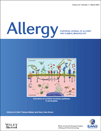
Randomised Controlled Trial
Acupuncture was found to be a more effective and safe treatment for allergic rhinitis than sham acupuncture or no treatment.
Choi SM, Park JE, Li SS, Jung H, Zi M, Kim TH, Jung S, Kim A, Shin M, Sul JU, Hong Z, Jiping Z, Lee S, Liyun H, Kang K, Baoyan L

Review Article
Chinese herbal medicine as an adjunct therapy can potentially alleviate symptoms of Parkinson's Disease and is typically well-tolerated by patients.
Wang Y, Xie CL, Lu L, Fu DL, Zheng GQ
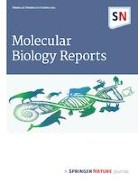
Systematic Review
Traditional Chinese medicines had a better effect on the normalization of alanine aminotransferase and disappearance of radiological steatosis in the treatment of non-alcoholic fatty liver disease.
Shi KQ, Fan YC, Liu WY, Li LF, Chen YP, Zheng MH

Systematic Review
Acupuncture shows potential for reducing dysmenorrhoea scores in endometriosis patients.
Zhu X, Hamilton KD, McNicol ED

Clinical Study
Chinese acupuncture is safe and can be efficient in alleviating pain in patients suffering from temporomandibular disorder without clear joint pathology.
Noiman M, Garty A, Maimon Y, Miller U, Lev-Ari S.

Review Article
Acupuncture is a safe complementary/alternative medicine modality for pediatric patients on the basis of the data we reviewed.
Jindal, Vanita; Ge, Adeline; Mansky, Patrick J.
Executive Summary
Write an executive summary in the form of a blog article on the topic of "Research into Chinese medicine treatment for Safety" summarising the research below and using language that can be easily understood by patients and avoiding medical jargon using a professional and caring tone of voice.
Write an executive summary in the form of a blog article on the topic of "Researched Chinese medicine treatments for Safety" summarising the research below in an objective and easy to understand way, and using language that can be easily understood by patients. Group the article into Chinese medicine treatments first, followed by nutrition and other treatments. Avoid using medical jargon and use a professional and caring tone of voice.
Write me a concise but easy to understand executive summary on the topic of "Chinese medicine treatments for Safety" based on the following research that I will give you. Your summary should be 2 paragraphs long in Australian English spelling and include references to the studies.
A Network Pharmacology published in 2024 in the journal Medicine found that Bruceolic oil emulsion, when combined with androgen antagonists, shows the greatest efficacy in treating prostate cancer amongst Chinese patent medicines. A Network Meta-analysis was conducted to review the safety and effectiveness of different Chinese patent medicines in treating prostate cancer. Various databases were systematically searched for randomized controlled trials of Chinese patent medicines until June 1, 2023. The risk of bias in the included studies was assessed using a tool specifically for randomized controlled trials. Main outcome indicators were how effective the medicine was, its impact on Prostate Specific Antigen, and any adverse reaction. Due to varying treatment durations across the studies, Bayesian mesh meta-regression was implemented to investigate the effects of these different courses on efficacy and safety. The meta-analysis considered 27 articles involving 1885 patients and nine types of Chinese patent medicine. The findings indicated that certain medicines, namely Bruceolic oil emulsion and Compound Kushen injection, showed significant advantages compared to androgen antagonists regarding efficacy and Prostate Specific Antigen level reduction. However, no significant difference was found among all the Chinese patent medicines in terms of adverse reactions. With these findings, it was deduced that the effectiveness of Chinese patent medicines isn't greatly impacted by the duration of treatment and dosage. Overall, the combination of Bruceolic oil emulsion and androgen antagonist emerged as a promising intervention measure.
A Review Article published in 2024 in the journal Pharmaceuticals found that Lemongrass essential oil can effectively treat periodontitis, gingivitis, oral malodour, skin aging, and dandruff, and it is comparable to certain established treatments. The methodology used in the research followed a scoping review design, which was aimed at identifying, summarizing, and synthesizing existing literature related to the clinical applications of lemongrass essential oil. Three databases, namely PubMed, Web of Science, and Scopus, were utilized, following the PRISMA-ScR guidelines, to find articles published within approximately a 10-year timeframe. The results of the review suggest that patients have received noticeable therapeutic benefits from treatments that were primarily administered oromucosally and topically. It can be deduced that the efficacy of lemongrass essential oil in treating periodontitis, gingivitis, and oral malodour is similar to that of chlorhexidine and doxycycline. Moreover, the oil has demonstrated potential in treating skin conditions such as pityriasis versicolor, preventing skin aging, and having anti-dandruff effects. The diverse range of applications of the oil and its efficacy when compared to established treatments highlight its potential for clinical applications.
A Meta-Analysis published in 2024 in the journal SSRN Electronic Journal found that Diverse acupuncture therapies, especially moxibustion, emerged as superior methods for alleviating ulcerative colitis symptoms in clinical practice. Methodology: The researchers carried out a systematic review and network meta-analysis of clinical efficacy of various acupuncture therapies for ulcerative colitis patients. They accomplished this by sourcing for Clinical Randomized Controlled trial articles from databases such as PubMed, Embase, Cochrane Library, and other data knowledge service platforms, all of which were independently reviewed by two researchers. Several quality assessments were made through Review Manager software, and the meta-analysis was conducted with Stata 16 software. Interventions examined in the analysis included acupuncture, moxibustion, acupoint catgut embedding, and combinations of these therapies with Western medicine. Discussion of results: 52 articles encompassing 3924 patients participated in randomized control trials. The investigation revealed a range of interventions, including different acupuncture therapies and combinations of these therapies with Western medicine. Namely, moxibustion, either on its own or combined with Western medicine, consistently surfaced as top-ranked for overall effectiveness and specific outcomes. Moreover, moxibustion displayed impressive performance in reducing adverse reactions and recurrence rates. Thus, various acupuncture therapies were confirmed as safe and effective for the treatment of ulcerative colitis, with moxibustion emerging as the most effective.
A Meta-Analysis published in 2024 in the journal Integrative Cancer Therapies found that Adding Compound Kushen Injection (CKI), a traditional Chinese medicine, to chemotherapy treatment enhanced treatment response and reduced side effects in advanced colorectal cancer patients. This study systematically collected data from a myriad of sources including, but not limited to, PubMed, the Cochrane Library, and ClinicalTrials.gov up to April 20, 2024. An assessment tool, ROB2, was used to measure the quality of the included trials, while data analysis was done using Stata 16. Publication bias was evaluated with the funnel plot and Egger's test. To calculate the final required sample size in this meta-analysis and verify whether the results presented a stable conclusion, trial sequential analysis was used. The data collected from these sixteen trials, consisting of 1378 patients showcased that when compared to chemotherapy alone, the combination of CKI and chemotherapy resulted in improved response rates and enhancement of the patient's performance status. Furthermore, this combination therapy was associated with fewer adverse reactions like leukopenia, thrombocytopenia, gastrointestinal reactions, and liver damage. Patients also exhibited high CD4 ratios and comparatively low CD8 T cell ratios. A subgroup analysis further demonstrated that the response rates improved significantly when CKI was combined with specific chemotherapy regimens. Overall, this data strongly suggests that the addition of CKI to chemotherapy provided statistically significant and clinically relevant improvements in treatment response rates, patient wellbeing, reduction in adverse reactions, and enhanced immune function.
A Meta-Analysis published in 2023 in the journal PLOS One found that Oral Chinese herbal medicines appear to enhance recovery when used as supplements to conventional treatment after sinus surgery. This study systematically reviews and conducts a meta-analysis of randomised controlled trials, gathered from a wide range of nine databases and clinical trial registries, to evaluate the impact of orally administered Chinese herbal medicines (CHMs) on the post-surgical management of chronic rhinosinusitis. The participants across these trials included adults and children diagnosed with sinusitis or rhinosinusitis, who had undergone surgery. The added interventions were orally consumed CHMs post-surgery in tandem with traditional post-surgery management. The control groups received only the conventional management without CHMs. The results from a variety of measures including Sino-Nasal Outcome Test, visual analogue scales, various computed tomography scores, and mucociliary transport rates showed greater improvements in the group consuming oral CHMs in addition to the post-surgery treatment, versus the control. Particularly, enhancements were noticeable at follow-up stages after the end of treatment. However, the reporting of adverse events was incomplete across the trials. The study also found that the quality of the studies and their reporting varied, with many studies not being blinded and some results showing substantial heterogeneity.
A Review Article published in 2023 in the journal PharmaNutrition found that Soy protein, bioactive peptides, and isoflavones are generally safe for consumption and may help reduce the risk of several significant health conditions. Methodology: This review followed the Preferred Reporting Items for Systematic reviews and Meta-Analyses guidelines. It began with a sophisticated multi-database search, featuring resources like Google Scholar, Scopus, and others. This search targeted articles published from 2017 to March 2023 and used specific keywords for accuracy. Forty-three articles were handpicked from this process after excluding reviews, conference reports, duplicates, inaccessible texts, and any non-English publications. Discussion of Results: A thorough examination of the chosen articles resulted in the conclusion that soy proteins, soy bioactive peptides, and soy isoflavones are typically safe for human consumption. Furthermore, it was found that the consumption of these compounds may have beneficial effects, potentially lowering risk factors for ailments such as osteoporosis, various cancers, hypertension, atherosclerosis, and more.
A Meta-Analysis published in 2023 in the journal Medicine found that Acupoint application has been proven to be a safe and effective method for the treatment of ulcerative colitis. The methodology incorporated a systematic review of various databases including China National Knowledge Infrastructure, Chinese Biology Medicine, VIP, Wanfang, Embase, PubMed, the Cochrane Library and Web of Science up to July 2022 to find published randomized controlled trials on the use of acupoint application in treating ulcerative colitis. Meta-analysis and trial sequential analysis were then performed on the selected studies. The results from the 13 analyzed trials involving a total of 878 cases revealed that the use of acupoint application improved the rates of effective clinical comprehensive and syndrome in ulcerative colitis treatment compared to conventional western medicine. The method also showed advantages in increasing interleukin-4 and reducing interferon-gamma. Also noted was that there were no variances seen regarding colonoscopy, pathological examination, and reaction rates when compared with traditional methods. The quality of the evidence used for these conclusions varied, with some being of moderate quality and others deemed low or very low quality.
A Randomised Controlled Trial published in 2023 in the journal Journal of Ethnopharmacology found that Gui Zhi Fu Ling Wan significantly reduced menstrual pain in primary dysmenorrhea patients with heat-burning blood-stasis syndrome, without notable adverse effects. In the methodology, a randomized, double-blinded, placebo-controlled trial was conducted. Eligible patients suffering from primary dysmenorrhea with heat-burning blood-stasis syndrome were randomly placed into two groups – one received Guizhi Fuling Wan, the other a placebo, administered twice daily across three menstrual cycles, with a 3-month follow-up. The primary measurement was the change in pain intensity from the beginning to the 6th month, gauged by using a Visual Analog Scale. In the discussion of results, data showed that the pain intensity (measured using Visual Analog Scale) significantly decreased in the Guizhi Fuling Wan group compared to the placebo over the 6 month period. Secondary measurements also indicated a greater reduction in Cox Menstrual Symptom Scale, Self-rating Anxiety Scale, and traditional Chinese medicine syndrome scores in the Guizhi Fuling Wan group compared to the placebo. However, there was no significant difference between the two groups when measuring the Self-rating Depression Scale. Furthermore, no serious adverse events were observed during the trial.
A Systematic Review published in 2023 in the journal Medicine found that Combining Guipi Decoction (GPD) with western medicine holds promise for improving chronic heart failure treatment by enhancing effectiveness and cardiac measures Guipi decoction (GPD) for chronic heart failure (CHF), revealed that when combined with western medicine it improved clinical effectiveness, echocardiographic measures, and reduced CHF biomarker levels, suggesting potential benefits for cardiac function and CHF progression.
A Systematic Review published in 2023 in the journal Medicine found that Tuina therapy for chronic low back pain indicates potential pain relief and reduced disability but doesn't improve quality of life Tuina's efficacy and safety for chronic non-specific low back pain demonstrates its potential for reducing pain and physical disability but not improving quality of life; adverse events were mild and self-resolving, suggesting Tuina's relative safety.
A Systematic Review published in 2023 in the journal Medicine found that Meta-Analysis highlights promising role of Guipi Decoction as adjuvant therapy for chronic heart failure Gui Pi decoction, when combined with Western medicine, significantly improved the clinical effective rate and cardiac function indicators. The biomarkers associated with chronic heart failure were also reduced. This suggests Gui Pi decoction could be a promising adjuvant therapy for chronic heart failure.
A Systematic Review published in 2023 in the journal Medicine found that Tuina massage for chronic low back pain reveals promising results amid methodological considerations The study confirms the potential of Tuina in mitigating low back pain-related pain and physical disability, though not significantly impacting quality of life. Reported adverse events, such as localized bruising and pain, were transient and self-resolving, indicating Tuina's relatively safe nature.
A Systematic Review published in 2023 in the journal Frontiers in Psychiatry found that Acupuncture, especially TEAS, is safer and more effective than medication for improving sleep quality in cancer related insomnia Acupuncture methods like transcutaneous electrical acupuncture stimulation (TEAS) and acupuncture+moxibustion were better for sleep than medication. Acupuncture had fewer side effects than medication with positive impact on canner-related insomnia linked to factors like melatonin regulation. Amongst all treatment types, TEAS was probably the more effective.
A Systematic Review published in 2023 in the journal Frontiers in Psychiatry found that Acupuncture and Moxibustion Show Promise for Chronic Renal Insufficiency Acupuncture and moxibustion emerge as effective and safe interventions for chronic renal insufficiency, with Transcutaneous Electrical Acupuncture Stimulation showing the highest potential for efficacy.
A Meta-Analysis published in 2023 in the journal Quality Assurance and Safety of Crops & Foods found that The traditional Chinese herbal medicine Shaoyao Gancao Tang (SG-Tang) may be an effective and safe alternative treatment to relieve Restless Leg Syndrome. The methodology used for this study involved a systematic review and meta-analysis of Randomized Clinical Trials (RCTs) assessing the efficacy and safety of SG-Tang treatment for Restless Leg Syndrome. Databases such as the Cochrane Library, PubMed, EMBASE, Web of Science, Chinese Biological Medicine Database, China National Knowledge Infrastructure, Wanfang Database, and VIP Information Database were searched. The primary and secondary outcome measurements looked at were the total effective rate, the International Restless Legs Syndrome Study Group Rating Scale for Severity of Restless Legs Syndrome, the Pittsburgh Sleep Quality Index, and the incidence of adverse events. The results of the study indicated that SG-Tang treatment led to significant improvements compared to conventional medications; it increased the total effective rate and lifted scores on the Severity of Restless Legs Syndrome and Sleep Quality Indices, while also lessening the incidence of adverse events. However, these conclusions should be interpreted with caution due to the limited data and the methodological quality of the included studies.
A Randomised Controlled Trial published in 2023 in the journal Frontiers in Public Health found that Acupuncture can improve both perimenopausal depression and insomnia with short-medium term effects while being a safe treatment. The experiment involved seventy eligible participants who were randomly assigned to either a real-acupuncture (RA) or a sham-acupuncture (SA) group. They were given 17 sessions of either RA or SA treatments over an 8-week timeframe. The primary outcomes for mood and sleep were evaluated using the 17-item Hamilton Depression Rating Scale and the Pittsburgh Sleep Quality Index scores. Secondary outcomes included an evaluation of anxiety symptoms, perimenopausal symptoms, and quality of life. Also, participants' experiences and overall satisfaction with treatment were assessed. Blood samples were collected as well to measure reproductive hormone levels. Reports indicate that 65 participants completed all treatment sessions while 54 and 41 participants completed the 8-week and 16-week follow-ups respectively. The results showed the RA group to have a bigger reduction of Pittsburgh Sleep Quality Index scores at post-treatment and 8-week follow-up compared to the sham-acupuncture group. Although, the change in the Hamilton Depression Rating Scale scores for the RA group wasn’t significantly different from the sham group. There were no significant mean differences for the Hamilton Depression Rating Scale or the Pittsburgh Sleep Quality Index between the two groups from the beginning to the 16th-week follow-up, nor were any differences noted in serum reproductive hormone levels among the groups. No major adverse events were reported.
A Systematic Review published in 2023 in the journal Evidence-Based Complementary and Alternative Medicine found that Combined Ma Huang Fu Zi Xi Xin decoction and Shen Mai injection treatment showed improved heart rate and symptoms in under 60s with bradyarrhythmia Using Ma Huang Fu Zi Xi Xin decoction along with Shen Mai injection (SMI) treatment is better than just SMI treatment for patients under 60 with bradyarrhythmia. This combo improves heart rate and reduces symptoms, with no major side effects. The combination's effectiveness might come from shared heart-rate boosting components. However, there were differences in heart rate data due to varied ECG analysis.
A Cohort Study published in 2023 in the journal Nutrients found that Epigallocatechin gallate (EGCG), a green tea component, showed potential in treating uterine fibroids and associated infertility without causing liver toxicity or folate deficiency. The study involved the pre-testing of a green tea substance known as Epigallocatechin gallate (EGCG) on a cohort of premenopausal women, aged 18 to 40, with and without uterine fibroids, in order to evaluate its safety. The subjects were randomized into three groups, each receiving different treatments. One group took just a daily dose of 800 mg of EGCG, one group combined this EGCG dose with 100 mg of Clomiphene citrate for five days, and the third group combined it with 5 mg of Letrozole for the same period. The results showed that none of the subjects displayed signs of drug-induced liver injury, and all had normal serum folate levels. Hence, the findings suggest that the daily intake of 800mg of EGCG, whether consumed alone or in combination with Clomiphene citrate or Letrozole for five days, is well-tolerated and not related to any liver toxicity or folate deficiency in women of reproductive age.
A Systematic Review published in 2022 in the journal Research in Nursing & Health found that Acupuncture, either in isolation or as an adjunct to pharmacological treatment, has clinical benefits and can be considered a safe option for managing depression. A review of 22 trials involving 2,391 participants found that acupuncture can reduce depression severity. Combining acupuncture with antidepressants was more effective than using antidepressants alone or waitlist. However, acupuncture alone or with antidepressants didn't show significant benefits compared to sham acupuncture. Sham acupuncture might have stronger effects than other placebos. Differences in treatment sessions and cultural backgrounds between China and Western countries affect outcomes. Lack of standardization in acupuncture regimens hinders research. Mild adverse events were reported but need better documentation.
A Systematic Review published in 2022 in the journal PLOS One found that Chinese Herbal Medicines may help with chronic sinusitis and acute rhinosinusitis symptoms with LDXGT and modified CEZS working well, especially for CRS. The review assessed the effectiveness of Chinese herbal medicines (CHMs) in treating chronic rhinosinusitis (CRS) and acute rhinosinusitis (ARS). It found that certain CHMs showed potential in improving CRS symptoms and measures related to sinus health, with the best evidence for LDXGT and modified CEZS formulas. However, more blinded randomized controlled trials are needed to confirm these findings.
A Systematic Review published in 2022 in the journal Journal of Integrative Medicine found that Acupuncture, when used in conjunction with medicine or alone, appears to improve certain PCOS outcomes such as ovulation rate and recovery of menstrual cycle. This overview consolidates existing systematic reviews (SRs) on the efficacy and safety of acupuncture for treating Polycystic Ovary Syndrome (PCOS). Methodological quality, risk of bias, and confidence in evidence were assessed from these SRs to guide clinical practice and future research directions. However, due to the inconsistency and low quality of evidence, a definitive conclusion regarding the benefits of acupuncture for PCOS remains elusive. Notably, though all included SRs suggest potential benefits, their conclusions are undermined by defects in individual SRs and the limited reliability of evidence. Acupuncture, when used in conjunction with medicine or alone, appears to improve certain PCOS outcomes such as ovulation rate and recovery of menstrual cycle. Adverse events are mild, and while some evidence points to favorable effects on various outcomes, confidence remains too low to draw firm conclusions. The review highlights methodological shortcomings in SRs' assessments and calls for robust future studies. These studies should feature pre-registered protocols, comprehensive literature retrieval, detailed statistical methods, thorough reporting of trial characteristics and funding sources, and strategies to address bias and heterogeneity. In spite of potential benefits, the current evidence's poor quality and inconsistencies necessitate further high-quality research to establish acupuncture's effectiveness and safety for PCOS definitively.
A Systematic Review published in 2022 in the journal Complementary Therapies in Medicine found that Acupuncture, when combined with lifestyle changes, can effectively lower blood pressure in grade 1 hypertension patients with fewer side effects This review analyzed 10 studies on acupuncture treatment for grade 1 hypertension. Acupuncture, in combination with lifestyle adjustments, was found to be more effective than lifestyle modification alone, placebo, or no treatment, resulting in reduced systolic and diastolic blood pressure with higher response rates. Adverse effects were mild.
A Systematic Review published in 2022 in the journal Phytomedicine found that Acupuncture shows positive effects on cancer-related issues; research calls for further exploration of acupuncture's efficacy and safety, especially for conditions like depression, offering further potential support for cancer survivors This review summarizes evidence from 51 systematic reviews on acupuncture for cancer-related conditions. Acupuncture was found to have positive effects on various conditions such as cancer-related pain, fatigue, insomnia, nausea, and more. The methodological quality of the reviews was generally low, and some biases were identified. Acupuncture was considered safe, with only mild adverse events reported. In clinical practice, acupuncture can be a beneficial option for cancer survivors for certain conditions.
A Systematic Review published in 2022 in the journal Medicine found that Acupuncture covering the depth ranges for BL18, BL20, and BL22 and their targeting of various tissues potentially alleviates sympathetic nerve issues and ischemia with assistance of the diaphragm. Review analyzed 115 articles on needling depth and angle for back-shu acupuncture points in GI diseases. Key findings include the depth range for BL18, BL20, and BL22 points, their targeting of muscles, nerves, and diaphragmatic tissues, and the potential for acupuncture to alleviate sympathetic nerve overexcitability and ischemia while emphasizing the diaphragm's role in digestive function.
A Experimental Study published in 2022 in the journal Plants found that Broccoli sprouts may reduce the viability of thyroid cancer cells and prevent inflammation, demonstrating a promising safety profile for normal thyroid function. The methodology of the study involved two models - in vitro and in vivo. The in vitro model involved evaluating the impact of broccoli sprouts on normal and neoplastic thyroid cells and determining their anti-inflammatory and antioxidant potentials in macrophages. The in vivo model involved analyzing the thyroid glands of healthy and hypothyroid rats (induced by iodine deficiency or sulfadimethoxine ingestion) that were fed with broccoli sprouts. The results of the study showed that broccoli sprouts effectively decreased the viability of thyroid cancer cells and forestalled inflammation. Further, regardless of the condition in vitro and in vivo, the results confirmed a satisfactory safety profile of broccoli sprouts. The research concluded that understanding the influence of brassica vegetables like broccoli sprouts on thyroid function carries significant public health implications considering the increasing risk of iodine deficiency, hypothyroidism, and thyroid cancer worldwide.
A Systematic Review published in 2022 in the journal Frontiers in Pharmacology found that Traditional Chinese Medicine (TCM) demonstrates weight loss efficacy and metabolic benefits in overweight and obese individuals TCM interventions, particularly polyherbal preparations, effectively reduced weight, BMI, waist and hip circumference in overweight and obese individuals across 25 studies with nearly 2,000 participants. TCM also improved glucose and lipid metabolism by reducing fasting blood glucose, triglycerides, and total cholesterol while increasing HDL levels. TCM treatments were generally well-tolerated and safe, with some mild adverse effects.
A Systematic Review published in 2022 in the journal Journal of Pharmacopuncture found that Complementary therapies are generally effective and safe in treating insomnia with acupuncture being the most frequently effective form, often yielding results superior to western medicine, sham/placebo, and no treatment. The researchers conducted an extensive literature search using six different databases to gather systematic reviews and meta-analyses on the effectiveness and safety of complementary therapies for insomnia. Among the surveyed data, 30 systematic reviews/meta-analyses were chosen for the overview. An analysis using the PSQI was performed involving a significant number of randomized controlled trials and participants. The results confirm that complementary therapies had a positive impact on the PSQI scores in insomnia patients. Most of the reviews and meta-analyses reported positive results, with acupuncture being the most frequently effective form, often yielding results superior to western medicine, sham/placebo, and no treatment. However, the study discusses the presence of some methodological and reporting quality deficiencies in the systematic reviews and meta-analyses due to a lack of protocol registration and exclusions in study lists.
A Systematic Review published in 2022 in the journal Frontiers in Pharmacology found that Chinese herbal medicine (CHM) improved AD symptoms but had no significant impact on patients' quality of life or IgE levels suggesting CHM's potential as an AD treatment with further research. CHM showed benefits in improving AD symptoms, such as itching and skin appearance, compared to placebos. However, it didn't significantly affect patients' quality of life or IgE levels. CHM was safe, with only minor side effects. These findings suggest CHM could be a useful treatment for AD, but more standard guidelines are needed due to variations in herbal ingredients and dosages in different studies.
A Systematic Review published in 2022 in the journal Evidence-Based Complementary and Alternative Medicine found that HuoXiang ZhengQi (HQXXD) may be a safe and effective treatment for Chronic Cough Variant Asthma (CVA), improving clinical efficacy and airway responsiveness while reducing recurrence rates. HuoXiang ZhengQi (HQXXD) for Chronic Cough Variant Asthma (CVA) was systematically evaluated. The HQXXD group showed significantly higher total effective rates of clinical efficacy and airway responsiveness compared to the control group, while the recurrence rate was lower. Adverse reactions were not reported in HQXXD treatment, indicating its safety for CVA patients.
A Systematic Review published in 2022 in the journal Cureus Journal of Medical Science found that Honey is effective in treating coughs in children above 12 months. The researchers undertook a systematic review of literature across five databases, using a Medical Subject Heading strategy, keywords, and defined inclusion and exclusion criteria to identify relevant studies. This review incorporated a range of study types, including systematic reviews, meta-analyses, randomized controlled trials, observational studies and cross-sectional studies. Those articles without a clear methodology section were excluded. The quality of the remaining literature was appraised using a specific checklist. Following the review, it was found that honey is effective in treating coughs in children older than 12 months. Cold and cough medications were also found to be safe, if given at therapeutic doses. However, a note of caution was highlighted for the use of these medications in children under two years, as fatalities have been recorded in some cases; although further studies are recommended to establish a clear safety profile.
A Systematic Review published in 2022 in the journal Medicine found that Acupuncture coupled with traditional Chinese medicine may be more effective and safer than conventional Western medicine in treating chronic urticaria. To compare the efficacy of acupuncture with traditional Chinese medicine to conventional Western medicine, several databases, including Pubmed, Embase, Cochrane Library, CNKI, Wanfang, CQVIP, and CBM, were searched until August 2021. The criterion for inclusion were randomized control trials where the experimental group was treated with acupuncture and traditional Chinese medicine, and the control group with conventional Western medicine. Studies were excluded if they were repeated publications, lacked full text, incomplete in information, or incapable of data extraction. Animal experiments, reviews, and systematic reviews were also disregarded. Data analysis was conducted using STATA 15.1 software. The analyzed results revealed that the total effective rate of the group treated with acupuncture and traditional Chinese medicine was noticeably higher than those treated with conventional Western medicine. Additionally, this group showed considerably lower Urticaria Activity Scores and pruritus scores compared to those treated with Western medicine. However, there was no substantial difference shown in the wheal score between both groups. Significantly, the recurrence rate and the incidence rate of adverse events in the group treated with acupuncture and traditional Chinese medicine were markedly lower than the other group. This highlights the greater effectiveness and safety of the combination of acupuncture and traditional Chinese medicine for chronic urticaria compared to Western medicine.
A Systematic Review published in 2022 in the journal Frontiers in Public Health found that The study found that acupuncture as an adjuvant therapy for frozen-thawed embryo transfer (FET) in infertile women had positive effects on pregnancy outcomes. The study investigates the effects of acupuncture as supplementary therapy for frozen-thawed embryo transfer (FET) in infertile women. It finds significant positive impacts on clinical pregnancy rate, biochemical pregnancy rate, endometrial thickness, and pattern. However, the evidence quality is considered unsatisfactory, prompting a call for more robust research and refined acupuncture protocols.
A Meta-Analysis published in 2022 in the journal Pharmacological Research - Modern Chinese Medicine found that Patients with ulcerative colitis (UC) experienced greater clinical improvement and fewer adverse effects when treated with a combination of Traditional Chinese and Western medicine compared to Western medicine alone. With an aim to assess the effectiveness and safety of combined Traditional Chinese and Western medicine (referred as ITCMWM hereafter) in treating ulcerative colitis, a systematic review was conducted following a registered protocol. Data was sourced from numerous databases including PubMed, Cochrane Library, Embase, the Chinese Biomedical Literature Database (CBM), the China National Knowledge Infrastructure (CNKI), and Wanfang Data. The review incorporated only randomized controlled trials comparing ITCMWM with stand-alone Western medicine. A total of 3957 patients from 38 studies, equally divided into the ITCMWM group and control group, were considered, and the risk ratios were calculated. The results from the aggregated studies show that patients in the ITCMWM group reported a significantly better clinical outcome and witnessed fewer adverse events when compared to patients on stand-alone Western medicine. It was observed that the combination of both Traditional Chinese and Western treatments clearly outperformed Western medicine treatment alone in terms of overall effectiveness on ulcerative colitis. Additionally, the safety level was nearly equal for both treatment methods.
A Systematic Review published in 2022 in the journal Frontiers in Medicine found that Electroacupuncture may be more effective than manual acupuncture for managing frozen shoulder, with larger effect sizes in terms of pain, function, and response rate. This review included thirteen studies involving 936 patients. The EA group exhibited improvements in FS pain, function, and response rates over the manual acupuncture (MA) group. As an adjunct treatment, EA improved FS pain compared to the control treatments. No adverse effects were reported. EA was found to be an efficacious method for treating FS in this review. The meta-analysis showed that EA led to a greater reduction of FS pain than MA did, although with a very low certainty of evidence. In comparison to MA, EA led to a superior degree of functional improvement in FS patients, with a very low certainty of evidence. In comparison to MA, EA enhanced the response rate of FS, again with a low certainty of evidence. Compared with WM used in isolation, EA plus WM reduced FS pain with a low certainty of evidence.
A Systematic Review published in 2022 in the journal Frontiers in Neurology found that Acupuncture added to conventional rehabilitation has been found more effective in reducing post-stroke spasticity than conventional rehabilitation alone. In this systematic review and meta-analysis, a charge was led to determine the effectiveness and safety of acupuncture for post-stroke spasticity. A comprehensive search across nine electronic databases was carried out up to June 2022. Identification was focused on randomized-controlled trials that scrutinized the potency and safety garnered from acupuncture for post-stroke spasticity. An independent screening of studies was initiated by two reviewers who also took charge of data extraction and bias risk assessment. Software tools were employed for statistical analysis of data. Out of the search, 88 studies deemed eligible were included amounting to a total of 6,431 participants. Pooled data illustrated that there was a beneficial effect when combining acupuncture and conventional rehabilitation, surpassing the results obtained from conventional rehabilitation alone. Subgroup analysis underscored that acquiring acupuncture either once or twice a day had superior results than conventional rehabilitation. The antispasmodic effect seemed to improve with more treatment sessions. A small number of studies explicitly pointed out slight adverse events related to acupuncture.
A Systematic Review published in 2022 in the journal Alimentary Pharmacology & Therapeutics found that Peppermint oil proved more effective than placebo in treating irritable bowel syndrome symptoms, but with an increased rate of adverse events. In evaluating the effectiveness and safety of peppermint oil for irritable bowel syndrome, the researchers searched medical literature for randomised controlled trials involving peppermint oil treatments in IBS. A systematic review and analysis included trials up to the date of April 2nd, 2022. The team assessed the efficacy and safety of the peppermint oil treatment based on various factors including effect on global IBS symptoms and abdominal pain along with incidence of adverse events or gastro-oesophageal reflux. From the literature review, 10 suitable randomised control trials were identified, encompassing a total of 1030 patients. The results showed that peppermint oil performed better than a placebo in lessening overall irritable bowel syndrome symptoms and reducing abdominal pain. However, this was coupled with a higher rate of recorded adverse events in patients who were administered peppermint oil. Despite the positive performance of peppermint oil over placebo, the evidence quality considered for this conclusion was very low.
A Systematic Review published in 2022 in the journal Frontiers in Medicine found that Traditional Chinese medicine therapies, like acupuncture and moxibustion, effectively alleviate irritable bowel syndrome with diarrhea symptoms, and reduce recurrence rates. Adhering to the guidelines for systematic reviews, multiple databases including PubMed and Cochrane Library, and several Chinese databases were thoroughly searched. The focus was randomized controlled trials that compared traditional Chinese external therapies with western medicine for irritable bowel syndrome with diarrhea up until the end of 2021. Two authors were independently responsible for screening, data extraction and study assessment. Study quality assessment involved both the Jadad scale and Cochrane Collaborative's risk of bias tool. Meta-analysis was performed on the data collated using Review Manager software. The gathered data revealed that of the twenty-one studies examined, including a total of 1,862 subjects, acupuncture and moxibustion were the most prevalent external therapies. The results of the meta-analysis indicated that in comparison to the control group, the experimental group demonstrated marked improvement. Notably, the experimental group had superior clinical effectiveness rates, better clinical cure rates, and reduced recurrence. Additionally, there was significant improvement in irritable bowel syndrome related quality of life within the experimental group. Despite these promising results, the publication bias of the included studies was noted as a potential limitation.
A Systematic Review published in 2022 in the journal Evidence-Based Complementary and Alternative Medicine found that The traditional Chinese medicine phlegm-resolving method combined with either CPAP or health guidance improves obstructive sleep apnea symptoms more effectively than the applied methods alone. The research was conducted by methodically searching databases such as PubMed, Embase, Cochrane Library, Wanfang, CNKI, and VIP using specific search strategies. Data analysis was done using specialized software. For this investigation, thirteen randomized controlled trials were selected which involved a total of 882 patients diagnosed with obstructive sleep apnea-hypopnea syndrome. These trials compared the efficacy of the traditional Chinese medicine (TCM) phlegm-resolving method when combined with continuous positive airway pressure (CPAP) or with health guidance. In terms of results, it was determined that both combinations of TCM phlegm-resolving method with either CPAP or health guidance significantly improved the apnea/hypopnea index, Epworth Sleepiness Scale, and lowest oxygen saturation. The effects were observed to be generally better with treatment duration greater than six weeks. During the treatment, except for one mild report of nausea, there were no significant side effects mentioned.
A Review Article published in 2022 in the journal Comprehensive Reviews in Food Science and Food Safety found that Pumpkin seed oil, with its phytochemical content, shows beneficial properties against cardiovascular problems in menopausal women and hormone imbalances. The study focused on gathering scientific information that highlights the potential of pumpkin seed oil as a health-benefiting food ingredient. Its focus is on the oil’s chemical composition, phytochemical content, biological activity, safety measures alongside the various production processes. The researchers examined major phytochemicals found in the oil, including polyphenols, phytoestrogens, and fatty acids, while also noting the potential health benefits of carotenoids, squalene, tocopherols, and minerals present in it. In terms of methodology, most studies within this review were conducted in vitro to validate the oil's antioxidant and antimicrobial activities. Furthermore, there were clinical studies undertaken specifically to observe the effect of the oil in addressing cardiovascular challenges in menopausal women and conditions related to sex hormone imbalances. The comprehensive overview covers a wide array of data on the composition and potential uses of pumpkin seed oil.
A Systematic Review published in 2022 in the journal Frontiers in Neuroscience found that Chinese herbal medicine shows promising and safe outcomes in relieving functional dyspepsia symptoms and associated psychological disorders. The methodology for this research involved a comprehensive search across various libraries and databases, such as PubMed, Embase, Cochrane Library, Web of Science, and various Chinese data sources, seeking randomized controlled trials where functional dyspepsia was treated with Chinese herbal medicine. The aim was to assess the efficacy and safety of this type of treatment for functional dyspepsia. Two researchers independently conducted each stage of the process, from searching the sources, screening the documents, extracting data, and assessing risk biases within the included studies. They used RevMan 5.4 software to do a meta-analysis of the selected research materials. The discussion of their findings showed that treatment with Chinese herbal medicine significantly alleviated the symptoms of functional dyspepsia, compared to both a placebo group and a group treated with traditional prokinetic agents and flupentixol melitracen. Patients treated with Chinese herbal medicine reported higher total effective rates and lower total symptom scores, along with smaller depression and anxiety scores. The symptoms of functional dyspepsia, in this case, were improved more successfully with Chinese herbal medicine than with other treatment types, without any significant adverse reactions.
A Systematic Review published in 2022 in the journal Frontiers in Neurology found that Acupuncture, specifically electroacupuncture and bee venom acupuncture, shows promise as a growing therapeutic approach in the treatment of Parkinson's Disease. To explore global trends in acupuncture research for Parkinson's Disease over recent decades, data was gathered from the Web of Science Core Collection database. The analysis period covered 2000 through 2021, with the use of CiteSpace and VOSviewer software to review key factors such as the number of publications, countries offering significant contributions, key institutions and researchers, and recurring research keywords. Five years of research indicated a general upward trend in publications dedicated to this subject. It was observed that China, South Korea, and the USA are the predominant contributors, with Kyung Hee University and Capital Medical University recognized as the most productive institutions. Hi-Joon Park has significantly contributed to the field of study, with an emphasis on "electroacupuncture" and "bee venom acupuncture" as emerging research focus points. An analysis of the gathered information revealed that acupuncture therapy for Parkinson's Disease has an upward trajectory in scientific interest and research. Within the body of global research, specific therapeutic approaches such as electroacupuncture and bee venom acupuncture have gained prominence. It became clear that collaboration and open communication across different nations and organizations could benefit the global development and application of these promising treatments. The non-motor symptoms of Parkinson's Disease, the development of models that accurately reflect these symptoms in humans, and the efficacy of potential therapies have taken center stage in the realm of acupuncture research.
A Randomised Controlled Trial published in 2022 in the journal Frontiers in Pharmacology found that Modified Xiao Chai Hu Decoction combined with mirtazapine shows superior effectiveness in treating persistent depressive disorder compared to traditional Chinese medicine alone. For the study, patients from the Naval General Hospital diagnosed with persistent depressive disorder were selected and divided into two groups. One group received modified Xiaochaihu Decoction only, while the other group was treated with a combination of modified Xiaochaihu Decoction and mirtazapine. To track progress, measurements were taken using the self-rating depression scale and the traditional Chinese medicine scale at the beginning of treatment, and again after a period of 12 weeks. Moreover, an account of any adverse reactions was also kept. The study results indicate the total effective rate was significantly higher in the combined group compared to the control group. It was also found that while post-treatment scores of the depression scales were lower in both groups, the difference between the groups was not statistically significant. However, the combined group reported higher improvement rates for symptoms like insomnia, bitter taste, languid, and belching/anorexia. An increased frequency of adverse events was also noted in the combined group.
A Systematic Review published in 2022 in the journal Pharmacological Research - Modern Chinese Medicine found that Guizhi Shaoyao Zhimu Decoction was more effective and had fewer adverse reactions compared to the control group in the treatment of gout and the combined use of modified GSZD with other treatments showed decreased levels of C-reactive protein and erythrocyte sedimentation rate. This meta-analysis of 22 randomized controlled trials showed that Guizhi Shaoyao Zhimu Decoction (GSZD) was more effective and had lower adverse reactions compared to the control group for gout, and the combined use of modified GSZD with other treatments showed significant decreases in C-reactive protein and erythrocyte sedimentation rate levels.
A Meta-Analysis published in 2022 in the journal Clinical Phytoscience found that Pumpkin seed extract treatment could potentially offer symptomatic relief for patients experiencing moderate lower urinary tract symptoms suggestive of benign prostate hyperplasia. The study methodology involved a meta-analysis of two separate studies that were randomized and placebo-controlled, focusing on the effectiveness of pumpkin seed extract in addressing urinary tract symptoms indicative of benign prostate hyperplasia. The participants included in these studies were those patients whose International Prostate Symptom Score was 13 points or higher at the baseline. The method of analysis involved assessing the response rates of patients and the improvement in prostate symptom scores at a 12-month follow-up. The discussion of results revealed that the response rates in the group receiving pumpkin seed extract were marginally higher than that of the placebo group, giving pumpkin seed extract a slight edge. Additionally, there was a minor difference observed in the change from the baseline to 12-month Prostate Symptom Score in favour of pumpkin seed extract. The meta-analysis in general indicates that a treatment involving pumpkin seed extract may result in symptomatic relief for patients suffering from moderate urinary tract symptoms associated with benign prostate hyperplasia.
A Systematic Review published in 2022 in the journal Evidence-Based Complementary and Alternative Medicine found that Xiao Yao San, alone or combined with anxiolytics, assists in better improvement and safety in treating anxiety disorders compared to anxiolytics alone. The methodology involved a systematic search on PubMed, Cochrane Library, EMBASE, Web of Science, and several Chinese databases for all randomized control trials (RCTs) that have evaluated the use of XYS for treating anxiety disorders until November 2021. The studies were independently screened, and data were extracted by two investigators who also assessed the risk of bias in the selected trials using RevMan5.3 software. The meta-analysis result shows that the use of XYS, either on its own or together with anxiolytics, showed better improvements in anxiety-related symptoms and fewer adverse drug reactions compared to treatment with anxiolytics only. This suggests that XYS, whether used alone or in conjunction with anxiolytic agents, appears to offer a more effective and safer treatment option for anxiety disorders.
A Review Article published in 2022 in the journal Chinese Medicine found that Chinese herbal medicine interventions, particularly those based on the Bai-Tou-Weng-Tang and Shen-Ling-Bai-Zhu-San formulas, show promise in treating Ulcerative Colitis. This study analyzed Ulcerative Colitis clinical trials that used Chinese Herbal Medicine (CHM) interventions by systematically searching seven electronic databases for articles published in English and Chinese until November 25, 2020. The focus was on different CHM treatments, including both single herbs and CHM formulas. Descriptive statistics were utilized to portray the characteristics of these studies, along with collecting commonly Chinese Medicine (CM) patterns of UC and frequently used CHM herbs and formulas. The data from a total of 2311 studies were compiled, most of which were Randomized Controlled Trials (RCTs) that utilized CHM formulas. Findings revealed that the most commonly reported CM pattern in UC was 'Large Intestine Dampness-Heat', with 'Spleen Deficiency' being the basic CM pattern-type reported. Top CHM treatment formulas included Bai-Tou-Weng-Tang and Shen-Ling-Bai-Zhu-San. The most frequently used single medicinals were Huang Lian and Bai Zhu. Common Western medicine compounds used in tandem with CHM treatments were Sulfasalazine and Mesalazine.
A Systematic Review published in 2022 in the journal Evidence-Based Complementary and Alternative Medicine found that Among patients with PCOS, the combined use of acupuncture and moxibustion as a complementary therapy has additional efficacy regarding increased pregnancy and ovulation rates and reduced miscarriage rate. The systematic review included 25 RCTs assessing the efficacy and safety of acupuncture combined with moxibustion in treating PCOS, and all of them contributed data to the meta-analysis. Evidence of an association between acupuncture and moxibustion therapy and greater increases in the pregnancy rate and ovulation rate and greater reductions in the miscarriage rate and ovarian volume was found. Additionally, patients receiving acupuncture and moxibustion also exhibited greater improvements in some sex hormones (LH level, LH/FSH ratio and total testosterone level) and indicators related to metabolic disorders (fasting insulin level and BMI). Nevertheless, acupoint stimulation therapy had no significant effect on the levels of FSH, DHEAS, or oestradiol. In this systematic review, the pregnancy rate among patients who received acupuncture combined with moxibustion reached 50.9%. This value represents a substantial increase compared to that of patients who did not receive acupuncture (27.5%), with an RR of 1.81 and a 4.9% additional increase compared with patients receiving acupuncture + active drugs in the PCOSAct trial (46.0%).
A Meta-Analysis published in 2022 in the journal Frontiers in Pharmacology found that Probiotics combined with traditional Chinese medicine have shown higher rates of efficiency in the treatment of ulcerative colitis than when each is used individually. For the methodology, the researchers utilized a comprehensive search of multiple databases such as Pubmed, EMBASE, Cochrane library, China Academic Journals, Wan-fang database, Chinese biomedical literature service system, and Chinese Science and Technology Journals. They designed subgroup analysis in alignment with distinct control drugs, treatment lengths, and types of probiotics, using Review Manager software for statistical analysis. In discussing the results, the study analyzed fourteen original studies containing over a thousand patients. It concluded that the combination of probiotics with traditional Chinese medicine was more effective than 5-aminosalicylic acid, probiotics, or traditional Chinese medicine used individually. Further, this combination was found to suppress intestinal inflammation, diminish the frequency of recurrence, and lower the occurrence of adverse events. The results indicated that a mixture of different probiotics was more effective than a single strain.
A Randomised Controlled Trial published in 2022 in the journal Journal of Diabetes Research found that Vitamin D supplementation effectively improves depressive symptoms in women with type 2 diabetes and low vitamin D levels, regardless of the dose administered. In the study, a double-blind randomized active comparator-controlled trial was performed. Female participants with significant depressive symptoms, as indicated by the Center for Epidemiologic Studies Depression scale, received weekly oral vitamin D supplements: a group received a higher dose (50,000 IU), while the control group received a lower dose (5,000 IU). These doses were taken over the course of 6 months, and participants' vitamin D and depression levels were evaluated at baseline, at the 3-month point, and at the end of the study. The improvement in depressive symptoms over the course of the study was significant, irrespective of the supplement dose given. There was no discernible difference between the depression scores of those who received the higher dose compared to those who received the lower dose. This remained true when considering women with moderate baseline depressive symptoms. However, among women with severe depressive symptoms at the outset, both groups showed similar improvements in their follow-up depression scores. The dose administered did not affect the significant time-related decrease in depressive symptoms.
A Systematic Review published in 2022 in the journal Integrative Medicine Research found that Some complementary approaches, such as massage and herbal ointments, show promise in reducing postpartum pain. This passage discusses a systematic review aimed at examining the effectiveness and safety of non-pharmacological methods for managing postpartum pain in women. The review included 30 trials involving both first-time and experienced mothers who experienced pain in the two weeks following childbirth. The primary focus was on pain reduction. The review found that massage showed a reduction in pain for women who had undergone caesarean births within the first 24 hours postpartum and at seven days postpartum. Additionally, herbal ointments were found to reduce perineal pain for women who had received an episiotomy within the first 24 hours and at 14 days postpartum. However, the number of trials reporting on safety was limited, and the overall quality of evidence was deemed very low. The conclusion emphasizes the need for further high-quality trials to assess the safety and effectiveness of herbal ointment and massage during the early postpartum period.
A Randomised Controlled Trial published in 2022 in the journal Natural Product Communications found that Walnut oligopeptide improves cognitive performance and sleep quality among teenagers and elderly people. In this randomized double-blind placebo-controlled clinical trial, 36 individuals (comprised of teenagers and elderly people) were divided into groups and given either a placebo or walnut oligopeptide (WO) at low or high dosages. The division was random and the dosage groups were composed of 6 individuals from each population group (teenagers and elderly). The administration of either substance was over a period of 90 days. The results showed notable improvements in subjects who were administered WO. Test scores on the Wechsler Adult Intelligence Scale (WAIS) showed a significant increase, indicating an improvement in cognitive ability. In addition, there was a decrease in the scores on the global Pittsburgh Sleep Quality Index (PSQI), suggesting an improvement in the quality of sleep among the subjects. Furthermore, average scores in Chinese, Mathematics, and English were significantly improved from the baseline scores among the teenagers in the WO administered group. Thus, these findings support the potential use of WO in nutritional intervention to boost memory, cognitive ability, and sleep quality in teenagers and elderly people.
A Systematic Review published in 2022 in the journal Evidence-Based Complementary and Alternative Medicine found that Acupuncture can be effective and safe for primary trigeminal neuralgia. Five acupuncture methods were superior to conventional medicine (carbamazepine) in pain reduction intensity and response rate. A total of 58 RCTs with 4,126 participants were obtained. The meta-analysis indicated that five acupuncture methods were superior to conventional medicine (carbamazepine) in pain reduction intensity and response rate. Meanwhile, electronic acupuncture plus manual acupuncture was the most effective therapy since it reduced pain intensity in 11 methods and improved the response rate in 10 interventions. Moreover, six interventions had acceptable adverse events, and none of the included studies reported severe adverse events. However, most pieces of evidence were ranked as critically low. These findings show that acupuncture methods can be effective and safe for PTN. Moreover, electronic acupuncture plus manual acupuncture may be the best acupuncture treatment for PTN and should be administered to PTN patients. However, additional well-designed and high-quality RCTs should be conducted to verify the above findings in the future.
A Systematic Review published in 2022 in the journal Evidence-Based Complementary and Alternative Medicine found that Traditional Chinese medicine, including acupuncture, can provide superior pain relief and faster recovery for HIV-related Herpes Zoster compared to regular drugs. The review began by searching nine electronic databases for randomized controlled trials focused on the use of traditional Chinese medicine in treating HIV-associated Herpes Zoster. Two independent authors extracted data on interventions and outcomes, and the Cochrane risk-of-bias tool was used to evaluate the quality of the trials. Meta-analyses were subsequently performed using specific software. Results of the review showed that in general, the use of Chinese herbal medicine resulted in lower pain intensity and shorter herpes-related pain duration. Additionally, patients treated with this type of medicine and combined treatments recorded lower incidences of postherpetic neuralgia. The cure rate, defined as the complete absence of pain and herpes, also significantly improved with acupuncture and Chinese herbal medicine, compared to regular drugs. Notably, four trials reported on side effects, and no severe adverse events were mentioned.
A Systematic Review published in 2022 in the journal Evidence-Based Complementary and Alternative Medicine found that Acupuncture appears to have positive effects on live birth rates, clinical pregnancies, and other outcomes in female infertility, but more robust studies are required to establish its true efficacy and safety. This study evaluated acupuncture's efficacy for female infertility through a systematic review of 27 randomized controlled trials involving 7676 participants. The intervention group receiving acupuncture showed significantly higher rates of live births, clinical pregnancies, biochemical pregnancies, ongoing pregnancies, adverse events, and implantation rates compared to the control group. However, no significant difference was found in oocytes retrieved, good-quality embryo rate, miscarriages, and ectopic pregnancy rate. While the study suggests potential benefits of acupuncture, further high-quality research is needed to confirm these findings.
A Systematic Review published in 2022 in the journal Frontiers in Physiology found that Moxibustion, a form of traditional Chinese medicine, appears to be an effective and safe treatment for knee osteoarthritis. The researchers used a series of databases including Embase, PubMed, Web of Science, Cochrane Library, and others to carry out a comprehensive evaluation of previous systematic reviews on the treatment of knee osteoarthritis with moxibustion. They employed the Measurement Tool to Assess Systematic Reviews 2 to assess the methodological quality, Preferred Reporting Item for Systematic Reviews and Meta-analyses for reporting quality, and ROBIS Tool to evaluate the risk of bias in the systematic reviews. They also assessed the strength of evidence with the Grading of Recommendations Assessment, Development and Evaluation tool and carried out a meta-analysis of the total effectiveness rate. From this process, 10 systematic reviews were selected that had met their criteria. These reviews included the results of 57 randomized controlled trials involving a total of 5,149 participants. However, these reviews were found to have several critical deficiencies, scoring low on the quality scale used. Despite this, moxibustion, and its combination treatment, were shown to improve the total effectiveness rate in knee osteoarthritis. Eight of the reviews had reported adverse events but none were classified as serious in either the moxibustion group or control group.
A Systematic Review published in 2022 in the journal Journal of Pain Research found that Acupuncture is more effective than control treatment in alleviating pain and improving well-being in both the short- and long-term in patients with fibromyalgia. This meta-analysis included 12 studies with 715 participants comparing the effects of real acupuncture with control intervention. The results indicated that acupuncture could effectively relieve pain and improve well-being in patients with FM, with both short - and long-term benefits. However, acupuncture had no effect on fatigue, sleep, physical function, and stiffness compared with control treatment. The subgroup analysis indicated that the real acupuncture group produced more analgesic effects than the control group, with different number of sessions, types of acupuncture, and stimulation. In addition, acupuncture was not associated with serious reactions and had a reliable safety profile.
A Systematic Review published in 2022 in the journal Frontiers in Pharmacology found that Xiao Yao San can improve symptoms and reduce recurrence rates in patients with disorders of gut-brain interaction. The paper's methodology involved a meta-analysis of randomized controlled trials found in seven databases, up until November 22, 2021. The trials, which totaled 48 all together, were included to determine the efficacy of Xiao-Yao-San in treating disorders of gut-brain interaction (previously known as functional gastrointestinal disorders). A range of measures, including therapeutic efficacy, symptom score, Self-Rating Anxiety Scale score, Self-Rating Depression Scale score, and the recurrence rate, were analysed using both random-effects and fixed-effects models, as well as trial sequential analysis. In terms of results, Xiao-Yao-San showed a marked improvement in the effective rate of managing disorders of gut-brain interaction compared to western drugs, both when used alone and in combination with western medicine. The paper also found the treatment notably reduced symptom scores, anxiety scores, and depression scores for patients with the disorder. Further, instances of recurrence were also reduced. Overall, Xiao-Yao-San was well tolerated and no serious adverse events were reported in any of the trials included in this analysis.
A Meta-Analysis published in 2022 in the journal Frontiers in Pharmacology found that Cinnamon is a safe therapeutic agent without significant adverse effects based on systematic reviews and meta-analyses. The researchers conducted a thorough search of PubMed, EMBASE, and the Cochrane Library, identifying relevant systematic reviews and meta-analyses on human subjects' cinnamon safety. The search consisted of articles up to September 2021, with the PRISMA 2020 guidelines followed for comprehensive reporting and transparency. The reliability of these studies' methodology was determined using methodological quality standards. The review included three meta-analyses and one systematic review, with two of the four classified as moderate quality, and the others as low quality. Generally, the academic studies found no significant harmful effects compared to a placebo, regardless of the dose or length of therapy. The findings suggest that humans well tolerate cinnamon, as no adverse reactions were observed in the study subjects. This evidence confirms the safety of cinnamon consumption, potentially providing health benefits as auxiliary treatment without significant risk of harm.
A Systematic Review published in 2022 in the journal Medicine found that High prevalence of insomnia, anxiety, and depression among perimenopausal women, emphasizing the importance of exploring acupuncture as a potential green therapy for effectively addressing these interconnected issues. This passage discusses the prevalence of insomnia among perimenopausal women, its association with anxiety and depression, and the potential of acupuncture as a green therapy for treating these issues. The passage outlines the objectives and methods of a systematic review aiming to evaluate the efficacy of acupuncture in improving sleep quality and alleviating anxiety and depression in perimenopausal women, highlighting the need for safer alternatives to conventional medications and the significance of such a study.
A Systematic Review published in 2022 in the journal Journal of Ethnopharmacology found that Adding Du Huo Ji Sheng Decoction on bisphosphonate medications seems to be an effective and safe strategy in treating patients with osteoporosis. Seventeen RCTs (n = 1526) met eligibility criteria, and were included in this synthesis. Pooled estimates demonstrated that as compared with no DHJSD, DHJSD-B led to significantly higher efficacy rates, more lumbar BMD, lower pain score, and lower overall adverse event rates.
A Systematic Review published in 2022 in the journal Integrative Cancer Therapies found that Noni, a medicinal plant, has illustrated diverse anticancer properties across different cancer models through numerous mechanisms including antitumor and immunomodulatory activities. A systematic review was undertaken to compile scientific evidence on the anticancer properties of Noni. The process involved the use of predefined search terms across five electronic databases - MEDLINE, CENTRAL, LILACS, Web of Science, and EBSCOHost. As a result, 51 clinical and preclinical studies, of which 41 were efficacy and 10 safety studies, were used for this review. The results of this review demonstrated that Noni exhibited various anticancer properties across differing cancer models. These effects were undertaken through multiple mechanisms ranging from antitumor, antiproliferative, and pro-apoptotic to antiangiogenesis, antimigratory, anti-inflammatory, and immunomodulatory activities. This underscores the potential value of Noni as a medicinal plant in cancer treatment.
A Review Article published in 2022 in the journal Reference Series in Phytochemistry found that The flower of Chrysanthemum morifolium, widespread in Asia, has been discovered as a treatment for diverse diseases, including obesity, heart disease, and cancer, due to its beneficial phytoconstituents. Methodology: A comprehensive examination of Chrysanthemum morifolium was conducted to shed light on its medicinal uses and health benefits. The studies focused on its use in traditional medicine, which includes treatment for excessive internal heat, eye inflammation, fever, migraines, and hypertension. The biological properties of the flower, such as flavonoids, polyphenols, volatile oils, terpenoids, and polysaccharides were analyzed, and their antioxidant, anti-inflammatory, anti-obesity, cardioprotective, neuroprotective, anticancer, and antidiabetic effects taken into account. Discussion of results: The examination of Chrysanthemum morifolium validated the flower's antioxidant, anti-inflammatory, and anticancer properties, among others. It also indicated potential applications in preventing and treating obesity, cardiovascular diseases, neurodegenerative diseases, and diabetes. Moreover, its medicinal efficacy and safety in treating health conditions were backed by clinical studies.
A Randomised Controlled Trial published in 2022 in the journal The American Journal of Chinese Medicine found that Acupuncture is a safe and effective treatment for Seasonal Allergic Rhinitis, significantly improving symptoms without needing relief medication or causing side effects. The study was a two-phase, single-blind, crossover clinical trial where randomly assigned subjects, split into two groups, were treated with either real or sham acupuncture. All participants received treatment thrice a week for four weeks straight before being flipped onto the other form of treatment for another four uninterrupted weeks without a washout period. The real acupuncture treatment plan was guided by Chinese Medicine Theory. The subjects' responses were measured at various stages - before, during, and after the trials. In the study, significant improvement was marked in the subjective symptom scores, both nasal and non-nasal, between the group that received the genuine acupuncture and the sham treatment. It was noteworthy, however, that no marked differences were found in the relief medication scores between the two groups. There were also no recorded side effects from either the real or sham acupuncture groups. This suggests that acupuncture proves to be a safe and effective alternative for managing Seasonal Allergic Rhinitis.
A Systematic Review published in 2021 in the journal Acupuncture & Electro-Therapeutics Research found that Compared with conventional treatment, acupuncture as an adjuvant therapy can significantly reduce the incidence of post-stroke fatigue. A total of 6 RCTs were included in this study, including 426 cases (213 cases in the treatment group and 213 cases in the control group). Our systematic review and meta-analysis suggests that acupuncture combined with conventional rehabilitation therapy is an effective therapy for patients suffering from post-stroke fatigue, which is suitable for clinical promotion and use. However, due to methodological weakness and limited number of RCTs, the results should be interpreted cautiously. Further clinical trials with large sample sizes and a rigorous design are needed.
A Systematic Review published in 2021 in the journal Acupuncture in Medicine found that Acupuncture's potential in reducing menopausal hot flush frequency compared to sham acupuncture, and its similarity in impacting hormone levels to hormone therapy. This study aimed to assess acupuncture's effectiveness and safety in treating menopausal hot flushes and its impact on hormone levels. Through meta-analyses of thirteen randomized controlled trials involving 1784 patients, it found that acupuncture reduced hot flush frequency compared to sham acupuncture, but didn't affect end scores of frequency or severity. Acupuncture demonstrated hormone level effects similar to hormone therapy. However, due to limited trial quality and quantity, further high-quality trials are necessary for definitive conclusions.
A Meta-Analysis published in 2021 in the journal Frontiers in Endocrinology found that Tea supplements, especially green tea, significantly decrease fasting blood glucose and fasting insulin levels and reduce body weight in women with polycystic ovary syndrome. The researchers conducted a systematic review and meta-analysis by searching published literature in different databases from 1985 to September 2021. The data from randomized controlled trials were extracted to assess the effectiveness of tea versus placebo in women with polycystic ovary syndrome. Weighted mean differences were pooled using a random-effects model. A total of six trials with 235 participants were included in this review. The study resulted in finding that consumption of tea supplements improved body weight, fasting blood glucose, and fasting insulin more significantly when compared with a placebo. Notably, green tea was effective on body weight, fasting insulin, fasting blood glucose, and certain reproductive hormone indexes. The therapy was also found to be safely tolerated by the patients. It's important to note that tea had significant effects on fasting blood glucose and hormone levels in trials with intervention duration of 3 months or more. Differences were noticed among Asian and Caucasian PCOS patients regarding the effect of tea on weight and fasting insulin.
A Systematic Review published in 2021 in the journal Annals of Palliative Medicine found that Traditional Chinese Medicine shows promise in preventing cholelithiasis recurrence post lithotripsy Traditional Chinese Medicine (TCM) may enhance prognosis for cholelithiasis patients following gallbladder-preserving lithotripsy. This systematic review analyzed TCM's efficacy and safety in this context, along with functional pathway enrichment analysis of TCM target genes. Nine randomized controlled trials (RCTs) involving 926 participants were included. Meta-analysis indicated TCM reduced cholelithiasis recurrence, complications, gallbladder wall thickness, and contraction degree. No significant adverse reactions were noted. The study suggested that TCM, particularly the flavonoid glycoside naringin from Glycyrrhiza uralensis, could be beneficial post-gallbladder-preserving lithotripsy, but further high-quality RCTs are needed for a conclusive assessment.
A Review Article published in 2021 in the journal Applied Biological Chemistry found that Cinnamomum cassia, or cinnamon, exhibits promising therapeutic benefits in combating gastritis by targeting inflammation pathways, according to preclinical studies. This study is a systematic review of 20 studies evaluating the pharmacological effects and mechanisms of C. cassia in treating gastritis. Focusing on the main active compound of C. cassia, cinnamaldehyde, the research was centered around its influence on inflammation pathways. Furthermore, different methodologies were used to induce gastric ulcers, including stress, alcohol, excessive acidity, and the prolonged usage of non-steroidal anti-inflammatory drugs (NSAIDs). The result discussion highlights the success C. cassia extract demonstrated in protecting against gastritis. Key findings stemmed from preclinical tests, with predominantly animal models, including Beagle dogs and rats. The ingestion of standardized C. cassia extracts showed positive effects with no toxicity, asserting the effectiveness and safety of this natural remedy in managing gastritis.
A Randomised Controlled Trial published in 2021 in the journal The Journal of Alternative and Complementary Medicine found that A combined treatment of soy and hop extract is a safe and effective alternative to traditional hormone replacement therapy for improving postmenopausal symptoms. In this double-blinded, randomized controlled trial, researchers administered a combination of soy and hop extract to 78 postmenopausal women with moderate to severe symptoms. Conducted in the gynecological outpatient clinic of a tertiary hospital, all subjects had modified Kupperman Menopausal Index (KMI) scores over 20. Participants either received the treatment or a placebo, as the researchers sought to evaluate their menopausal symptoms over the course of 12 weeks. The changes to their menopausal symptoms were tracked through self-reported KMI scores at multiple intervals. They also gauged measures such as the serum levels of bone metabolism markers, ultrasonographic parameters, hormone profiles, and safety assurances, amongst others. In terms of test results, after undergoing the 12-week treatment, the group receiving the combined soy and hop extract saw more considerable improvements in their symptoms compared to the placebo group. They particularly noted notable enhancements in conditions like fatigue, paresthesia, arthralgia, and myalgia, palpitations, and vaginal dryness. Lowered increases in urine N-telopeptide, a biomarker for bone metabolism, were observed in treatment group participants aged 50 and older. Meanwhile, endometrial thickness and hormonal profiles did not display any significant shifts in either group. Importantly, throughout the trial, no harmful side effects or events arose, speaking to the safety of the treatment.
A Systematic Review published in 2021 in the journal The Anatomical Record found that Acupuncture, either alone or combined with antidepressants can effectively treat depression, and offers faster onset and longer-lasting efficacy compared to antidepressants. A thorough literature search has been facilitated via the PubMed bibliographic search engine to assess the safety and effectiveness of acupuncture therapy in treating depression. The process examined the study designs, intervention methods, control groups, as well as the results and safety of the acupuncture trials. Acupuncture showed significant positive impact on patients' depressive symptoms whether used alone or as an adjunct to antidepressants. It proved to have a rapid onset speed and enduring efficacy, surpassing that of antidepressants. The relief from depression symptoms was evident even in the augmentation of antidepressants. Furthermore, qualifications of the acupuncturist, choice of acupoints, and use of intervention measures seem to be key factors dictating efficacy and safety of acupuncture in the treatment of depression.
A Review Article published in 2021 in the journal Annals of Palliative Medicine found that Acupuncture therapy could potentially serve as an effective supplementary treatment method for psoriasis. The methodology of this study involved a thorough search across eight electronic databases, include grey, or unpublished, literatures. The search ranged from the date of inception of these databases to July 2021. Researchers used strict criteria to select which systematic reviews and meta-analyses to include in their analysis. The selected reviews were then assessed using specific tools to evaluate their methodological quality, reporting quality, bias risk, and the overall quality of primary outcome measures. In the results discussion, it was found that, of the seven systematic reviews and meta-analyses that met the inclusion criteria, all were deemed to have low methodological quality and contained major discrepancies in their financial statements, protocols, and registrations. Two of these studies were considered to have a low risk of bias. Out of 27 outcomes investigated in this review, only one was classified as high-quality evidence, seven as moderate-quality, and 19 as low-quality. Despite these findings, the researchers cautiously endorse acupuncture as a supplementary treatment method for psoriasis, although this endorsement is based mostly on lower-quality evidence.
A Systematic Review published in 2021 in the journal Acupuncture & Electro-Therapeutics Research found that Treatment of rheumatoid arthritis using acupuncture with Western medicine was associated with higher efficacy and lower risks than treatment with Western medicine alone. In total, 9 RCTs involving 698 patients were included for analysis. VAS, ESR, CRP, and RF were all shown to favor the combination of acupuncture with Western medicine compared to Western medicine alone. ST36 (Zusanli), EX-UE9 (Baxie), Ll11 (Quchi), GB34 (Yanglingquan), TE14 (Jianliao) and TE4 (Yangchi) were frequently used in 9 clinical trials.
A Systematic Review published in 2021 in the journal Chinese Journal of Integrative Medicine found that Chinese herbal medicine presents beneficial effects in controlling disease activity and lowering glucocorticoid dosage in systemic lupus erythematosus patients. An extensive search of seven electronic databases was conducted for all randomized controlled trials focusing on Chinese herbal medicine treating systemic lupus erythematosus. These trials could consist of Chinese herbal medicine used either independently or as an adjunct to conventional treatments, and trials up until August 16, 2020, were considered. Data was gathered with a particular focus on measurement outcomes such as the lupus disease activity index, traditional chinese medicine symptom scores, glucocorticoids dosage, main serological testing, and the occurrence of adverse events. The collected data was pooled and analyzed using Review Manager 5.3 software. The compiled data was resulted from thirteen randomized controlled trials with a total of 856 participants. The analyzed data revealed that compared to placebos, Chinese herbal medicine showed significant indications of reducing the lupus disease activity index and traditional Chinese medicine symptom scores. It also underscored a lowered dosage of glucocorticoids, decreased erythrocyte sedimentation rate, and increased levels of serum complement C4. No significant differences were noticed between Chinese herbal medicine and placebos when considering adverse events.
A Systematic Review published in 2021 in the journal Evidence-Based Complementary and Alternative Medicine found that Acupuncture is an effective approach for hyperemesis gravidarum and has a great potential to mitigate ketonuria, ease nausea and vomiting, increase food intake, and shorten the hospital stay. Studies meeting inclusion criteria, from 1995 to 2020, have been incorporated into this meta-analysis to make evaluations on the outcome of acupuncture in the treatment of hyperemesis gravidarum (HG). Totally, 16 studies and 1043 patients (531 vs 512) were covered. According to this study, acupuncture was more effective than the conventional treatment of HG; it could better promote the conversion of the urinary ketone to improve ketonuria. In terms of symptoms, acupuncture seems to be more effective in reducing nausea and vomiting and increasing food intake. In short, acupuncture is an effective approach for HG and has a great potential to mitigate ketonuria, ease nausea and vomiting, increase food intake, and shorten the hospital stay. There is some evidence that acupuncture may be utilized as a supplement and alternative to HG. However, the poor quality of the incorporated studies and potential publication bias can exert a certain impact on the results. For the better clinical application and promotion of acupuncture in the treatment of HG, more large-scale samples, multi-center, and top-quality RCTs are needed urgently. In the future, it is necessary to further study the relationship between acupuncture and conventional medication and acupuncture placebo to obtain the best clinical solution.
A Randomised Controlled Trial published in 2021 in the journal Biomedicine & Pharmacotherapy found that Qing-Chang-Hua-Shi (QCHS) granules, a Chinese herbal formula, have shown significant efficacy in improving clinical remission and mucosal healing in moderately active ulcerative colitis patients. The double-blind, randomized and placebo-controlled study was performed across multiple centers, involving patients with moderately active ulcerative colitis who had been unresponsive to mesalazine therapy for a month. The participants were randomly divided into groups, where one group received a daily dose of 125g QCHS granules along with continual 5-Aminosalicylate(5-ASA) therapy, and the other group received a placebo with the same color, taste and texture as QCHS granules, also with 5-ASA therapy. The interpretation of the reported results revealed that both clinical remission and response were observed more substantially in the group treated with QCHS granules compared to the placebo group. Moreover, a higher rate of remission in mucus/bloody stools was seen in patients treated with QCHS granules versus the placebo. Overall, the adverse event rates did not significantly deviate between the QCHS granule and the placebo groups, indicating a similar level of safety for both treatments.
A Systematic Review published in 2021 in the journal Acupuncture in Medicine found that Acupuncture could be effective and safe for post-stroke cognitive impairment. A total of 28 trials with 2144 participants were included in the qualitative synthesis and meta-analysis. Results indicated that acupuncture groups may be benefiting more than non-acupuncture groups with respect to variation of MoCA scores, and the heterogeneity decreased in both subgroup analysis and sensitivity analysis. In addition, acupuncture groups might be benefiting more than non-acupuncture groups in terms of changes in MMSE score, and the heterogeneity decreased in subgroup analysis. Only one RCT addressed adverse events, and the symptoms were mild and did not affect treatment and evaluation. Acupuncture could be effective and safe for PSCI. Nevertheless, the results should be interpreted cautiously due to the high ROB of included trials and very low quality of evidence for assessed outcomes.
A Systematic Review published in 2021 in the journal Frontiers in Public Health found that Traditional Chinese medicine infant massage can reduce the symptoms of constipation in children suffering from functional constipation. A review of 23 studies involving 2,005 patients found that traditional Chinese medicine (TCM) infant massage was more effective than drug therapy alone for treating infant functional constipation. The massage showed significant improvements in overall effectiveness, frequency of bowel movements, and constipation symptoms. However, there was no significant difference between the massage and drug therapy when it came to stool form and difficulty of defecation. The variations in results may be due to factors like patient conditions, different massage techniques, the effectiveness of drugs used in the control group, and variations in criteria for measuring effectiveness. The study did not detect any publication bias.
A Systematic Review published in 2021 in the journal Cochrane Database of Systematic Reviews found that The addition of CHM to clomiphene may improve pregnancy rates. The study aimed to assess the effectiveness and safety of Chinese herbal medicine (CHM) for subfertile women with polycystic ovarian syndrome (PCOS). They conducted a comprehensive search across databases and trials registries, ultimately including eight randomized controlled trials with 609 participants. The trials compared various interventions, such as CHM versus clomiphene, CHM plus clomiphene versus clomiphene alone, CHM plus other treatments versus those treatments alone. The evidence quality was generally very low, and the primary outcome of live birth rate was not reported. While some comparisons suggested potential benefits, such as the addition of CHM to clomiphene leading to higher pregnancy rates, the overall uncertainty and lack of consistent evidence hindered conclusive findings. The study underscores the need for well-designed trials focusing on live birth rates and safety indicators in assessing the use of CHM for subfertile women with PCOS.
A Systematic Review published in 2021 in the journal Medicine found that Acupuncture can effectively improve the post voided residual urine, maximal cystometric capacity, and bladder capacity for first voiding desire values of patients with urinary retention after hysterectomy. There is insufficient evidence that acupuncture can increase the patient's MFR, BR, and UIR. However, acupuncture can effectively improve the PVR, maximal cystometric capacity, and bladder capacity for first voiding desire values of patients with urinary retention after hysterectomy. Although limited due to the quality and methodological limitations of the included studies, acupuncture can still be used as an effective and safe treatment for women with urinary retention after hysterectomy.
A Review Article published in 2021 in the journal Clinical Ophthalmology found that Curcumin, with its anti-inflammatory, antioxidant, antimicrobial and antimutagenic properties, is a potential therapeutic agent for retinal diseases. This review paper uses various pieces of research from the literature to detail the characteristics of curcumin, a molecule produced by plants. The paper particularly focuses on the beneficial and controversial aspects of curcumin. It talks about the retina's susceptibility to oxidative stress due to its cell composition and constant exposure to photons, highlighting that retinal ganglion cells and photoreceptors are particularly sensitive to oxidative damage. The paper also points to studies that link an imbalance in reactive oxygen species to a wide range of retinal diseases. In the discussion of results, it is stated that a number of studies suggest that curcumin can be well tolerated by humans when taken orally and does not tend to have negative effects, making it a promising candidate for retinal disease treatment. However, a primary limitation is curcumin's poor bioavailability; the body can only absorb a small fraction of the substance as an active compound. Despite that, efforts have been made to improve curcumin's accessibility to target tissues in sufficient quantities.
A Systematic Review published in 2021 in the journal Evidence-Based Complementary and Alternative Medicine found that The comprehensive evaluation results show that scalp acupuncture is effective in treating insomnia. A total of 21 studies were included in this study, and a total of 1606 cases were included. The comprehensive evaluation results show that scalp acupuncture is effective in treating insomnia. Compared with the control group, scalp acupuncture can significantly improve the effective rate of treating insomnia. The PSQI score subgroup analysis showed that the PSQI score of the head was significantly better than that of the drug and blank group, but there was no significant difference from other acupuncture methods. Sensitivity analysis showed that scalp acupuncture ameliorates the PSQI score better, but excluding any item had high heterogeneity. Meta regression analysis of PSQI score according to different intervention measures in the control group showed that the difference of intervention measures in the control group was the source of heterogeneity. In terms of adverse events, the scalp acupuncture group had no adverse events, which was significantly better than the control group. Based on this study, we found that scalp acupuncture is effective and safe in the treatment of insomnia.
A Systematic Review published in 2021 in the journal Healthcare found that Our updated systematic review and meta-analysis suggested that moxibustion has a positive effect on correcting breech presentation. Our study found that acupuncture-type interventions (including moxibustion, acupuncture, and moxibustion plus acupuncture) at BL67 increase the frequency of cephalic presentation at birth. Moxibustion seemed to be more effective in correcting non-vertex presentation in the Asian population than in the non-Asian population. Our study included only RCTs that were eligible and up-to-date. To minimalize the impact of potential bias, a sensitivity analysis was performed; such an analysis was not reported as being conducted in most previous studies. After comparing the net effects of different acupuncture-type interventions before and after sensitivity analysis, a positive effect on correcting breech presentation, particularly with moxibustion alone or in combination with acupuncture, is consistent. Our findings provide robust support of the effectiveness of moxibustion on correcting breech presentation.
A Systematic Review published in 2021 in the journal Journal of Clinical Images and Medical Case Reports found that Long Dan Xie Gan Decoction combined with valacyclovir appears to enhance the treatment of herpes zoster, improving pain intensity, and crust formation time. For this systematic review, a comprehensive search was conducted in bibliographic databases - PubMed, Chinese Scientific Journals Database, China National Knowledge Infrastructure, and Wan-fang Database until the 6th of April, 2021. The main focus was on Randomised Controlled Trials (RCTs) that looked at herpes zoster treatments involving the combined use of Longdanxiegan Decoction (LDXGD) and valacyclovir. The quality of these studies was assessed using the Cochrane risk of bias tool and a meta-analysis was conducted using RevMan 5.4.1 software. The analysis incorporated five studies with a total of 414 participants. The methodological quality of these studies ranged from low to moderate. The combined use of LDXGD and valacyclovir showed relative benefits in efficacy rates compared to the use of valacyclovir alone. This was reflected in the lower pain intensity noted by a visual analogue scale, decreased incidence of postherpetic neuralgia (PHN), and shorter time frame to crust formation. However, the safety profile for the combined treatment of LDXGD and valacyclovir remains unclear.
A Systematic Review published in 2021 in the journal Complementary Therapies in Medicine found that Meta-analysis results showed that Tuina was superior to drugs for improving the effectiveness rate for tension-type headache. Seven studies were included with a total sample of 1228 individuals. Meta-analysis results showed that Tuina was superior to drugs for improving the effectiveness rate. A visual analog scale (VAS) score of Tuina was significantly lower than that of drugs. The trial sequential analysis showed that the effectiveness of Tuina for tension-type headache was accurate. Adverse events were tolerable. Tuina has a certain effect in treating tension headache. However, due to the low level of methodological quality included in the article, this conclusion should be considered cautiously.
A Systematic Review published in 2021 in the journal Evidence-Based Complementary and Alternative Medicine found that Acupuncture alone or traditional Chinese medicines (taken orally) in combination with western medicine significantly increased the pregnancy rate of PCOS patients and CAM was more effective than western medicine alone for improving hormone levels. This review identified 13 RCTs involving 1,297 PCOS patients with abnormal endometrial status. This systematic review suggests that CAM has potential for improving endometrial thickness, endometrial type, serum hormone level, and pregnancy rate in PCOS patients. However, due to the limited quantity and the general low quality of the methodology of the included trials, more in-depth research is required before CAM can be applied more widely in clinical practice. Thus more rigorous double-blind, placebo-controlled trials should be conducted to confirm the efficacy of CAM in improving endometrial condition in PCOS patients.
A Systematic Review published in 2021 in the journal Journal of Pharmacy Practice found that Black cohosh indicated potential benefits in hormone regulation and endometrial thickness, alongside safety in short-term use. This passage discusses a systematic review that aimed to evaluate the effectiveness and safety of black cohosh for inducing ovulation, regulating hormones, and improving pregnancy rates in women with polycystic ovary syndrome (PCOS)-related infertility. The review involved searching various databases for relevant studies and assessing their quality. Two randomized controlled trials (RCTs) met the inclusion criteria, and additional records were identified from clinical trial registries. The findings suggest that black cohosh may improve hormone regulation and endometrial thickness compared to clomiphene citrate (CC). Three RCTs reported improved pregnancy rates with black cohosh combined with CC. Adverse events were similar between groups. However, the studies had certain risk-of-bias concerns, and overall, there is insufficient high-quality evidence to firmly support the effectiveness of black cohosh in improving pregnancy rates in PCOS-related infertility. The short-term use of black cohosh appears to be safe.
A Systematic Review published in 2021 in the journal Evidence-Based Complementary and Alternative Medicine found that Acupuncture, moxibustion and Chinese herbal medicines are the most commonly used complementary and alternative medicine in the treatment of female infertility. Currently, complementary and alternative medicine (CAM), as a new treatment for infertility, is gradually challenging the dominant position of traditional therapies in the treatment of infertility. CAM claims that it can adjust and harmonize the state of the female body from a holistic approach to achieve a better therapeutic effect and has been increasingly used by infertile women.
A Meta-Analysis published in 2021 in the journal Evidence-Based Complementary and Alternative Medicine found that The evidence supports that acupuncture can be considered in the treatment of cough-variant asthma as an adjuvant therapy. In this study, a total of 929 patients (464 cases in the treatment group and 465 cases in the control group) were included in 11 RCT studies of acupuncture treatment for cough-variant asthma (CVA). Meta-analysis results based on published evidence showed that total effective rate, recurrence rate, and symptom integral (cough, sputum, XiongGe full tightness), pulmonary function (FVC, FEV1, and PEF), and biochemical indicators (CRP, TNF alpha, and IgE) were superior with acupuncture treatment of CVA compared to control groups. The results showed that giving priority to simple acupuncture or auxiliary treatment of CVA clinical curative effect is better. Advantages include reducing the recurrence rate, improving symptoms, and regulating immune inflammation index. The quality of the studies was low, but there was research into the negative reports and risk of bias. Safety analysis: 3 of the 11 studies mentioned adverse reactions of acupuncture, mainly manifesting as minor reactions such as gastrointestinal reactions and local skin redness. Compared with the control group, there were fewer adverse reactions, and the safety was higher.
A Systematic Review published in 2021 in the journal Medicine found that The use of Yu Ping Feng San for pediatric allergic rhinitis appears relatively safe compared to Western medical therapy yet its routine use remains unsupported. The study undertakes a systematic search across multiple databases, including PubMed, the Excerpta Medical Database, Cochrane library and more, for randomized controlled trials (RCTs) concerning the use of YPFS for pediatric allergic rhinitis. Extracted results were subjected to stringent bias-risk analysis based on the Cochrane Handbook. A meta-analysis was then implemented using RevMan 5.3 software, and the Grading of Recommendations Assessment, Development and Evaluation methodology was applied to check the quality of evidence for every outcome. The study pooled 10 RCTs covering 1,069 participants aged between 3-15 years for initial inclusion. After certain exclusions, it was determined from the remaining eight RCTs that the overall efficacy did not show any notable advantage for the test group. In addition, inspections into variation of serum immunoglobulin levels showed no statistical significance. However, the safety of YPFS displayed better results, demonstrating a relatively safer approach with lower recurrence rates compared to Western medical therapy.
A Review Article published in 2021 in the journal Journal of Acupuncture Research found that Acupuncture, in its various forms, shows significant potential in alleviating pain and improving shoulder function in patients with rotator cuff disorders. The participating researchers examined a multitude of sources, involving 12 electronic databases and 3 trial registries until November 2019, poring over any applicable randomized trial regardless of its language or date of publication. The research primarily focused on pain symptoms, the functionality of the shoulder, and the ratio of participants showing improvement within 12 weeks since the initiation of the trial. They adopted the Grading of Recommendations Assessment, Development and Evaluation approach to assess the certainty of evidence, while the included studies' bias risks were evaluated using the Cochrane risk of bias tool. Various types of acupuncture were evaluated, including manual acupuncture, dry needling, electroacupuncture, acupotomy, warm needle acupuncture and fire needle acupuncture, extracted from a total of 28 randomized trials involving 2,216 participants. The results gleaned from these trials suggest that acupuncture could indeed have a significant impact on the relief of pain and the enhancement of shoulder function for patients suffering from rotator cuff diseases. However, discrepancies between the trials resulted in considerable heterogeneity. Despite this, no significant harm was observed amongst the patients. However, due to the level of uncertainty associated with the data and the partialness of the reports, the safety of acupuncture is still up for debate.
A Systematic Review published in 2021 in the journal Evidence-Based Complementary and Alternative Medicine found that Moderate-quality evidence revealed an association between acupressure and greater pain relief compared with physical therapy. The systematic review and meta-analysis included 23 RCTs with 2400 participants with low back pain. Consistent with previous systematic reviews, moderate-quality evidence revealed an association between acupressure and greater pain relief compared with physical therapy. Although rated as very-low to low, poor quality evidence suggested that acupressure, with or without combinative acupuncture therapy, contributed to a greater amelioration of pain and functional disability from low back pain compared with usual care, tuina massage, or acupuncture. Trial sequential analysis results revealed that adequate studies supported the significance of the clinical response rate of acupressure, with or without combinative acupuncture therapy, compared to other treatments.
A Systematic Review published in 2021 in the journal BMC Complementary Medicine and Therapies found that Raspberry leaf for childbirth, highlighting the lack of robust evidence on its effects, safety, and efficacy during pregnancy, emphasizing the need for more comprehensive research. This study aims to assess the evidence regarding the effects, safety, and efficacy of raspberry leaf in pregnancy-related contexts. The systematic integrative review analyzes 13 studies, spanning animal and human research, showcasing raspberry leaf's biophysical impact on uterine muscle. While evidence is limited, human studies indicate no significant harm or benefit, though one suggests a potential reduction in second stage labor duration and labor augmentation. Further research is warranted to better understand raspberry leaf's effectiveness in pregnancy.
A Systematic Review published in 2021 in the journal Evidence-Based Complementary and Alternative Medicine found that Acupuncture therapy on patients with recurrent implantation failure can improve the pregnancy outcome of patients. It is a relatively effective treatment with satisfactory safety and suitable for clinical application. The aim of this analysis was to identify the efficacy and safety of acupoint stimulation therapy for RIF patients. The results of meta-analysis show that for the outcome measurements including clinical pregnancy rate, biochemical pregnancy rate, embryo implantation rate, and endometrial thickness, the use of acupuncture in the treatment group is higher than the sham or nonacupuncture group, in which the difference is statistically significant. These results are believable and reliable. The included studies are highly homogeneous and there is no obvious publication bias. However, large heterogeneity appears in the statistical analysis of the endometrial thickness. Moreover, there was no statistical significance in the number of embryo transfers and the type of endometrium.
A Systematic Review published in 2021 in the journal Evidence-Based Complementary and Alternative Medicine found that Gui Zhi Decoction and associated formulas significantly improve the effectiveness of allergic rhinitis treatments when used alone or combined with Western medicine. The study aimed to evaluate the efficacy of Guizhi Decoction and associated formulas for treating allergic rhinitis. It included a comprehensive search of seven online databases for studies published until February 23, 2020. Each selected study's quality was assessed using the Cochrane Collaboration risk of bias tool. The research used systematic reviews based on the Cochrane systematic review method, facilitated by RevMan 5.3 Software. Interventions in the study varied from using Guizhi Decoction and associated formulas alone to combining them with Western medicine, acupoint-based therapy, Chinese patent medicine, and placebo control. Data from 23 trials involving 2281 participants were collected and systematically analysed. The results showed that Guizhi Decoction and associated formulas, either alone or in conjunction with Western medicine or acupoint-based therapies, exhibited higher efficacy compared to Western medicine alone. The study also reported that adding nasal traditional Chinese medicine fumigation therapy to the Guizhi Decoction formulations could further improve treatment effectiveness. Adverse events were primarily mild and primarily associated with the control groups that used Western medicine alone, requiring no specific medical intervention.
A Systematic Review published in 2021 in the journal Chinese Medicine found that Traditional Chinese medicines might have various beneficial effects for non-alcoholic fatty liver disease such as improving TCM syndrome score, liver function, and body lipid profile. A total of 53 RCTs involving 5997 participants with NAFLD were included in this review. Each included RCT tested a different TCMs giving a total of 53 TCMs identified in this study. Based on the evaluation of the RCT results, TCMs might have various beneficial effects such as improving TCM syndrome score, liver function, and body lipid profile. A range of non-serious, reversible adverse effects associated with the use of TCMs were also reported. However, no conclusion about the efficacy and safety of TCMs in NAFLD can be made. The quality of reporting was generally poor and the risks of bias was mostly uncertain in all trials. There is some evidence from RCTs that supported the effectiveness and safety of TCMs for NAFLD. However, no conclusive recommendations can be made due to the questionable quality of the RCTs. Improvement in the RCT protocol, the use of a larger sample size, a setting of multicenter, and a more focused approach in selecting TCMs are recommended for developing high quality evidence about the use of TCMs in managing NAFLD.
A Systematic Review published in 2021 in the journal Chinese Medicine found that Traditional Chinese medicines such as Shenge formula, Shugan Jianpi Huatan decoction and Heze lipid lowing oral liquid decoction might have positive effects on NAFLD by improving TCM syndrome scores, liver function, and body lipid profile. A total of 53 RCTs involving 5997 participants with NAFLD were included in this review. Each included RCT tested a different TCMs giving a total of 53 TCMs identified in this study. Based on the evaluation of the RCT results, TCMs might have various beneficial effects such as improving TCM syndrome score, liver function, and body lipid profile. A range of non-serious, reversible adverse effects associated with the use of TCMs were also reported. However, no conclusion about the efficacy and safety of TCMs in NAFLD can be made. The quality of reporting was generally poor and the risks of bias was mostly uncertain in all trials.
A Systematic Review published in 2021 in the journal European Journal of Integrative Medicine found that Acupuncture has beneficial effects on effectiveness, cognitive ability, and activities of daily living in the treatment of dementia. Thirteen SRs with meta-analyses met the inclusion criteria, including a total of 137 RCTs and 9012 participants. The results suggested that acupuncture has beneficial effects on effectiveness, cognitive ability, and activities of daily living in the treatment of dementia for 4–24 weeks, although there was a high degree of heterogeneity. Subgroup analysis showed that acupuncture was more effective in treating vascular dementia than Alzheimer's disease. Further analyses also revealed that single acupuncture treatment was superior to combination treatments and that the safety of acupuncture was significantly higher than that of drug treatments. The quality of reports was rated “high” in one SR, “moderate” in five SRs, and “low” in seven SRs. The methodological quality of only one SR was “low,” and the rest were rated "very low." The quality of evidence was rated “high” in one SR, including the effectiveness rate, MMSE, ADAS-cog, HDS, MoCA and FAQ.
A Systematic Review published in 2020 in the journal Evidence-Based Complementary and Alternative Medicine found that Chinese herbal medicine seems to be as effective as flunarizine in reducing the frequency of migraines in adults. The study involved a comprehensive search across nine databases, looking for randomized controlled trials focusing on the application of Chinese herbal medicine in treating episodic migraines as compared to flunarizine. After filtering out non-relevant trials, thirty-five studies with a total of 2,840 participants were chosen, and 31 of them were further assessed in meta-analyses. The treatment's effectiveness was evaluated at both the end of the treatment period and the end of the follow-up period. The study discovered that Chinese herbal medicine was effective in reducing the frequency of migraines at the end treatment and the end of follow-up. This was regardless of the duration of treatment or follow-up, and the dosage of flunarizine taken. Sub-analyses divided based on these parameters showed the Chinese herbal medicine was comparable, if not superior, to flunarizine. Similarly positive results were observed in terms of secondary goals like pain scale, migraine duration, response rate, and usage of acute medication. The studies using specific Chinese herb pairs were particularly promising.
A Systematic Review published in 2020 in the journal Frontiers in Neurology found that Based on moderate certainty of evidence, we conclude that acupuncture is mildly more effective and much safer than medication for the prophylaxis of migraine. We included in our meta-analysis 9 studies, with a total of 1,484 participants that compared acupuncture with pharmacological prophylaxis for the prevention of migraine attacks in adults with chronic or episodic migraine. We found moderate quality of evidence that acupuncture is mildly more effective than any pharmacological prophylaxis in reducing the days with migraine per month, pain intensity, drop out from treatment, though the magnitude of the differences was small. We also found moderate quality of evidence that acupuncture is more effective than pharmacological prophylaxis in increasing the response rate to treatments and quality of life, but the magnitude of the differences was small. Conversely, we found moderate quality of evidence of a strong reduction in favor of acupuncture in both the dropout rate due to any and in the dropout rate due to adverse event.
A Randomised Controlled Trial published in 2020 in the journal Nature and Science of Sleep found that Ten sessions of electroacupuncture can improve the sleep quality of patients with insomnia without serious adverse effects. Results of the current trial provide supportive evidence that electroacupuncture can be an effective, safe, and well-tolerated non-pharmacological intervention for insomnia, using validated placebo control and validated subjective questionnaires. Further long-term studies with objective sleep measures are needed for a more definitive conclusion.
A Network Pharmacology published in 2020 in the journal Frontiers in Pharmacology found that Kushen-based traditional Chinese medicine formulations show considerable potential and effectiveness in treating ulcerative colitis with meaningful improvement in clinical remission rate. In the study, researchers sourced multiple databases, specifically PubMed, EMBASE, Chinese Biomedical Literature database, China National Knowledge Infrastructure database, Chongqing VIP Information database, and Wanfang database, to find articles published from January 2000 to July 2020. These articles focused on randomized controlled trials using Kushen-based traditional Chinese medicine formulations for ulcerative colitis treatment. Additionally, they utilized a network pharmacology approach to discern the potential pathways of Kushen's influence against ulcerative colitis. Regarding the results, eight randomized controlled trials encompassing a total of 983 subjects were analyzed. When compared to subjects treated with standard therapy, patients who underwent treatment with Kushen-based formulations showed an increased clinical remission rate alongside a decreased incidence of adverse events. A detailed component-target-pathway network associated with Kushen treatment against ulcerative colitis was established. This highlighted five primary components, three primary targets, and one crucial therapeutic pathway.
A Randomised Controlled Trial published in 2020 in the journal Nutrients found that DKB114, a mixture of Linn flower extract, effectively reduces serum uric acid level, suggesting its potential as a dietary supplement for hyperuricemia treatment. The research employed a randomized, double-blind, placebo-controlled clinical trial conducted across a span of 12 weeks. A total of 80 asymptomatic hyperuricemic subjects (serum uric acid level between 7.0-9.0 mg/dL) were selected and equally split into two groups. One group was administered DKB114, the investigational mixture of extracts, while the other group received a placebo. After six weeks of administration, the levels of serum uric acid were evaluated, revealing no significant difference between the two groups. By the end of the 12th week, however, subjects in the DKB114 group exhibited a noticeably larger decrease in their serum uric acid levels when compared to the placebo group. Additionally, various other health indicators including C-reactive protein and apoprotein B levels showed significant trends favoring DKB114. Further evaluations during the trial included clinical pathological tests, weight measurements and vital signs, and electrocardiogram tests which confirmed the safety of DKB114. No significant harmful effects or differences were detected in comparison to the placebo group. This concludes the positive impact and safe use of DKB114 for patients with elevated serum uric acid levels.
A Meta-Analysis published in 2020 in the journal Evidence-Based Complementary and Alternative Medicine found that Acupuncture at ST25 appears to be more effective than lactulose in the treatment of functional constipation. The meta-analysis demonstrates that acupuncture at ST25 appears to be more effective than lactulose in the treatment of functional constipation. This was found to be especially true for deep needling with high-frequency dilatational wave, which had a greater impact on improving CCS, FSD, CTT, and CCS6m. Additionally, acupuncture at ST25 was shown to be safer than conventional treatment, with the rate of AE being significantly lower for both deep needling and shallow needling.
A Systematic Review published in 2020 in the journal Neural Plasticity found that Acupuncture treatment can improve the clinical effectiveness of diarrhea-predominant irritable bowel syndrome or functional diarrhea. In this systematic review and meta-analysis, the effectiveness and safety of 31 acupuncture concerned studies for patients with IBS-D or FD were evaluated. We found that acupuncture can significantly reduce the number of stools per week in IBS-D or FD patients, improve patients’ overall symptoms, improve the total effective rate, decrease the recurrence rate, and reduce the pain level of patients. Based on the results, we believe that acupuncture can improve the quality of life of patients with IBS-D or FD. Although the number of adverse events in the acupuncture group was similar to that in the control group, the majority of adverse events in the acupuncture group were subcutaneous hemorrhage. With such slight adverse events, we have observed that acceptance among patients has not been reduced. Moreover, the withdrawal rate of patients in the acupuncture group was still slightly lower than that in the control group.
A Systematic Review published in 2020 in the journal Complementary Therapies in Medicine found that Acupuncture was superior to sham/placebo acupuncture in treating insomnia. A total of 15 studies involving 1108 patients. Meta-analysis results showed that acupuncture therapy was superior to sham/placebo acupuncture in terms of improving Pittsburgh sleep quality index (PSQI), insomnia severity index (ISI), total sleep time (TST), sleep-onset latency (SOL), wake after sleep onset (WASO), sleep efficiency (SE), even during the follow-up period, acupuncture therapy was superior to sham/placebo acupuncture on PSQI. Based on the outcomes included in this study, the efficacy of acupuncture was superior to that of placebo acupuncture in treating insomnia. Types of acupuncture therapy and placebo may underestimate the efficacy of acupuncture in different ways.
A Systematic Review published in 2020 in the journal Complementary Therapies in Medicine found that In a meta-analysis of 14 trials with 1030 women, acupoint stimulation and Chinese Herbal Medicine were effective in improving menstrual cycles, perimenopausal symptoms, and sex hormone levels in comparison to Hormone Replacement Therapy. In a meta-analysis involving 14 trials with 1030 women experiencing Premature Ovarian Insufficiency (POI), acupoint stimulation and Chinese Herbal Medicine (CHM) were found to offer benefits in normalizing menstrual cycles and improving perimenopausal symptoms, compared to Hormone Replacement Therapy (HRT). These treatments also effectively lowered follicle stimulating hormone levels and increased estradiol levels when compared to HRT. However, there were no significant differences in luteinizing hormone levels or adverse effects between the groups. The conclusion of the study is that acupoint stimulation and CHM can be considered complementary therapies for alleviating menstrual disorders, perimenopausal symptoms, and serum sex hormone levels in POI females.
A Review Article published in 2020 in the journal Scientific African found that Pumpkin seeds carry bioactive compounds with antidiabetic, antidepressant, antioxidant, antitumor, and cytoprotective activities, also aiding in microbiological infections and specific organ disorders. The methodology utilised an in-depth literature review, compiling evidence-based data from various electronic databases such as ScienceDirect, ResearchGate, PubMed, Scopus and Google Scholar up until January 2020. The focus of the gathered literature was the potential use of pumpkin seeds as a functional food ingredient and assessing the associated biological mechanisms of the bioactive compounds within the seeds. Pumpkin seeds, despite being small, are rich in a wide variety of beneficial nutrients such as amino acids, phytosterols, unsaturated fatty acids, phenolic compounds, tocopherols, cucurbitacins and valuable minerals. The bioactive compounds found within these seeds have shown multiple promising activities. They possess anthelmintic, antidiabetic, antidepressant, antioxidant, antitumor and cytoprotective properties. Additionally, they demonstrate potentials for addressing microbiological infections and specific disorders related to liver and prostate. The compiled literature strongly suggests that pumpkin seeds can be used as both a traditional and functional food ingredient due to the wide array of health benefits they offer.
A Systematic Review published in 2020 in the journal PLOS One found that Ban Xia Xie Xin decoction has shown superior effectiveness and safety for treating chronic atrophic gastritis than patent medicine plus western medicine. In an analysis of the clinical efficacy and safety of Banxia Xiexin decoction (BXD) for chronic atrophic gastritis (CAG) treatment, seven electronic databases, including Ovid, Embase, PubMed, Cochrane Library, and more, were used. The criteria for inclusion in the study were up until September 21, 2020. A Jadad scale coupled with Cochrane Collaboration's risk of bias tool evaluated methodological quality. Out of the 1985 patients identified for analysis across 26 randomized controlled trials, it was found that BXD treatment provided more effective and safe results than Chinese patent medicine in conjunction with western medicine. Additionally, BXD was seen to improve symptom scores for stomach distending pain and belching. It was also observed that BXD effectively inhibited Helicobacter Pylori, improved HP-related inflammation, and alleviated the degree of glandular atrophy, intestinal metaplasia, and dysplasia of gastric mucosa. Despite the promising results, limitations were identified in relation to methodological quality and sample size across the studies.
A Randomised Controlled Trial published in 2020 in the journal Nutrients found that Supplementation with a kudzu flower and mandarin peel extract dose of 1150 mg/day seems to be an acceptable option for reducing hot flashes symptoms, as well as improving bone turnover, compared with the placebo group, during the menopausal transition. The results of this randomized controlled clinical trial involving 84 peri- and post-menopausal women with moderate hot flashes support the hypothesis that kudzu flower and mandarin peel extract might be an effective intervention for achieving reductions in HFs and improvements in bone turnover markers, as compared with the placebo.
A Randomised Controlled Trial published in 2020 in the journal Evidence-Based Complementary and Alternative Medicine found that The use of Chinese herbal formula granules appears to improve kidney function in stage 3 chronic kidney disease patients. In a prospective randomized controlled study involving 343 participants with stage 3 chronic kidney disease from 9 hospitals in Jiangsu Province, individuals were randomly assigned to either a treatment or control group. Over a 24-week period, participants in the treatment group orally consumed Chinese herbal formula granules twice daily, while the control group received placebo granules. The treatments did not cause any significant difference in the levels of 24-hour proteinuria between both groups. However, patients in the treatment group demonstrated significant improvements in their kidney function compared to the control group. This was evidenced by the significantly lower levels of serum creatinine and significantly higher eGFR levels. Furthermore, the incidence of adverse events between the two groups remained similar, suggesting the treatment posed no added risk to the participants.
A Systematic Review published in 2020 in the journal Phytotherapy Research found that Zuo Gui Wan combined with anti-osteoporosis drugs may have beneficial effects on osteoporosis with respect to bone mineral density and bone metabolism markers. Our pooled results show that ZGP combined with anti-osteoporosis drugs may have beneficial effects on osteoporosis with respect to BMD and bone metabolism markers. There were no ADRs when using ZGP alone, but ADRs of ZGP combined with anti-osteoporosis drugs included gastrointestinal discomfort (nausea, diarrhoea), dizziness, and fatigue. However, a definite conclusion regarding other indicators cannot be drawn from the existing information. The results of this review demonstrate that ZGP is a potential candidate for osteoporosis treatment, although the quality of evidence remains weak.
A Systematic Review published in 2020 in the journal Evidence-Based Complementary and Alternative Medicine found that Acupuncture could significantly relieve pain and increase cure rate for acute ankle sprain, even producing improved results when combined with other therapies. The researchers executed parallel-group randomized controlled trials without any language or publication date restraints. Participants suffering from acute ankle sprains were included irrespective of their demographic details, or the diagnostic criteria used to confirm their condition. Experimental interventions consisted of acupuncture alone or a combination of acupuncture and traditional therapies, while the control interventions were either no treatment, placebo, or traditional therapies only. The Kofoed ankle score was the main outcome, with secondary outcomes covering a range of parameters from pain scale to cure rate. Several databases were searched to find potentially eligible studies up to the date of September 10, 2020, with trial registry platforms and the reference lists of the eligible studies also being verified for any ongoing or unpublished studies. The study analysed seventeen eligible studies to study the effect of acupuncture on acute ankle sprains. No significant difference was found between the Kofoed ankle scores of the acupuncture and Rest, Ice, Compression, Elevation (RICE) groups. However, acupuncture did show a significant impact on pain relief and an increased cure rate compared to the RICE group. The combination of acupuncture and RICE also resulted in a significant increase in pain relief and cure rate compared to just the RICE method. Acupuncture, when combined with massage, brought about a significant reduction in pain compared to just massage, while the combination with traditional Chinese medicine outperformed Chinese medicine alone in pain relief, duration of pain, and cure rate. There were almost no adverse reactions reported, with one mild drug-related allergic reaction which healed without any treatment.
A Systematic Review published in 2020 in the journal Acupuncture in Medicine found that Acupuncture is beneficial in the treatment of metabolic syndrome and could serve as an alternative therapy for metabolic syndrome-associated conditions. A total of 13 RCTs were identified with 423 subjects undergoing acupuncture regimens and 411 receiving control interventions. Active acupuncture yielded better outcomes than sham acupuncture with respect to improving multiple metabolic syndrome indices. Acupuncture monotherapy had similar effectiveness in controlling triglyceride levels and high-density lipoprotein levels compared to CMs. The overall effects of adjunctive acupuncture were markedly greater than those of controls (CMs + LI, CMs, and LI) with respect to waist circumference with a mean difference of −5.11 cm and body mass index with a mean difference of −2.54, and improvements were observed in most hyperlipidemia indices and fasting blood glucose. An evidence-based acupuncture regimen was identified as a future treatment strategy for metabolic syndrome.
A Systematic Review published in 2020 in the journal Evidence-Based Complementary and Alternative Medicine found that Our meta-analysis provides promising evidence to suggest that using the Tonifying-Kidney principle combined with western medicines for primary osteoporosis is more effective than using western medicines alone. Thirty-six studies with 3617 participants were included. Meta-analysis showed a consistently superior effect of the TS (TK) principle combined with conventional Western medicine (CWM) in terms of total effectiveness rates, BMD of the lumbar spine and proximal femur, TCM symptom integral, and VAS scores, when compared to using CWM alone and with significant differences. Besides, in respect of adverse effects, it showed no significant statistical difference between the experimental and control groups.
A Randomised Controlled Trial published in 2020 in the journal Clinical and Translational Gastroenterology found that Jia Wei Xiao Yao Wan showed an improvement in gastrointestinal symptoms for patients with functional dyspepsia who resisted conventional treatments. The researchers approached 144 individuals who had functional dyspepsia and had previously rejected standard therapies like proton pump inhibitors, H2 blockers, and Helicobacter pylori collision treatment. These individuals, located across nine different sites in China, were randomly selected to either a Jiawei Xiaoyao pill or a placebo, which they had to take for four weeks. The main measurement used in the study was the change in the individuals' total Gastrointestinal Symptom Score from the beginning of the test period to the end. Additionally, the team used the results of various medical tests for safety outcomes. Out of 141 patients that qualified for statistical analysis, the group taking the Jiawei Xiaoyao pill demonstrated a more significant decrease in their Gastrointestinal Symptom Score compared to the ones on placebo, suggesting the pill was beneficial for their symptoms. However, the Jiawei Xiaoyao pill group did not show a significant improvement in their Hamilton Depression Scale or Hamilton Anxiety Scale scores, suggesting the pill might not have significant impact on depression or anxiety. The total number of adverse events reported were more in the Jiawei Xiaoyao pill group than the placebo group. But the superiority of the Jiawei Xiaoyao pill in improving gastrointestinal symptoms in functional dyspepsia patients that resist standard therapies is evident.
A Systematic Review published in 2020 in the journal Cochrane Database of Systematic Reviews found that Gua sha therapy may be more effective than hot packs with massage for reducing breast pain. In this version of the review, 21 studies involving 2170 breastfeeding women were analysed. A range of interventions for the treatment of breast engorgement were tested. These included: cabbage leaves, various compresses (ginger, cactus/aloe, hollyhock), massage plus cactus and aloe compress, acupuncture, ultrasound, acupressure, scraping therapy (Gua Sha), cold breast‐packs, electromechanical massage, Oketani breast massage, and medical treatments (serrapeptase, protease, oxytocin). Six studies used individual breasts as the unit of analysis making it difficult to evaluate the true effect of the studied intervention. Due to the heterogeneous interventions, we were unable to pool results in meta‐analysis; hence, a qualitative analysis resulted in the following findings.
A Systematic Review published in 2020 in the journal Evidence-Based Complementary and Alternative Medicine found that Du Huo Ji Sheng Decoction monotherapy or combined with antiosteoporosis drugs may have beneficial effects for postmenopausal osteoporosis. Eight studies were enrolled with 650 participants. DHJSD alone or with other interventions had a significant effect on bone mineral density of the lumbar spine, E2, and clinical effectiveness. However, no effect at bone Gla protein was seen.
A Review Article published in 2020 in the journal Frontiers in Pharmacology found that Traditional Chinese medicine impacts on the prevention and treatment of influenza with potential value in shorting fever durations and alleviating influenza symptoms among children and pregnant women. Influenza infection is a highly contagious, acute febrile respiratory disease caused by the influenza virus. Traditional Chinese Medicine (TCM) has dominated plenty of theoretical and practical approaches in the treatment of influenza. It is, therefore, important to highlight the effects of TCM in the clinical treatment of influenza and their impact on inhibiting the growth of this virus in laboratory experiments. We scrutinized existing evidence on whether TCM is effective in clinical applications. Moreover, we described the potential mechanisms of TCM against the influenza virus. Our findings provide analytical evidence that supports the effectiveness of TCM in treating influenza infections as well as their mechanisms against this virus.
A Systematic Review published in 2020 in the journal Explore: The Journal of Science & Healing found that Modified Tao-Hong Siwu Tang (MTST) appears more effective than non-steroidal anti-inflammatory drugs (NSAIDs), and a combination of Tao-Hong Siwu Tang with oral contraceptives (OCs) offers benefits over OCs alone for treating primary dysmenorrhea. This systematic review aimed to assess the efficacy and safety of Tao-Hong Siwu Tang (TST) in treating primary dysmenorrhea. Conducted across various databases, the review identified five randomized controlled trials (RCTs) meeting inclusion criteria. The meta-analysis revealed suggestive evidence that modified TST (MTST) might have a favorable effect compared to non-steroidal anti-inflammatory drugs (NSAIDs) in managing primary dysmenorrhea (RR = 1.53, 95% CI = 1.37–1.72), with one RCT indicating MTST's superiority in reducing recurrence rates (RR = 0.31, 95% CI = 0.15–0.63, P = 0.001). Furthermore, combining TST with oral contraceptives (OCs) appeared beneficial compared to OCs alone (RR = 1.35, 95% CI = 1.02–1.79, P = 0.04). However, moderate evidence quality due to bias uncertainties and limited RCTs highlighted the need for cautious interpretation. The study emphasized the demand for alternative treatments, given NSAID and OC limitations, while stressing the need for rigorous large-scale trials to clarify TST's role in primary dysmenorrhea management.
A Randomised Controlled Trial published in 2020 in the journal Medicine found that Combining acupuncture via shu-stream acupoints with the Chinese herbal formulation Dang Gui Yin Zi presents a potentially effective treatment for Chronic Spontaneous Urticaria. The research employed a multicenter, randomized, controlled study design emphasizing on evaluating the efficacy and safety of integrating Chinese herbal medicine with a particular acupuncture technique. The research participant group constituted 111 outpatients suffering from Chronic Spontaneous Urticaria, all aged between 18 to 65 years. These participants underwent randomization into three distinct groups. Group A received the basic acupuncture combined with the herbal formulation Danggui Yinzi, while Group B was given Dangui Yinzi and acupuncture using shu-stream acupoints. The control group was only treated using Dangui Yinzi. Treatment for all groups lasted for 4 weeks, with an additional 8-week monitoring period. The study (while ignoring the quantitative data) showed that the alternative approach using a combination of shu-stream acupoints and Chinese herbal medicine in treating Chronic Spontaneous Urticaria resulted in noticeable changes in the patients' conditions. This was reflected in the patients' symptoms, side effects of the treatment, and overall quality of life. This method introduced an innovative, cost-effective, and straightforward treatment strategy for solving a complex clinical issue.
A Systematic Review published in 2020 in the journal Maturitas found that Siwutang (including its derived formulas) appears to be superior to conventional Western medicine for pain relief and in relation to response rate. This systematic review and meta-analysis assessed the efficacy and safety of Siwutang (SWT), a Chinese herbal formula, for treating primary dysmenorrhea. Among 523 initially identified citations, 39 studies were included in the qualitative synthesis, and 38 were used for meta-analysis. Results indicated that SWT demonstrated superiority over conventional western medicine in terms of pain relief and response rate. Notably, SWT and its derivative formulas exhibited higher response rates compared to conventional medicine, with moderate heterogeneity (I2 = 48%). SWT was particularly effective in reducing pain intensity when compared to conventional medicine (MD: -2.61, 95% CI: -3.72 to -1.51). Additionally, the safety profile of SWT appeared to be advantageous, with a lower incidence of adverse events than conventional medicine (RR: 0.17, 95% CI: 0.07−0.38). However, the quality of the included trials was generally low, with methodological limitations including inadequate reporting of randomization and blinding procedures. As a result, the level of evidence was deemed low due to the high risk of bias. The authors concluded that while SWT demonstrated promise for treating primary dysmenorrhea, further well-designed clinical trials with larger sample sizes are necessary to establish its effectiveness and safety more conclusively. Notably, the lack of standardized outcome measures and the inconsistent reporting of response rates across studies highlighted the need for the development and implementation of a core outcome set for primary dysmenorrhea research.
A Systematic Review published in 2020 in the journal Complementary Therapies in Clinical Practice found that This review discovered that acupuncture might be a safe and effective adjuvant therapy for individuals with poststroke spastic hemiplegia. Researchers retrieved 2452 articles in total, after screening, thirty-eight studies with 2628 participants of were included. In this meta-analysis, twenty-seven trials revealed that acupuncture therapy was associated with an increase in FMA scores compared with rehabilitation training (RT).
A Systematic Review published in 2020 in the journal The American Journal of Emergency Medicine found that Chinese medicine combined with conventional treatment significantly improved clinical efficacy, increased viral nucleic acid negative conversion rate, prominently reduced pulmonary inflammation, and improved host immune function. A total of 7 valid studies involving 681 patients were included. The meta-analysis exhibited in comparison to conventional treatment, Chinese medicine combined with conventional treatment significantly improved clinical efficacy, and significantly increased viral nucleic acid negative conversion rate. Chinese medicine also prominently reduced pulmonary inflammation, and improved host immune function. Meanwhile, Chinese medicine did not increase the incidence of adverse reactions. According to the allocated data, Chinese medicine has demonstrated clinical efficacy and safety on COVID-19 pneumonia, which need to be confirmed by high quality, multiple-center, large sample randomized controlled trials.
A Systematic Review published in 2020 in the journal Evidence-Based Complementary and Alternative Medicine found that Acupuncture shows promise in treating postcholecystectomy syndrome. Acupuncture may offer relief for Postcholecystectomy Syndrome (PCS), as revealed by a systematic review and meta-analysis of 14 RCTs with 1593 participants. While acupuncture combined with conventional medicine didn't significantly reduce pain, it significantly lowered postoperative nausea and vomiting incidence and improved gastrointestinal recovery compared to conventional medicine alone. However, the study acknowledges the limitations of included RCTs, including small sample sizes and low methodological quality. Further high-quality trials conforming to standardized reporting are needed to validate these findings. Adverse events related to acupuncture were reported as mild and acceptable. Further research is crucial for definitive conclusions regarding acupuncture's efficacy for PCS.
A Systematic Review published in 2020 in the journal Climacteric found that Menopause symptoms, menopausal hormone therapy (MHT), and acupuncture's efficacy and safety, supported by clinical evidence, with a focus on traditional Chinese medicine practices. This passage discusses menopause-related symptoms and various treatment options available. Menopausal hormone therapy (MHT) is commonly recommended for managing these symptoms, but non-hormonal therapies like acupuncture are becoming popular alternatives, especially for those unsuitable for MHT. Acupuncture, a traditional Chinese practice, has gained support for effectively improving menopause symptoms, backed by clinical evidence. The passage also highlights the authors' clinical experience and studies from Tsinghua University Chuiyangliu Hospital in Beijing, China, emphasizing the safety of acupuncture in traditional Chinese medicine.
A Review Article published in 2020 in the journal Nutrients found that Magnesium sulfate-rich natural mineral waters are effective and safe as a natural treatment for functional constipation. This paper reviews clinical data on the efficacy of magnesium sulfate-rich natural mineral waters in treating functional constipation (FC), a chronic type of constipation with no identifiable physiological, anatomical, or iatrogenic causes. The condition is known to significantly affect patients’ quality of life and increase healthcare costs. The study examines the historical use of magnesium sulfate in treating FC and its longstanding recognition for laxative properties, especially in the context of magnesium sulfate-rich mineral waters. The review highlights that, despite the long history of using magnesium sulfate-rich mineral waters for their laxative effects, clinical studies specifically demonstrating their effectiveness in FC were scarce before the 21st century. The collected data indicate that these mineral waters are not only effective in treating FC but also safe, positioning them as a viable natural treatment option for this condition.
A Systematic Review published in 2020 in the journal Journal of Integrative Medicine found that Cupping therapy, as an adjunct to current treatments, may potentially enhance efficacy when treating patients with chronic urticaria. The research adopted a systematic review of randomized controlled trials, with the focus on efficacy and safety of cupping therapy for chronic urticaria. The researchers employed a search strategy aimed at identifying related keywords like "chronic urticaria" and "cupping therapy" in the title and abstracts, sourced from nine major electronic databases up till May 2019. Only trials that included patients with chronic urticaria who received dry or wet cupping were considered. The quality of the methodological design and potential bias of the studies were evaluated. The findings suggest the efficacy of cupping therapy when used, not as a standalone treatment, but as an adjunct to other treatments, particularly to antihistamines and acupuncture. In a sample of trials, there were no significant differences between using wet cupping and conventional medications in terms of their total effective rate. However, cupping therapy combined with antihistamines or acupuncture was found to be more effective than when these treatments were used separately. No serious adverse events were reported as part of these findings.
A Systematic Review published in 2020 in the journal Evidence-Based Complementary and Alternative Medicine found that Current evidence suggests that acupuncture is an efficient and safe treatment for functional constipation. This systematic review suggests that acupuncture for FC is safe and effective, especially in terms of increased stool frequency and improved constipation symptoms, stool formation, and quality of life, but the relationship between acupuncture and drugs is not clear. In the future, high-quality RCTs are still needed to provide evidence to support these conclusions and examine the alternative or complementary relationship between acupuncture and existing drugs for the treatment of FC.
A Systematic Review published in 2020 in the journal Frontiers in Neurology found that Compared with the sham acupuncture group, the acupuncture group had greater improvements in the frequency of migraine attacks, VAS score, and treatment efficiency. Meta-analysis of 28 articles showed that acupuncture treatment has higher treatment efficiency than sham acupuncture treatment, and acupuncture can reduce the frequency of migraine attacks and ameliorate the visual analog scale (VAS) score more significantly. Compared with the medication (medication group), acupuncture treatment is more effective and the incidence of adverse reactions is lower. In addition, the transcranial doppler (TCD) analysis results suggested that the acupuncture group has a better hemodynamic improvement effect than the medication group, but the results need to be further verified due to the existence of heterogeneity.
A Systematic Review published in 2020 in the journal Journal of Acupuncture and Tuina Science found that In the treatment of knee osteoarthritis, the acupuncture group had significant advantages over sham acupuncture or no-acupuncture groups in relieving pain and improving physical function. Eight databases were extensively searched up to March 2018. Randomized controlled trials (RCTs) comparing the efficacy of acupuncture with sham acupuncture or no acupuncture for knee osteoarthritis were included. The Cochrane Collaboration’s tool was used for assessing the risk of bias. A total of 18 RCTs were included, involving a total of 3 522 participants. The results showed that acupuncture was superior to sham acupuncture in relieving pain and improving physical function. In comparison to the no-acupuncture group, the acupuncture group also showed significant advantages in relieving pain and improving physical function. Sensitivity analyses suggested that the results were robust, and Egger’s test found no potential publication bias.
A Meta-Analysis published in 2020 in the journal European Journal of Integrative Medicine found that Oral treatment with Six Gentlemen Decoction with Aucklandia and Amomum (SGDAA), a traditional Chinese medicine, significantly improves the treatment of Ulcerative colitis compared to conventional Western medicine. In the method of this research, Randomized controlled trials (RCTs) spanning the period from January 1960 to October 2019 were analyzed. These trials examined the use of the traditional Chinese medicine in question for treating ulcerative colitis. This extensive data was drawn from numerous scientific and medical databases in English, Korean, and Chinese. The resulting information was then processed through a software named RevMan 5.3 to conduct a meta-analysis. Furthermore, the studies were scrutinized based on their homogeneity and the odds ratios and confidence intervals were evaluated for accuracy and validity of each. In the exploration of the results, seven metanalysed studies (involving a total of 614 colitis patients) showed that the traditional Chinese medicine SGDAA had a significantly greater effect in treating ulcerative colitis than conventional western medicine. This conclusion was drawn from the comparative analysis of the SGDAA group (consisting of 308 patients) and the control group (composed of 306 patients receiving conventional Western medicine or another Chinese medicine). The analysis showed the SGDAA treatment was significantly more effective especially when the treatment exceeded 4 and 12 weeks. The beneficial impact of the SGDAA treatment in ulcerative colitis was seen in the forms of effective response and curative response.
A Systematic Review published in 2020 in the journal Frontiers in Aging Neuroscience found that Acupuncture plus drug therapy may have a more beneficial effect for Alzheimer's disease patients than drug therapy alone on general cognitive function in the short and medium term and on Activities of Daily Living scores in the medium term. 30 RCTs (2,045 patients) were included in this review. The main finding of our review suggests acupuncture plus drug therapy may be more beneficial for AD patients than drug therapy alone in the areas of general cognitive function in the short term and medium term, and ADL skills in the medium term. However, acupuncture alone may not have superior effects when compared with drug therapy on general cognitive function, ADL skills, or incidence of adverse events. Duration of treatment may not modify the effect of acupuncture in comparison with drug therapy.
A Randomised Controlled Trial published in 2020 in the journal Nature and Science of Sleep found that Acupuncture was shown to significantly improve the sleep quality in pregnant women, possibly through increasing melatonin secretion. Fifty-five of 72 participants completed the study. There was no statistically significant difference regarding PSQI score and 6-sulfatoxymelatonin level between intervention and control groups at the baseline. At the end of the study period, treatment with acupuncture significantly improved the PSQI score with a large effect size of 3.7, as well as 6-sulfatoxymelatonin level with a medium effect size of 0.6 as compared to the control group. No adverse effects were noted during acupuncture sessions and follow-up visits. Acupuncture was shown to significantly improve the sleep quality in pregnant women, possibly through increasing melatonin secretion, and could be recommended as a low-cost and low-risk alternative treatment to pharmacological therapies.
A Systematic Review published in 2020 in the journal Evidence-Based Complementary and Alternative Medicine found that This systematic review and meta-analysis provides evidence that acupuncture moxibustion therapy is serviceable and safe in treating breast cancer-related lymphedema. Twelve RCTs with 778 participants were identified for further analysis. On account of the evidence we assessed, the conclusion that can be reached is that acupuncture moxibustion therapy (AMT) could be considered as an alternative option to enhance the efficacy of breast cancer-related lymphedema (BCRL) treatment. Eight trials showed that AMT combined with physiotherapy or functional exercise for the treatment of BCRL significantly improved the total effective rate, in comparison with using conservative treatment alone. Based on changes in the difference of upper limbs before and after treatment, five trials suggested that AMT or AMT plus physical therapy was more effective than physical therapy alone. The differences in arm dimension changes were smaller in patients treated with AMT than those in untreated patients. These results showed that acupuncture and moxibustion enhance the beneficial effects of physical therapy. Moreover, pooled data from five studies showed that AMT (including cupping) had advantage over Western medicine and physiotherapy at improving the quality of life among BCRL patients. Among the included studies, only one trial clearly recorded the adverse events that occurred during the treatment period. It can be said that AMT is basically safe and hardly bring about harm to the human body. Several studies have taken moxibustion as an intervention measure. The results indicated that moxibustion efficiently alleviated the symptoms of edema in BCRL patients, without any obvious adverse events. Hence, after several times of professional guidance, patients could carry out moxibustion by themselves, which is free of time and place restrictions. These findings indicated that the efficacy of AMT was higher compared to other conservative treatments. Apart from this, since the adverse events of AMT were negligible, it was extraordinary attractive to women with BCRL.
A Systematic Review published in 2020 in the journal Evidence-Based Complementary and Alternative Medicine found that The current evidence suggests that acupuncture and moxibustion is more effective than ibuprofen or Fenbid in the treatment of primary dysmenorrhoea. This overview provided a comprehensive overview of the evidence on the effectiveness and safety of acupuncture and moxibustion for PD. Evidence of moderate quality suggested that acupuncture and moxibustion had a positive effect on indomethacin or Fenbid in treating PD. Low-quality evidence showed that compared to NSAIDs, acupuncture and moxibustion could relieve PD related pain with less adverse effects, which needs to be further researched. The adverse effects related to the acupuncture and moxibustion were mild, and they included dizziness, fainting, or minimal bleeding after acupuncture.
A Systematic Review published in 2020 in the journal Chinese Journal of Integrative Medicine found that Acupuncture on treating chronic fatigue syndrome has the advantage for efficacy and safety compared to conventional treatments such as drugs, counselling psychology and physical therapy. We found that acupuncture on treating Chronic Fatigue Syndrome has the advantage for efficacy and safety compared to conventional treatments such as drugs, counseling psychology and physical therapy. Acupuncture has shown to have less side effects and drug resistance. A combined therapy of Western medicine and Chinese medicine has proven to be most effective for patients.
A Systematic Review published in 2020 in the journal BioMed Research International found that Acupuncture may be an effective and safe treatment in obstructive sleep apnea patients. Besides, acupuncture may also reduce apnea-hypopnea index (AHI) and Epworth Sleepiness Score (ESS) and improve LSaO2 of obstructive sleep apnea patients. This result is more significant in moderate and severe obstructive sleep apnea patients patients. These evidences may be useful to clinicians, patients, and health policy makers with regard to the application of acupuncture in obstructive sleep apnea patients. However, further high-quality RCTs are needed to confirm the efficacy and safety of acupuncture for obstructive sleep apnea patients patients.
A Systematic Review published in 2020 in the journal Andrology found that Traditional Chinese Medicine when combined with vitamins significantly improves sperm characteristics and pregnancy rates in male infertility treatment. The methodology used for this research involved a comprehensive review and meta-analysis of all relevant randomized controlled trials that utilized a combination of Traditional Chinese Medicine and vitamins for treating male infertility. These studies were sourced from a variety of databases including CNKI, Wanfang, VIP Database, CBM, MEDLINE, EMBASE, and the Cochrane Library. The quality of the chosen articles was assessed with the Cochrane Reviewer's Handbook 5.3, and meta-analysis was conducted using Stata 15 software. The results indicate that compared to solely Vitamin E or Vitamin E and C, the incorporation of Traditional Chinese Medicine with vitamins led to considerable improvements in sperm concentration, motility, viability, liquefaction time, acrosome enzyme activity and in the overall pregnancy rate for male infertility cases. Certain specific Traditional Chinese Medicine capsules – Shengjing, Huanshao, and compound Xuanju – demonstrated particularly significant enhancements with respect to sperm concentration, sperm movement, and pregnancy rate. Consequently, the combination was found to have significant efficacy in treating male infertility without increasing side effects.
A Systematic Review published in 2020 in the journal Pain Research & Management found that Acupuncture reduced more headache days and the times of using painkiller and was more effective in reducing the frequency and degree of headache than western medicine and sham acupuncture. Based on high quality of evidence, we conclude that acupuncture is more effective and safer than medication or sham acupuncture in the treatment of migraine. However, the methodological quality, risk of bias, and reporting quality of SRs in acupuncture for migraine still needs improvement in future.
A Systematic Review published in 2020 in the journal European Journal of Nutrition found that Apple vinegar consumption has potential health benefits, including weight loss and lower blood glucose levels, with seemingly insignificant side effects. The researchers performed a systematic search of multiple databases such as PubMed, PsycInfo, CINAHL, and Embase to locate relevant articles about the effects and side effects of consuming apple vinegar on metabolic parameters and body weight. They assessed papers that had both primary outcomes (glycated hemoglobin, postprandial glucose, and other terms for blood glucose) and secondary outcomes (waist circumference, visceral fat, high-density lipoprotein, low-density lipoprotein, triglycerides, and total cholesterol), including studies performed on both humans and animals. Each included human study was evaluated for risk bias using a version of the Cochrane Collaboration's tool. Out of the 487 papers identified, 13 human studies and 12 animal studies were included. The results indicate that consuming apple vinegar may have beneficial health effects, and the side effects appear to be of little concern when ingested in recommended quantities and manners.
A Systematic Review published in 2020 in the journal Cochrane Database of Systematic Reviews found that Green tea, containing antioxidative catechins, may possess some beneficial effects in reducing the risk of specific types of cancer. The study team performed an extensive review of 142 completed and 2 ongoing studies up to January 2019. These studies encompassed all types of epidemiological studies: experimental (randomised controlled trials) and nonexperimental (observational studies with both cohort and case-control design) that looked into the association of green tea consumption with cancer risk or quality of life, or both. Data extraction and methodological quality assessment of these studies were performed independently by two or more review authors. These efforts were organized and the results summarized according to the type of cancer diagnosis. The data was sourced from CENTRAL, MEDLINE, Embase, ClinicalTrials.gov, and referenced lists of earlier reviews and included studies. The studies focused on investigating the links between cancer incidence and mortality rates, safety data, quality of life, and green tea consumption. Numerous studies came with a high degree of methodological quality, based on 'Risk of bias' assessment. The placebos in 11 studies involving a total of 1795 participants were green tea extracts. On another note, the studies indicated some side effects linked to high intakes of green tea with more than a million participants undertaking the non-experimental studies. Despite inconclusive evidence, experimental and nonexperimental epidemiological studies suggested potential beneficial effects of green tea consumption on the overall risk of cancer or on certain types of cancer. Variations of the beneficial effects of green tea were observable across different cancer types, indicating a decrease in rate ratios (RR) in the highest category of green tea consumption versus the lowest. A detailed analysis based on study design exhibited conflicting results for some types of cancers, showing an increased RR in cohort studies and a decreased or no difference in RR in case-control studies. However, the overall interpretability of these RR estimates was limited by methodological issues, such as low study numbers and inconsistencies with cohort study results. Lastly, it's important to note that the majority of included studies were conducted within populations with a high intake of green tea, mainly Asian, thus limiting the general applicability of the findings to other populations.
A Systematic Review published in 2020 in the journal Complementary Therapies in Medicine found that Acupuncture enhances Luteinized Unruptured Follicle Syndrome (LUFS) ovulation, hormone levels, artery characteristics. This meta-analysis aimed to assess the overall effectiveness and safety of acupuncture for treating Luteinized Unruptured Follicle Syndrome (LUFS) using Randomized Controlled Trials (RCTs). Ten studies with 715 participants were analyzed. Acupuncture, whether used alone or alongside other treatments, significantly improved ovulation rates, as confirmed by Trial Sequential Analysis. However, evidence regarding acupuncture's impact on pregnancy rates was insufficient. The studies also showed improvements in hormone levels and ovarian artery characteristics. The level of evidence for most outcomes was rated as "low" or "very low," emphasizing the need for cautious interpretation. The conclusion suggests that acupuncture, either alone or in combination with drugs, is effective in improving ovulation in LUFS cases. However, due to limited concurrent evidence, further high-quality studies are required to strengthen these findings.
A Randomised Controlled Trial published in 2020 in the journal Acupuncture in Medicine found that Electroacupuncture might provide stronger impact on knee osteoarthritis than manual acupuncture, though both methods are safe and feasible treatments. The study consisted of a multicenter randomized controlled clinical trial conducted in Beijing, during which 60 participants suffering from knee osteoarthritis were split into two groups: Electroacupuncture and Manual Acupuncture. Participants in both groups were treated at the same local traditional acupuncture points, with the Electroacupuncture group using an electrical apparatus. The Manual Acupuncture group experienced a sham procedure, utilizing a working power indicator but no actual current, to keep the participants blind to the experimental conditions. Over 8 weeks, both groups received 24 treatment sessions. The successfulness of the treatments was determined by response rates, pain, stiffness, functionality, and quality of life. In the results, 53 out of 60 participants completed the study. Within these participants, the response rates were 43% for the Electroacupuncture group and 30% for the Manual Acupuncture group. Differences between group outcomes were noted but not deemed statistically significant. There were low rates of adverse effects in correspondence with the two methods, which were also evenly distributed across the two groups.
A Systematic Review published in 2020 in the journal Evidence-Based Complementary and Alternative Medicine found that The use of acupuncture in the management of perimenopausal depression is safe, effective, and offers long-lasting benefits relative to antidepressants and HRT. Here, we report a meta-analysis of 16 RCTs that together, comprising 1311 participants. Our analysis of both the effective rate and HAMD score revealed that acupuncture achieved better outcomes in the management of perimenopausal depression-relative antidepressants and HRT. Additionally, follow-up analysis indicates that the benefits of acupuncture against perimenopausal depression last longer those of antidepressants. However, measurements of the levels of estrogenic hormones did not reveal statistically significant differences in those treated by acupuncture relative to pharmacologic antidepressants. Further research is therefore warranted to establish whether the observed acupunctural benefits are associated with changes in the levels of estrogen. Our meta-analysis suggests that, in the management of perimenopausal depression, acupuncture is relatively safer than pharmacological agents. The main adverse effects following acupuncture include subcutaneous bleeding and pain following the piercing. These side effects can be reduced by choosing different acupoints. Additionally, patients with fear of needles experience needle sickness, which is characterized by anxiety, dizziness, palpitations, and sweating. These side effects are temporary and can be reduced by training acupuncturists to psychologically prepare patients prior to starting the procedure. On the contrary, negative side effects of antidepressants are related to the respective drugs’ mechanisms of action and most cannot be avoidable. It should, however, be noted that the risks associated with acupuncture could not be assessed with confidence as many of the RCTs in our study did not adequately report adverse effects of their interventions.
A Review Article published in 2020 in the journal Biomolecules found that Avocado and soybean unsaponifiables may effectively reduce inflammation and symptoms related to osteoarthritis, autoimmune diseases, and menopause. The research involves summarizing various studies on the biological effects of the avocado-soybean unsaponifiables (ASU), highlighting its potent anti-inflammatory properties. The extracted ASU are a combination of elements derived from the fruits and seeds of avocados and soybeans. To understand its impact, the researchers categorized the applications of ASU in treating different conditions such as osteoarthritic pain, hip and knee osteoarthritis, autoimmune diseases, and menopause-related symptoms amongst postmenopausal women. The discussion revealed significant links between avocado and soybean unsaponifiables and symptom improvement in areas of osteoarthritic pain, autoimmune conditions, and postmenopause. Particularly notable is the ASU mixture's potential role as an adjunct treatment, meaning it’s meant to supplement primary treatments for such conditions. Its benefits were not only limited to physical reduction of inflammation and associated pain, but also improved mood and quality of life for postmenopausal women by significantly reducing menopause-related symptoms. The study also delves into the safety, toxicological considerations, and regulatory practices related to the use of ASU.
A Randomised Controlled Trial published in 2019 in the journal Nutrients found that Consuming walnuts daily can reduce cardiovascular risk factors in chronic kidney disease patients without altering significant physiological levels. In this prospective, randomized, crossover, pilot clinical trial, 13 patients suffering from chronic kidney disease were selected as subjects. They were randomly divided into two groups, one of which was assigned a diet including 30 grams of walnuts each day while the other followed a control diet. After a duration of 30 days, a washout period of an additional 30 days was allowed, following which the groups were switched to the alternate diet. Key markers such as urinary and serum levels of phosphorous and potassium, multiple vascular risk factors, and urinary inositol phosphates were measured before initiating the trial and post the intervention period. The study indicated that a dietary supplement of walnuts resulted in reduced blood pressure, lower LDL cholesterol, and decreased albumin excretion. Interestingly, despite these changes, it had no impact on the physiological levels of phosphorous, potassium, parathyroid hormone, and fibroblast growth factor 23. This indicates that daily consumption of walnuts, when incorporated in a sodium, protein, phosphate, and potassium controlled diet, has the potential to be an effective strategy in reducing cardiovascular risk among chronic kidney disease patients without perturbing key physiological levels.
A Systematic Review published in 2019 in the journal Acupuncture in Medicine found that Meta-analysis showed that acupuncture was comparable to drugs in the reduction of overactive bladder symptoms. Seven eligible trials involving 695 participants were included. Meta-analysis showed that acupuncture was comparable to drugs (tolterodine tartrate/solifenacin) in the reduction of micturition episodes over 24 hours, increase in voided volume of each micturition episode, and reduction of overactive bladder symptom score. In addition, acupuncture was not significantly different compared with placebo in the reduction of overactive bladder symptom score. No serious adverse events were reported.
A Systematic Review published in 2019 in the journal Evidence-Based Complementary and Alternative Medicine found that A combination of peppermint oil and caraway oil is an effective and safe short-term treatment for functional dyspepsia. It is the first attempt to generate RCT data of peppermint oil and caraway oil (POCO) for the treatment of functional dyspepsia. In this meta-analysis, we evaluated the efficacy and safety of POCO based on five RCTs with 578 patients. The results demonstrated that POCO can significantly improve global symptoms of FD, with an NNT of 3 when data from four studies were pooled. The positive and significant efficacy in terms of improvement in epigastric pain was also shown between the two studies. Moreover, the available data have found that the safety profile of POCO is similar to placebo. The strength of our findings is that no significant heterogeneity was detected across the studies. Besides, study designs of the included trials were fairly similar and the duration of treatment was identical. We used rigorous methodology as follows and believe that the results reflect the best available current evidence. Firstly, our literature search was comprehensive including all RCTs regardless of publication type and language. Besides, we adopted the intention-to-treat analysis on all data to enhance the robustness of the results.
A Systematic Review published in 2019 in the journal Pain Research & Management found that Acupuncture has the advantage for acute and preventive treatment of migraine in pain improvement and safety. This overview included a considerable number of systematic reviews/meta analyses (SR/MAs), illustrating that acupuncture has the advantage in pain improvement of VAS score, headache days/frequency, analgesic use and efficacy of response rate, and effective rate according to the present evidence. In terms of conclusion, the results of all 15 (100%) SR/MAs were positive. For treatment, 6 SR/MAs reported acupuncture had superiority relative to drugs; 4 SR/MAs reported acupuncture had superiority relative to sham acupuncture, drugs; 3 SR/MAs reported acupuncture had superiority relative to sham acupuncture; 1 SR/MA reported acupuncture had superiority relative to drugs, other TCM treatments. 1 SR/MA reported that acupuncture had superiority in treating migraine, but did not mention the control group in the conclusions. Based on previous evidence we reviewed, we supposed acupuncture might be a kind of available treatment for migraine in preventive or acute treatment, but in consideration of low methodological quality of present SR/MAs or RCTs of acupuncture for migraine, we need more high-quality evidence to demonstrate the effect of acupuncture for migraine.
A Randomised Controlled Trial published in 2019 in the journal The Oncologist found that Acupuncture treatment significantly improves neuropathic symptoms in women suffering from chemotherapy-induced peripheral neuropathy after breast cancer therapy. In this randomized pilot trial, women with stage I-III breast cancer with grade 1 or higher chemotherapy-induced peripheral neuropathy post adjuvant chemotherapy were tested. Patients were split evenly into two groups: an immediate acupuncture group and a control group. Those in the immediate acupuncture arm underwent 18 acupuncture sessions over 8 weeks before the treatment was halted. Conversely, the control group received the usual care over eight weeks before beginning nine acupuncture sessions across the same time span. Different parameters such as sensory scores, neurotoxicity, and pain severity were evaluated at the start, then at 4, 8, and 16 weeks post enrollment. The results, which excluded any statistical references, showed a notable improvement in the immediate acupuncture group in terms of neuropathic symptoms, including sensory scores, neurotoxicity summary score, and pain severity score when observed at the end of eight weeks. No negative side effects were observed during the entire period. This indicates acupuncture as a potential therapeutic option for breast cancer patients suffering from chemotherapy-induced peripheral neuropathy.
A Systematic Review published in 2019 in the journal Journal of Obstetrics and Gynaecology Research found that Acupuncture intervention could significantly improve the treatment outcomes for breast cancer-related lymphedema, regardless of the control treatments used. The methodology of this study began with a detailed survey of public databases, including China Academic Journals Full-text Database, Database of Chinese Sci-Tech Journal, Wanfang, PubMed, Embase and the Cochrane Library, and focused on looking for randomized controlled trials related to the use of acupuncture for the treatment of breast cancer-related lymphedema. Clinical trials on the treatment of this condition, where acupuncture was used in conjunction with drugs or functional exercise, were singled out for inclusion in the study. The assessment of any potential risk of bias and quality was performed by two investigators using Cochrane Handbook standard, accompanied by meta-analysis with the help of Revman software. As for the discussion of the results, the study comprised 13 different studies, enrolling a total of 747 patients. Analysis of these enrolled studies revealed that the use of acupuncture intervention showed an increase in success rate in treating breast cancer-related lymphedema. This was evidenced by an observed improvement in the subjective pain, discomfort, and upper limb swelling in patients who received acupuncture therapy, irrespective of the control intervention used. However, it was mentioned that the majority of the studies used in the assessment contained inconsistent efficacy indicators.
A Systematic Review published in 2019 in the journal International Journal of Clinical Practice found that Certain traditional herbal medicines used in east-Asia as adjuncts to conventional medications improved outcomes in acute and chronic asthma. Eighteen studies (2080 participants) were included. All combined TMs with conventional medicines. The single study of acute asthma (n = 300) showed an improvement. For chronic asthma, severity at baseline ranged from very mild to severe. When asthma was mild, significant differences in lung function (FEV1%, PEF/R) were not detectable. When participants had moderate and/or severe asthma at baseline improvements were more evident. For measures of lung function, improvements within the TM groups tended to be greater when the asthma was more severe. Some studies showed MCIDs. No serious adverse events or interactions were reported but safety data were incomplete.
A Systematic Review published in 2019 in the journal Acupuncture in Medicine found that Acupuncture might be effective at reducing itch intensity and may be more effective than conventional medicine at reducing eczema area and severity index (EASI) and improving the global symptoms of atopic eczema. Acupuncture might be an effective treatment capable of reducing itch intensity, and may be more effective than conventional medicine at reducing EASI and improving global symptoms for patients with AE. Acupuncture is a safe treatment for patients with AE, but the available data are too few to suggest that acupuncture alone is effective at improving quality of life and recurrence rate. More high-quality trials with larger sample sizes are needed to confirm the effects of acupuncture on AE.
A Clinical Study published in 2019 in the journal Nutrition found that Hépar mineral water, rich in sulphates and magnesium, effectively treats functional constipation, showing significant results within 7 days. In this multicenter, randomized, double-blind, controlled study, 226 outpatients with functional constipation were evaluated. Participants underwent a washout period before consuming 1.5 liters of water daily for 14 days, of which 1 liter was either Hépar or low-mineral water. Patients self-reported stool consistency daily, and an expert investigator, blinded to the treatment groups, evaluated stool consistency using the Bristol stool scale based on patient-provided photographs. The study successfully met its primary endpoint, with 50% of participants in the Hépar group responding to treatment by day 14, compared to 29% in the control group. The average time to observe a treatment response was 6.4 days for Hépar users, shorter than the 7.3 days in the control group. Approximately 60% of patients provided stool scores, with 79% of these scores closely aligning between patients and experts. The safety analysis of Hépar indicated excellent results, confirming its efficacy and safety in treating functional constipation.
A Review Article published in 2019 in the journal Neuropediatrics found that Currently, acupuncture is considered to be a safe, helpful, and available alternative option for patients who have not responded to or complied with conventional pharmacotherapy. The authors conducted an exhaustive review of existing literature exploring the use of acupuncture to address migraine headaches in children. This review encompassed understanding the neurobiological mechanisms of acupuncture, studies on adult headaches, pediatric headache studies, consideration of acupuncture's safety, and its application in other health conditions present in children. The findings of this review suggested that acupuncture emerges as a safe and effective treatment option for migraine in children. Evidence proposes that it can be effectively integrated into the primary treatment regime to reduce the child's discomfort and pain. The effectiveness of acupuncture comes with the added advantage of being safe, with negligible risks, especially important when dealing with young patients. These insights support acupuncture to be seriously considered as an auxiliary treatment strategy for migraines in children.
A Systematic Review published in 2019 in the journal International Journal of Rheumatic Diseases found that Avocado-soybean unsaponifiables treatment is effective in reducing knee osteoarthritis symptoms without increasing adverse events, contrary to those with hip osteoarthritis. To assess avocado-soybean unsaponifiables (ASU) effectiveness and safety, a systematic review and meta-analysis of randomized controlled trials involving patients with hip or knee osteoarthritis was conducted. Various scientific databases, including Medline, SCOPUS, Web of Science, and Google Scholar, were thoroughly searched for suitable trials. Selection criteria consisted of randomized placebo-controlled trials wherein the effect of orally administered ASU on knee or hip osteoarthritis symptoms were evaluated, primarily using the Lequesne index, visual analog scale, and joint space width. The meta-analysis revealed a significant reduction in pain as assessed by the visual analog scale for those under Avocado-soybean unsaponifiables therapy, particularly for patients with knee osteoarthritis, indicated by a decrease in both the visual analogue scale and Lequesne index. However, no such significant effect was found for patients with hip osteoarthritis. In terms of safety, there were no significant differences in adverse events between patients receiving ASU and those given a placebo, confirming ASU's relative safety as a treatment option.
A Systematic Review published in 2019 in the journal Medicine found that According to high-quality outcomes, acupuncture had more total effective rate, short-term effective rate, and less adverse reactions than western medicine in treating knee osteoarthritis. Firstly, this overview provides the latest evidence on acupuncture for knee osteoarthritis based on the findings of systematic reviews, which indicated that acupuncture may have more total effective rate, short-term effective rate, and less adverse reactions in treating knee osteoarthritis than western medicine. Secondly, this overview is predesigned, which helps restrict the likelihood of biased decisions in reviewing. Thirdly, comprehensive search strategies were conducted for a wide range of data. Fourthly, independent reviewers were engaged in searching, screening, and assessing the potential studies and there was a high consistency among the reviewers.
A Randomised Controlled Trial published in 2019 in the journal Bioscience, Biotechnology, and Biochemistry found that Adzuki bean extract administered once a day can result in increased HDL-C concentration. This finding suggests that adzuki bean polyphenols are a novel food ingredient capable of maintaining lipid homeostasis by modulating the HDL-C levels, without causing any adverse effects. This short-term study represents the first step in establishing the practicality, safety, and HDL-C-maintaining effects of adzuki bean extract in subjects with moderate-to-high LDL-C levels.
A Systematic Review published in 2019 in the journal Medicine found that Acupuncture seems to be superior to drug therapy in the treatment of Bell's palsy including cure rate and total effective rate. Despite the poor quality of the included studies, our meta-analysis further confirmed the results of previous researches. Despite the high risk of bias and heterogeneity, acupuncture seems to be superior to drug therapy in the treatment of Bell's palsy including cure rate and total effective rate, which may be an effective method of treating Bell's palsy. When treating patients with facial paralysis, Acupuncture can be seen as one of the effective and operational treatment options. However, due to the existence of methodological flaws and potential bias risk in the included studies, more high-quality and large-sample RCTs are needed. Therefore, please carefully refer to the research conclusions of this meta-analysis.
A Systematic Review published in 2019 in the journal Frontiers in Neurology found that Acupuncture therapy seems effective for motor function, pain relief and activities of daily living in stroke patients with mild Shoulder-Hand Syndrome, when it is used in combination with rehabilitation. This systematic review shows that adding acupuncture to routine rehabilitation can improve clinical outcomes (pain and motor function) for people with mild post-stroke SHS. However, the evidence was assessed as “low” by GRADE due to the methodological limitations and heterogeneity of included studies, which made our certainty in recommending acupuncture for this condition in clinical practice as “low.” Well-designed placebo-controlled RCTs with a long treatment duration and follow up, as well as standardized reporting, are needed to support acupuncture's safe and effective use in the management of post-stroke SHS.
A Randomised Controlled Trial published in 2019 in the journal Iranian Red Crescent Medical Journal found that Peppermint oil capsules may significantly reduce the severity of premenstrual syndrome symptoms in reproductive-age women. The study was a randomized, double-blind, placebo-controlled trial involving 50 high school students in Babol, Iran who were diagnosed with premenstrual syndrome. Participants were divided into two groups. One group was given Colpermin® capsules, which contained peppermint oil, while the other group was given a placebo. These were taken twice daily from the 15th day of one menstrual period to the first day of the next period across two menstrual cycles. The severity of PMS was evaluated at the first luteal phase of the menstrual cycle and again at the third luteal phase, using a 28-item PMS checklist. Over two menstrual cycles, participants who took the peppermint oil capsules experienced a more significant decrease in premenstrual syndrome scores compared to those in the placebo group. Thus, peppermint oil has demonstrated its potential as an effective treatment in managing the severity of premenstrual syndrome symptoms in this sample.
A Meta-Analysis published in 2019 in the journal Phytotherapy Research found that Chamomile has demonstrative positive effects on generalized anxiety disorders and sleep quality, but exhibits minimal impact on state anxiety and insomnia. The methodology of this study involved rigorous systematic review and meta-analysis across multiple databases, including PubMed, Science Direct, Cochrane Central, and Scopus. The aim was to determine the efficacy and safety of chamomile for managing state anxiety, generalized anxiety disorders, sleep quality and insomnia in humans. Relevant randomized control trials were retrieved, yielding a total of 12 trials used for this study. Statistical analyses were performed with the meta package of R statistical software version 3.4.3 and RevMan version 5.3. The results indicated that chamomile had a significant positive effect on generalized anxiety disorders (GAD) and improved sleep quality. Improvements in GAD were observed after 2 and 4 weeks of chamomile treatment. However, no significant effects were noted in the treatment of state anxiety or insomnia. Mild adverse events were reported in three trials. In conclusion, chamomile was determined to be effective and safe for treating GAD and improving sleep quality, but showed less impact on state anxiety and insomnia.
A Systematic Review published in 2019 in the journal BMJ Open found that Chinese herbal medicine may be effective and safe for treating diabetic kidney disease, although evidence quality varies. The systematic review and meta-analysis comprised randomized controlled trials comparing the use of oral Chinese herbal medicine (CHM) to a placebo, involving a comprehensive search strategy and selecting from over 7000 articles, resulting in 20 studies with a total of 2719 participants. Potential bias was minimized by only including studies that pitted CHM against a placebo. In addition, an a priori subgroups analysis was conducted to identify potential candidate formulae and frequently used herbs for further exploration. Despite these measures, the overall evidence ranged from moderate to very low quality due to unclear randomization procedures, substantial variations in outcome measures, and reduced external validity. The latter was affected by factors such as multi-ingredient herbal formulae, brief follow-up periods, limited numbers of clinical events, and the inclusion of older patients with less advanced disease.
A Systematic Review published in 2019 in the journal BMC Complementary Medicine and Therapies found that Acupuncture shows promise in improving endometrial receptivity and fertility outcomes in infertile women, but further high-quality research is needed to establish its effectiveness definitively. This systematic review aimed to assess the effectiveness of acupuncture in improving endometrial receptivity (ER) based on randomized controlled trials (RCTs). The review included RCTs of infertile women with low ER and excluded other causes of infertility or non-RCTs. The researchers conducted an extensive search through various databases up to August 2018 without language restrictions. After analyzing the collected data, they found evidence indicating that acupuncture may enhance pregnancy rate, embryo transfer rate, trilinear endometrium, endometrial thickness, and decrease resistive index, pulse index, and peak systolic velocity/end-diastolic blood velocity when compared with medication, sham acupuncture, or physiotherapy. However, the overall level of evidence was mostly very low or low. Despite the statistically significant results, the authors emphasize the need for more large-scale, long-term RCTs with robust methodologies to further validate the efficacy and safety of acupuncture for women with low ER
A Meta-Analysis published in 2019 in the journal Evidence-Based Complementary and Alternative Medicine found that Traditional Chinese Medicine (TCM), when used alongside Western Medicine (WM), seems to improve treatment outcomes for Crohn's disease. The methodology used in this study was a comprehensive search of several significant scientific and medical databases including Pubmed, Embase, Medline, Web of Science, among others, up until October 2018. The researchers assessed the quality of randomized clinical trials that met their specific inclusion criteria and extracted data according to the Cochrane Review Handbook v5.0 guidelines. They analyzed the outcomes using the software Stata 12.0 for a meta-analysis, focusing on twelve selected randomized controlled trials. The trials were, however, deemed of low methodological quality. The study looked at the outcomes of Traditional Chinese and Western Medicine treatment in comparison to Western Medicine alone, across multiple efficacy indicators. This review found that TCM used as an adjunctive therapy to WM was superior to WM alone in inducing remission in Crohn's patients. The results were noticeably better in terms of overall effective rate, maintenance of remission, reduction of C-reactive protein and erythrocyte sedimentation rate, and in reducing clinical scores. Additionally, the frequency of adverse events decreased. Mucosal healing improved in both the TCM-WM and the WM only groups, but no notable differences were present between these two approaches. Still, there was some sign of publication bias in the studies towards efficacy, adverse reactions, mucosal healing, and recurrence rate.
A Meta-Analysis published in 2019 in the journal Complementary Therapies in Medicine found that Massage therapy proves more beneficial in improving ADHD symptoms in children and adolescents than traditional Ritalin treatment. This study used a systematic review incorporating eight randomized controlled trials and three case series studies. Out of these trials, a meta-analysis of four was conducted. The pooled analysis revealed massage therapy brought about a significant improvement in ADHD symptoms. Individual trials indicated massage was significantly different from waiting, showing great improvement specifically in conditions related to anxious-passive behaviour and antisocial behaviour.
A Systematic Review published in 2019 in the journal Journal of Pain Research found that Acupuncture is an effective and safe treatment for patients with fibromyalgia. It may be more effective in relieving pain in both the short and long term compared with conventional medication. We included 12 RCTs that compared acupuncture therapy to sham acupuncture or conventional medication. With respect to reducing pain (VAS 0–10 cm scale), there was moderate-quality evidence showing that real acupuncture was more effective than sham acupuncture in the short term, and similar results were obtained with low-quality evidence in the long term. With respect to improving the quality of life, there was low-quality evidence showing that real acupuncture was more effective than sham acupuncture in both the short and long term. In the comparison of acupuncture vs conventional medication, we found very low-quality evidence showing that acupuncture was more effective in relieving pain in both the short and long term.
A Systematic Review published in 2019 in the journal Reproductive BioMedicine Online found that Acupuncture may have a significant effect on clinical pregnancy rates, independent of comparator group, when used in women who have had multiple previous IVF cycles, or where there was a low baseline pregnancy rate. Evidence suggests acupuncture may be effective when compared with no adjunctive treatment, with increased clinical pregnancies and live births, but is not an efficacious treatment when compared with sham controls. Future research should focus on different dosing acupuncture regimens, and exploration of the components of acupuncture that are contributing to improved reproductive outcomes. Increased understanding of these components may have broader application to the care and treatment modalities provided to women undergoing IVF. Further exploration of the effects of acupuncture for women with poorer IVF outcomes is warranted.
A Systematic Review published in 2018 in the journal Journal of Cosmetic Medicine found that The safety of cosmetic acupuncture appears tolerable, however, well-designed high-quality studies, are needed to determine its effects on facial cosmetic conditions. Our systematic review of 2 RCTs and 5 prospective, single- armed studies demonstrated that there are a few trials with high-quality evidence regarding cosmetic acupuncture for facial cosmetic conditions. The safety of cosmetic acupuncture appears tolerable; however, well-designed high-quality studies, such as sham-controlled studies with standardized cosmetic acupuncture interventions, are needed to determine its effects on facial cosmetic conditions.
A Systematic Review published in 2018 in the journal PLOS One found that Andrographis Paniculata (Chuan Xin Lian) appears beneficial and safe for relieving acute respiratory tract infection symptoms and shortening time to symptom resolution. Thirty-three RCTs (7175 patients) were included. Most trials evaluated A. Paniculata (as a monotherapy and as a herbal mixture) provided commercially but seldom reported manufacturing or quality control details. A. Paniculata improved cough and sore throat when compared with placebo. A. Paniculata (alone or plus usual care) has a statistically significant effect in improving overall symptoms of acute respiratory tract infections when compared to placebo, usual care, and other herbal therapies. Evidence also suggested that A. Paniculata (alone or plus usual care) shortened the duration of cough, sore throat and sick leave/time to resolution when compared versus usual care. No major adverse events were reported and minor adverse events were mainly gastrointestinal. The methodological quality of included trials was overall poor.
A Systematic Review published in 2018 in the journal British Journal of Midwifery found that Acupuncture in postpartum depression was at least as effective as fluoxetine hydrochloride, supporting the notion that acupuncture may be a safe and effective option. Of the 1592 studies reviewed, three met the inclusion criteria for quantitative analysis. Two studies reported no significant differences between acupuncture and fluoxetine for depression, while the third reported significant improvements.
A Systematic Review published in 2018 in the journal BMJ Open found that Herbal medicines for labor induction show effectiveness This systematic review and meta-analysis assesses the efficacy and safety of herbal medicines for labor induction. Among 1421 papers, only 10 met eligibility criteria. Users of herbal medicine for induction were more likely to give birth within 24 hours than non-users, but no significant differences were found in caesarean section rates, assisted vaginal delivery, hemorrhage, meconium-stained liquor, and nursery admission. The efficacy is suggested, yet safety remains inconclusive due to limited high-quality data. Caution in using herbal medicines for induction is advised until safety concerns are addressed, emphasizing the need for more research to establish safety.
A Systematic Review published in 2018 in the journal Medicine found that Chinese herbal medicine combined with moxibustion might be beneficial for treating PCOS, and the treatment might improve the therapeutic effects of conventional western medications including clomiphene citrate, oral contraceptives, and/or metformin. According to current evidence, oriental herbal medicine combined with moxibustion might be beneficial for treating PCOS. Moreover, the treatment might improve the therapeutic effects of conventional WMs including clomiphene citrate, OCPs, and/or metformin. However, the findings should be interpreted with great caution, owing to poor methodological quality of the included studies, especially the high risks of selection bias, performance bias, and detection bias. Further larger, high-quality, rigorous RCTs should be conducted in this regard.
A Systematic Review published in 2018 in the journal Evidence-Based Complementary and Alternative Medicine found that There is potential of acupuncture combined with conventional treatment for treating female chronic pelvic pain. This review suggests the potential of acupuncture combined with conventional treatment compared to conventional treatment alone for treating female chronic pelvic pain. However, there is insufficient evidence to conclude that acupuncture can be recommended as a complementary and alternative (CAM) treatment for women with CPP. To draw a firm conclusion, future studies should require not only lager, more rigorously designed RCTs but also research on different acupuncture treatment types.
A Systematic Review published in 2018 in the journal Journal of Cancer Research and Therapeutics found that The use of acupuncture as an adjunct to ameliorate hot flashes is still a relatively sound treatment for breast cancer patients. The therapeutic effect of acupuncture on hot flashes among breast cancer survivors is probably multifactorial, and the results of our research support the possibility that acupuncture could reduce hot flashes for patients suffering from breast cancer.
A Systematic Review published in 2018 in the journal Cochrane Database of Systematic Reviews found that Acupuncture may reduce overall mood and physical PMS symptoms when compared to sham. Acupressure may reduce the number of women having moderate to severe PMS symptoms when compared to sham acupressure. The limited evidence available suggests that acupuncture and acupressure may improve both physical and psychological symptoms of premenstrual syndrome (PMS) when compared to a sham control. There was insufficient evidence to determine whether there was a difference between the groups in rates of adverse events.There is no evidence comparing acupuncture or acupressure versus current International Society for Premenstrual Disorders (ISPMD) recommended treatments for PMS, such as selective serotonin reuptake inhibitors (SSRIs). Further research is required, using validated outcome measures for PMS, adequate blinding and suitable comparator groups reflecting current best practice.
A Systematic Review published in 2018 in the journal Medicine found that There is limited evidence that acupuncture is safe and might be effective in pain relieving for patients with postherpetic neuralgia. Seven RCTs comparing acupuncture versus pharmacologic therapy were included. Meta-analysis was conducted for acupuncture's effect on postherpetic neuralgia evaluating by pain intensity. Results from 2 RCTs showed that compared with pharmacologic therapy, acupuncture was better in decreasing the pain intensity measured by visual analog scale score. The limitations of the study are as follows: only trials comparing acupuncture versus pharmacologic therapy were included and all of the included trials were performed in China.
A Systematic Review published in 2018 in the journal Journal of Traditional Chinese Medicine found that Stimulating acupoints had positive effects on childhood cough variant asthma and was a relatively safe treatment. In the study, we found out that the therapeutic effect of stimulating-acupoint group was much better than that of control group in the treatment of childhood cough variant asthma, and the difference was statistically significant. A major strength of our review was that our meta-analysis of 13 studies involving 1,112 participants, the enlarged sample size and accumulating evidence provided more reliable estimates. Furthermore, the original trails included in our study were all prospective, which reduced the selection bias and likelihood of recall bias. The results indicate that stimulating acupoints has a positive effect on cough variant asthma in children, leading to the decreased recurrence rate and cough duration as well as the reducing of eosinophils and IgE. However, the poor methodological quality of the trials lack of persuasiveness, so high quality RCTs with more useful indicators are needed in the future studies.
A Meta-Analysis published in 2018 in the journal Chinese Journal of Integrative Medicine found that Our meta-analysis provides a new evidence supporting the efficacy and safety of acupuncture in treatment to post-stroke dysphagia in short-term compared with rehabilitation or medication. Twenty-nine RCTs comprising 2,190 patients were included. The included studies had a medium quality grade based on the Consolidated Standards of Reporting Trials (CONSORT) and Standards for Reporting Interventions in Clinical Trials of Acupuncture (STRICTA) checklist. Acupuncture therapy provided a higher effective rate compared with nonacupuncture treatments. Subgroup and meta-regression analyses suggested that acupuncture intensity and measurement method were main sources of heterogeneity and resulted in a significant difference for pooled effect size. No severe adverse events were documented in these RCTs.
A Systematic Review published in 2018 in the journal The Journal of Internal Korean Medicine found that Moxibustion was found to be an effective and safe treatment improving symptoms and quality of life in patients with Benign Prostatic Hyperplasia. The study used a randomized controlled trial method, comparing the effects of moxibustion and placebo treatment on Benign Prostatic Hyperplasia. Participants were divided into two groups: one that received the moxibustion treatment on specific acupuncture points, and another placebo group that received a sham treatment mimicking moxibustion without therapeutic effect. Outcome measures assessed were International Prostate Symptom Score, maximum urinary flow rate, quality of life index, and occurrence of adverse events. The study found significant improvements in the moxibustion group in regards to the measured prostate symptom score and urinary flow rate when compared to the placebo group. The quality of life index was also significantly higher for the moxibustion group. Moreover, adverse events were rare and mild in both participant groups.
A Systematic Review published in 2018 in the journal Medicine found that Acupuncture might reduce menstrual pain and associated symptoms more effectively compared to no treatment or NSAIDs. The results of this study suggest that acupuncture might reduce menstrual pain and associated symptoms more effectively compared to no treatment or NSAIDs, and the efficacy could be maintained during a short-term follow-up period. Despite limitations due to the low quality and methodological restrictions of the included studies, acupuncture might be used as an effective and safe treatment for females with primary dysmenorrhea.
A Review Article published in 2018 in the journal Journal of Acupuncture and Meridian Studies found that Acupuncture effectively manages a range of post-spinal cord injury complications, including motor and sensory dysfunction, pain, neurogenic bowel and bladder, pressure ulcers, spasticity, and osteoporosis. The effect of acupuncture on post-spinal cord injury orthostatic hypotension and sexual dysfunction remains unclear. Decreased oxidative stress, inhibition of inflammation and neuronal apoptosis, regulation of the expression and activity of endogenous biological mediators, and increased regenerative stem cell production are the possible mechanisms of acupuncture therapy for spinal cord injury. Although many limitations have been reported in previous studies, given the evidence for the efficacy of acupuncture, we recommend that physicians should support the use of acupuncture therapy for SCI complications.
A Systematic Review published in 2018 in the journal Evidence-Based Complementary and Alternative Medicine found that Acupuncture alone is more effective in treating postpartum urinary retention than intramuscular injection of neostigmine, with good safety profile. Based on our meta-analysis, the cure rate and effectiveness rate were significantly better in the acupuncture alone group than in intramuscular injection of neostigmine alone group. Thus, although intramuscular injection of neostigmine is the most commonly used drug for postpartum urinary retention, its efficacy is suboptimal; instead, acupuncture can achieve better curative effect. Moreover, no adverse event was reported in the acupuncture group, demonstrating acupuncture is safe and reliable. Therefore, acupuncture is more effective and safe in treating postpartum urinary retention. This review of 15 randomized trials shows that acupuncture is more effective and safe in treating postpartum urinary retention compared with intramuscular injection of neostigmine. However, the beneficial findings are inconclusive due to generally moderate evidence, and further large, rigorous trials are still warranted.
A Systematic Review published in 2018 in the journal Journal of Advanced Nursing found that Skin-patches of Chinese herbal medicine combined with Western medicine seemed to be more effective than Western medicine alone to reduce the pain scores of patients with acute gouty arthritis. Nineteen studies met our inclusion criteria. After synthesizing the data, the results showed that skin-patches of CHM combined with Western medicine seemed to be more effective than Western medicine alone for pain relief in patients with acute gouty arthritis and had fewer adverse events. Due to the quality of the data, larger and more rigorously designed clinical trials with proper outcome measures are necessary.
A Systematic Review published in 2018 in the journal Evidence-Based Complementary and Alternative Medicine found that Compared with other therapies, acupuncture at ST38 appeared to reach a better therapeutic effectiveness in improving the recovery of shoulder joint mobility. The results of our meta-analysis revealed significant differences in acupuncture at Tiaokou (as sole treatment or in combination with shoulder acupoints) versus other therapies (acupuncture at shoulder acupoints, tuina, exercise of the affected shoulder, and oral NSAIDs) for the relief of shoulder pain. What is more, compared with other therapies, acupuncture at Tiaokou appeared to reach a better therapeutic effectiveness in improving the recovery of shoulder joint mobility.
A Systematic Review published in 2018 in the journal Foods found that Ginger emerges as a safe and effective treatment for nausea and vomiting in early pregnancy. Nausea and vomiting of pregnancy (NVP) affect 7 in 10 pregnant women, significantly impacting their quality of life. Concerns about the safety of traditional antiemetic drugs have led to the consideration of natural options like ginger, which has shown favorable risk/benefit ratios and strong evidence. Ginger supplements with 0.5 to 2 g of root per day can effectively alleviate NVP. However, ensuring ginger quality is crucial, especially in monitoring methyleugenol concentration for potential toxicity. The variability in gingerol composition among supplements underscores the importance of stringent quality control measures. Studies have not found significant reproductive or developmental risks associated with ginger use during pregnancy, but medical supervision and case-specific evaluation are essential. Further research on ginger's effect on platelet aggregation in pregnant women is recommended.
A Randomised Controlled Trial published in 2018 in the journal Journal of Medicinal Food found that Tremella fuciformis, as a nutritional supplement, safely improved subjective memory complaints and cognitive functions in individuals suffering from subjective cognitive impairment. Seventy-five individuals with subjective cognitive impairment were included in an 8-week, double-blind, randomized, placebo-controlled trial. Participants received either Tremella fuciformis (300mg/day or 600mg/day) or a placebo. The key point of assessment was fluctuations in questionnaire scores evaluating subjective memory complaints. Secondary measures involved changes in short-term memory and executive function performances, assessed using standardized cognitive tests. Effects on grey matter volume were examined using voxel-based morphometry. The Tremella fuciformis group showed significant improvements in total questionnaire scores related to subjective memory complaints compared to the placebo group. Alongside this, substantial improvements were recorded in short-term memory and executive functions within the same group. Factors such as left precuneus, right supramarginal gyrus, right middle frontal gyrus, and right postcentral gyrus revealed significant group-to-visit interactions with no notable increase in adverse events among both high dose and low dose Tremella fuciformis groups, and the placebo group. These findings emphasize the potential of Tremella fuciformis as a safe nutritional supplement to alleviate subjective memory complaints and boost cognitive functions in individuals with subjective cognitive impairment.
A Systematic Review published in 2018 in the journal BMC Complementary Medicine and Therapies found that Ma Huang Tang may lower the duration of fever when it is used alone or in combination with neuraminidase inhibitors and may be a well-tolerated treatment. Twelve relevant studies were identified, including two randomised controlled trials (RCTs, N = 60) and ten non-randomised studies (NRSs, N = 1110). We found that maoto plus NAIs was superior to NAIs alone in terms of the duration of fever in one RCT and four NRSs. The duration of symptoms or virus isolation did not differ between maoto and NAIs. No severe side effects or adverse reactions were reported related to maoto or NAIs. Although we could not reach a definitive conclusion because of the small sample sizes and high risk of bias in the analysed studies, maoto may lower the duration of fever when it is used alone or in combination with NAIs and may be a well-tolerated treatment. More RCTs are needed to determine the efficacy and safety of maoto.
A Systematic Review published in 2018 in the journal Evidence-Based Complementary and Alternative Medicine found that Acupuncture has similar efficacy compared to pharmacotherapies for acne vulgaris, however acupuncture interventions reported less adverse effects and may be a treatment option. There was no statistical difference in the efficacy of acupuncture compared to pharmacotherapies for acne vulgaris; however acupuncture interventions reported less adverse effects. Poor methodological quality of trial design and lack of consistent reporting of outcome measures from some trials were found in this review; therefore results should be interpreted with caution. Future trials should include rigorous methodological design and reporting should follow standard reporting conventions such as CONSORT and STRICTA. Quality of life measures and further understanding of the mechanisms of acupuncture on acne should also be considered for future studies.
A Systematic Review published in 2018 in the journal Journal of Alzheimer's Disease found that Chinese herbal medicine as adjuvant therapy exerted an additive anti-vascular dementia benefit on Mini-Mental State Examination (MMSE) scores. Meta-analysis showed that Chinese herbal medicine (CMH) for vascular dementia could improve Mini-Mental State Examination (MMSE), the Activities of Daily Living, Hasegawa’s dementia scale, and clinical effective rate but had statistically similar effect based on Blessed Behavior Scale (BBS) outcome when compared with WCTs. When compared with placebo, CHMs were more beneficial in improving MMSE but showed no significant difference in BBS scores. CHM as adjuvant therapy exerted an additive anti-vascular dementia benefit on MMSE scores. The participants of CHM group had fewer adverse events than that of the placebo group or WCT group. The findings of the present study support, at least to an extent, that CHM can be recommended for routine use for treatment of vascular dementia.
A Systematic Review published in 2018 in the journal Medicine found that Acupuncture might have effect in decreasing the number of micturition episodes, incontinence episodes, and nocturia episodes. Overactive bladder is stated as the occurrence of urinary urgency which will cause negative impacts and decrease patients’ health-related quality of life. The aim of this systematic review is to assess the efficiency and safety of acupuncture for adults with overactive bladder (OAB) comparing with sham-acupuncture, drugs, and acupuncture plus drugs. Acupuncture might have effect in decreasing the number of micturition episodes, incontinence episodes, and nocturia episodes. However, the evidence is insufficient to show the effect using acupuncture alone or the additional effect to drugs in treating OAB.
A Systematic Review published in 2018 in the journal Medicine found that Acupuncture might have effect in decreasing the number of micturition episodes, incontinence episodes, and nocturia episodes. According to the results of meta-analysis, acupuncture might have effect in decreasing the number of micturition episodes, incontinence episodes, and nocturia episodes. However, the evidence is insufficient to show the effect using acupuncture alone or the additional effect to drugs in treating OAB. Nevertheless, acupuncture is comparatively with few adverse reactions and safe. In the future, studies with high methodological quality and larger sample sizes are required.
A Systematic Review published in 2018 in the journal BMC Complementary Medicine and Therapies found that Chai Hu Shu Gan San (a traditional Chinese Medicine) is a promising in treating depression, especially in post-stroke and postpartum cases. The review assessed the efficacy of Chai Hu Shu Gan San, a traditional Chinese medicine, in treating depression. Out of 560 initial studies, 42 trials met inclusion criteria. These studies were conducted in China from 2006 to 2016, involving 3234 patients with depression. Chai Hu Shu Gan San demonstrated better efficacy compared to controls, especially in post-stroke and postpartum depression. However, the methodological quality of the included studies was assessed as low, with high risks of bias. While Chai Hu Shu Gan San showed promise, further rigorously designed randomized controlled trials are needed for a conclusive evaluation of its safety and efficacy in treating depression.
A Randomised Controlled Trial published in 2018 in the journal Clinical Nutrition found that Green tea extract can potentially control pain and improve knee joint physical function in adults suffering from osteoarthritis. The study employed a randomized open-label active-controlled clinical trial in which fifty adults with knee osteoarthritis were randomly divided into two groups. One group received the green tea extract in tablet form along with diclofenac tablet, referred to as the "intervention group," while the other, the "control group," received only the diclofenac tablet. This trial period lasted four weeks. The researchers evaluated the patients at the start of the trial and then four weeks later, measuring the pain score through a visual analogue scale and a specific osteoarthritis questionnaire's score, in addition to its three sub-scores. The participants were also asked to report any side effects experienced during the trial period. The outcomes of the experiment showed that when compared to the control group, the green tea group showed a significant decrease in their pain score and the score measuring knee joint function. However, no differences were observed between the two groups in terms of the specific osteoarthritis questionnaire's pain and stiffness scores. An adverse event of gastric upset was reported in only one patient from the control group.
A Systematic Review published in 2018 in the journal The Journal of Alternative and Complementary Medicine found that Evidence supports the use of acupuncture for menopause symptoms as an adjunctive or stand-alone treatment for reducing vasomotor symptoms and improving health-related quality of life outcomes. Evidence from RCTs supports the use of acupuncture as an adjunctive or stand-alone treatment for reducing VMSs and improving HRQOL outcomes, with the caveat that observed clinical benefit associated with acupuncture may be due, in part, or in whole to nonspecific effects. The safety of acupuncture in the treatment of VMSs has not been rigorously examined, but there is no clear signal for a significant potential for harm.
A Meta-Analysis published in 2018 in the journal Evidence-Based Complementary and Alternative Medicine found that The herbal formula Modified Bu Zhong Yi Qi Tang significantly improves functional constipation symptoms with fewer adverse events. Method: Extensive research was conducted on the formula Modified Buzhong-Yiqi-Tang (MBYT) used for adult patients suffering from functional constipation. Twenty-five randomized controlled clinical trials were selected and undertaken in accordance with predefined criteria. A total of 2089 patients' symptoms and responses to treatment were evaluated and compared against the effects of stimulant laxatives, osmotic laxatives, and prokinetic agents. The study also evaluated MBYT's efficacy as an adjuvant therapy. Discussion of Results: The research found that MBYT treatment made significant improvements to patients' constipation symptoms when compared to other treatments. As an adjuvant therapy, it showed superior results in comparison to osmotic laxatives alone, prokinetic agents alone, and biofeedback alone. The review indicates a lesser number of adverse events for patients using MBYT compared to those in control groups. Despite the limited quality and scope of the trials, MBYT showed a remarkable therapeutic effect on adult patients with functional constipation.
A Review Article published in 2018 in the journal Journal of Pharmacy And Bioallied Sciences found that Saffron possesses major bioactive compounds such as safranal, crocin, and picrocrocin that are hypothesized to be integral to its antidepressant effects. In this research, a chemical analysis was undertaken on the saffron plant, a perennial herb native to various mountainous regions, ranging from Asia Minor to India. During this in-depth analysis, the researchers identified and elucidated almost 150 volatile and nonvolatile compounds from the plant. A key focus of the analysis was the three major bioactive compounds - safranal, crocin, and picrocrocin, believed to be the primary factors behind saffron's aroma and bitter taste. On the subject of the findings, it was concluded that these major bioactive compounds are likely playing a pivotal role in the medicinal potential of the saffron plant. Specifically, the plant's well-documented antidepressant properties could largely be attributed to these compounds. The study also focused on the pharmacokinetic and pharmacodynamic properties of the plant, indicating that saffron could have efficacious and safe potential for use. It was inferred that this potential mainly pertains to its antidepressant effects, spurring increased interest in further exploration of its assorted bioactive compounds.
A Systematic Review published in 2017 in the journal PLOS One found that Chinese herbal medicines showed greater improvement in terms of clinical efficacy in the treatment of irritable bowel syndrome with constipation than cisapride and mosapride. Eleven eligible studies comprising a total of 906 participants were identified. In the primary outcome, TCM showed significant improvement in overall clinical efficacy compared with cisapride and mosapride. In terms of secondary outcomes, TCM significantly alleviated abdominal pain, defecation frequency, and stool form in the treatment group as compared to the control group. A lower recurrence rate was associated with TCM as compared to cisapride and mosapride. No adverse effects were observed during TCM treatment. TCM showed greater improvement in terms of clinical efficacy in the treatment of IBS-C than cisapride and mosapride, although it was not possible to draw a definitive conclusion due to the small sample size, high risk, and low quality of the studies. Large multi-center and long-term high-quality randomized control trials are needed.
A Systematic Review published in 2017 in the journal Acupuncture in Medicine found that Acupuncture may be effective at relieving chronic knee pain 12 weeks after acupuncture administration. Nineteen trials were included in this systematic review. Of these, data from 17 studies were available for analysis. Regarding the effectiveness of acupuncture alone or combined with other treatment, the results of the meta-analysis showed that acupuncture was associated with significantly reduced CKP at 12 weeks on WOMAC pain subscale and VAS. As for safety, no difference was found between the acupuncture and control groups.
A Systematic Review published in 2017 in the journal BMC Complementary Medicine and Therapies found that Yu Ping Feng San, a Chinese herbal medicine, combined with pharmacotherapy could be effective for treating allergic rhinitis in adults. The paper evaluates Chinese herbal medicine, YPFS, for treating allergic rhinitis in adults by conducting a meta-analysis and subgroup meta-analyses of several randomized controlled trials (RCTs). Seven databases were searched from their inceptions to September 2017 where RCTs evaluating YPFS for adult allergic rhinitis were included. The Cochrane risk of bias tool was used to assess the methodological quality of these studies and meta-analysis and subgroup meta-analyses were conducted to evaluate the effectiveness of YPFS. Based on the results, YPFS when used in combination with pharmacotherapy seemed to be more effective than using pharmacotherapy alone for treating allergic rhinitis. The paper highlighted an alleviation of four individual nasal symptom scores post YPFS combination treatment; these being itchy nose, sneezing, blocked nose, and runny nose. Furthermore, it was found that the YPFS combination treatment was more beneficial when it was used for more than three weeks. The paper also mentions that YPFS was safe and well-tolerated for treating adult allergic rhinitis. However, it did not seem to be superior to the second-generation antihistamine.
A Systematic Review published in 2017 in the journal Cochrane Database of Systematic Reviews found that Acupuncture and acupressure show potential for improving cervical readiness and certain birthing outcomes, their impact on reducing caesarean section rates remains inconclusive. The study evaluates the efficacy and safety of acupuncture and acupressure for third-trimester cervical ripening or labor induction. Of the 22 trials analyzed, acupuncture's effect on caesarean sections remains inconclusive, while electro-acupuncture appears to influence birthing outcomes like cesarean section rates, instrumental vaginal birth, and spontaneous vaginal birth. The quality of evidence varies, and more comprehensive trials are required to establish their effectiveness and potential safety.
A Meta-Analysis published in 2017 in the journal Pain Physician found that The existing evidence suggests that most acupuncture therapies, including acupuncture combined with other therapies, are effective in decreasing pain and in improving physical function. Thirty-three trials with 1,692 patients were included. Patients were allocated to 22 kinds of interventions, of which dry needling and manual acupuncture was the most frequently investigated intervention. Compared with placebo-sham acupuncture, scraping combined with warming acupuncture and moxibustion was found to be more effective for decreasing pain intensity; miniscalpel-needle was more effective for increasing the PPT; trigger points injection with bupivacaine was associated with the highest risk of adverse event; and only EA showed a significant difference in the ROM.
A Systematic Review published in 2017 in the journal Chinese Medicine found that Cupping therapy and acupuncture are potentially safe, and they have similar effectiveness in relieving pain. Regardless the potential bias and limitations of this review, all of the included studies showed that cupping therapy had similar therapeutic effects with acupuncture in treating pain-related conditions (such as cervical pain, back pain, osteoarthritis, and acute soft tissue injury). For pain-related conditions, cupping therapy and acupuncture have different choice of acupoints. Based on our review, acupuncture often use two basic acupoints which are tenderness point (Ashi) and the meridians passing through the pain area; while for cupping therapy, wet cupping uses special acupoints (such as Haoyi for cervical spondylopathy) for local pain, and flash cupping combined with moving cupping often use the meridians passing through the pain area for widespread pain. Considering the similar therapeutic effects of these two therapies, clinical practitioners may consider to choose any of them, based on their own clinical experience and the preference of patients.
A Experimental Study published in 2017 in the journal Mental Health Clinician found that Lavender essential oil, particularly its primary constituents linalool and linalyl acetate, may offer a beneficial anxiolytic effect through its interaction with certain neurological mechanisms. The methodology used in this research involved studying lavender essential oil as an option in aromatherapy for anxiety disorders. This focused on the variability in the constituents, specifically the two primary terpenoid components, linalool and linalyl acetate. In order to comprehend the anxiolytic effect of these constituents, their interaction with neurological mechanisms such as voltage-gated calcium channels, reduction of 5HT1 receptor activity and the parasympathetic tone were studied. The obtained results revealed that lavender essential oil has notable potential in treating anxiety disorders due to its interaction with certain neurological mechanisms. This potential anxiolytic effect stems primarily from its two key components, linalool and linalyl acetate. The level of efficacy currently recommended is not yet approved by the Food and Drug Administration, but promises a possible future pathway for a novel treatment, given the limitations of existing pharmacotherapy for anxiety disorders. The current safety profile of lavender oil presented within this study supports these findings.
A Systematic Review published in 2017 in the journal Acupuncture in Medicine found that Acupuncture may increase the clinical pregnancy rate and ongoing pregnancy rate and decrease the risk of ovarian hyperstimulation syndrome in women with PCOS undergoing IVF or ICSI. Acupuncture may increase the CPR and OPR and decrease the risk of OHSS in women with PCOS undergoing IVF or ICSI. Further studies are needed to confirm the efficacy and safety of acupuncture as an adjunct to assisted reproductive technology in this particular population.
A Randomised Controlled Trial published in 2017 in the journal Neurological Sciences found that Shiatsu is a safe and potentially useful alternative approach for refractory headache. Although all the three groups improved in terms of headache frequency, visual analogue scale score, and number of pain killers, there was no between-group difference in primary endpoint. Shiatsu (alone or in combination) was superior to amitriptyline in reducing the number of pain killers taken per month. Seven (19%) subjects reported adverse events, all attributable to amitriptyline, while no side effects were related with shiatsu treatment. Shiatsu is a safe and potentially useful alternative approach for refractory headache. However, there is no evidence of an additive or synergistic effect of combining shiatsu and amitriptyline. These findings are only preliminary and should be interpreted cautiously due to the small sample size of the population included in our study.
A Systematic Review published in 2017 in the journal Evidence-Based Complementary and Alternative Medicine found that Acupuncture was more effective than conventional medicine therapy in effectiveness, improvement rate of vertigo and headache, and increased average blood flow velocity of vertebral-basilar artery. This systematic review and meta-analysis based on current evidence suggested that acupuncture may be more effective in effectiveness and improvement of clinical symptom and average blood flow velocity of vertebral-basilar artery compared with conventional medicine therapy for CV. However, the findings should be insufficient to make a firm conclusion due to a lack of studies with high methodological quality. Further rigorously designed studies and higher-quality trials with larger sample size are necessary to confirm the effectiveness and safety of acupuncture for CV.
A Systematic Review published in 2017 in the journal PLOS One found that Tai Chi could be an effective alternative and/or complementary approach to existing therapies for people with fatigue. The overall aggregated result showed that Tai Chi achieved better gains in relieving fatigue compared to the control interventions. For the subgroup analysis, Tai Chi was more beneficial for cancer-related fatigue. However, for multiple sclerosis-related fatigue, age-related fatigue, there were no significant difference between two groups. Tai Chi improved fatigue greater than conventional treatment and low-impact exercise control, while no difference was observed comparing with health education control. The length between ≤ 3 months and > 3 months and the frequency between < 5 times a week and ≥ 5 times a week, the pooled results indicated that they all have significant difference. However, in the duration≤ 60 minutes, Tai Chi was improved fatigue greater. In the duration > 60 minutes, there were no difference between two groups. So, the duration≤ 60 minutes may be better than > 60 minutes.
A Systematic Review published in 2017 in the journal Archives of Physical Medicine and Rehabilitation found that Electroacupuncture combined with conventional routine care has the potential of reducing spasticity in the upper and lower limbs and improving overall and lower extremity motor function and activities of daily living for patients with spasticity, within 180 days poststroke. EA combined with conventional routine care has the potential of reducing spasticity in the upper and lower limbs and improving overall and lower extremity motor function and activities of daily living for patients with spasticity, within 180 days poststroke. Further studies of high methodological and reporting quality are needed to confirm the effects and safety of EA, and to explore the adequate and optimal protocol of EA for poststroke spasticity, incorporating a group of comprehensive outcome measures in different populations.
A Case Report published in 2017 in the journal The Journal of Maternal-Fetal & Neonatal Medicine found that Chamomile consumption may stimulate abundant milk production and increase lactogenesis in lactating women. In the report, a woman accidentally discovered an unexpected outcome - an abundant amount of milk and high breast tension - a few hours after consuming chamomile. This observation has not been documented before and sheds light on a possible natural means of stimulating milk production. Regular consumption of chamomile during pregnancy and lactation is well-known for various reasons, but this galactagogue effect, that is the promotion of lactation, has never been reported previously. The woman’s case was carefully documented and analysed to draw a correlation between chamomile intake and this resulting effect. The potential galactagogue effect of chamomile presents an interesting but unfamiliar aspect. This insight could be potentially useful for mothers struggling with breastfeeding,with the caveat being that the safety of this herbal product's intake without risk to mothers or newborns is still under scrutiny. The results are unexpected and novel, pointing towards a potential new benefit of chamomile tea for lactating women - stimulating lactogenesis. However, the conclusions are drawn from a single case and further in-depth studies are required to confirm this effect and to understand the underlying biological mechanisms at work.
A Systematic Review published in 2017 in the journal Complementary Therapies in Medicine found that There is a significant effect of Chinese herbal medicine for improving Expanded Disability Status Score, annual relapse frequency and the total clinical efficacy rate for multiple sclerosis compared with western conventional treatment. A total of 1,100 participants were included in the 20 studies from 2004 to 2015. The number of risk of bias which met the criteria varied from 5/12 to 7/12. The top 5 most frequently used herbs are ordinally Radix Angelicae Sinensis, Radix Glycyrrhizae, Radix Paeoniae Rubra, Radix Rehmanniae Preparata, and Bombyx Batryticatus. In analysis of annual relapse rate and annual relapse interval, there was a significant difference between CHMs and western conventional treatment. Adverse effects were monitored in 6 studies, and were well tolerated in all MS patients. The available evidence from present study supported but limited to recommend the routine use of CHM adjuvant therapy for MS because of the poor methodological quality and clinical heterogeneity. However, we identified an area that is worthy of further study.
A Systematic Review published in 2017 in the journal Clinical Interventions in Aging found that The Chinese herbal formula Erxian decoction appears to be more effective than basic supplements in treating osteoporosis. A systematic review of six databases was conducted, looking for randomized controlled trials using Erxian decoction in osteoporosis treatment. The trials measured a variety of outcomes, including fracture incidents, changes in bone mineral density, improvements in pain symptoms, alterations in bone biochemical markers, quality of life, and adverse reactions. The timeline encompassed all trials conducted up until September 17, 2016, with no restriction on language. The results from the eight trials involving a total of 644 patients were analysed. Two separate meta-analyses were conducted. The first compared the effectiveness of the decoction to caltrate tablets in improving bone density in the spine and femoral great trochanter. The second meta-analysis evaluated the decoction plus caltrate tablets and calcitriol in improving the bone density of the femoral neck, and the levels of calcium and phosphorus, when compared to calcitriol and caltrate tablets. The most common side effect was minor cases of gastrointestinal symptoms.
A Systematic Review published in 2016 in the journal Complementary Therapies in Medicine found that Bu Zhong Yi Qi Tang treatment improves clinical symptoms, exercise capacity, lung function and quality of life for patients with stable chronic obstructive pulmonary disease. Methodology: The researchers performed a systematic review of three English databases (PubMed, EMBASE and CENTRAL) and four Chinese databases (CBM, CNKI, CQVIP and WFMO), with selection ending on 30th June 2016. Participants in the reviewed studies were diagnosed with chronic obstructive pulmonary disease according to recognized guidelines and were in a stable stage of the disease. Included were randomized controlled trials of oral Buzhong Yiqi Tang, whether alone or combined with conventional treatment, compared to conventional treatment alone or with a placebo. Various outcome measures were used to evaluate the efficacy of the treatment. Discussion of Results: Sixteen studies involving 1400 participants were included. In general, patients treated with Buzhong Yiqi Tang alone or in combination with conventional treatments showed significant improvement in their condition. This improvement was noted in areas such as clinical symptoms, exercise capacity, lung function, and quality of life compared to those on conventional treatment alone or with a placebo. The treatment also reduced the number of acute exacerbations of the disease. There were very few reported adverse events, inferring a good safety profile for this treatment regimen.
A Systematic Review published in 2016 in the journal Annals of Translational Medicine found that Chinese medicine warming and invigorating drugs combined with levothyroxine may improve treatment of hypothyroidism caused by Hashimoto disease more than levothyroxine alone. This systematic review pooled several indices of hypothyroidism caused by HT according to “China’s Guidelines for the Diagnosis and Treatment of Thyroid Disease” and correlation studies. The results showed that the combination of warming and invigorating drugs and levothyroxine increased FT3 and FT4 levels, and reduced TSH, TPOAb, and TGAb levels in patients with hypothyroidism cause by HT more than levothyroxine alone after treatments of 8 weeks or longer. With the exception of FT4, the results were stable. In conclusion, we cautiously recommend prescribing warming and invigorating drugs along with levothyroxine for the treatment of hypothyroidism caused by Hashimoto disease. However, high-quality evidence is needed to confirm these results. To guarantee evidence quality, a strict study design, which includes a large sample, an unbiased randomization method, full concealment, proper blinding, and appropriate statistical analyses, is vital. In addition, clinical curative effects of TCM, such as TCM syndromes, should be standardized and unified to reduce clinical heterogeneity and methodology heterogeneity. Finally, a strict registration system for clinical trials is required to remove reporting biases.
A Review Article published in 2016 in the journal Arabian Journal of Chemistry found that Fennel exhibits antifungal, antibacterial, antioxidant, antithrombotic and hepatoprotective activities. Fennel is a medicinal and aromatic plant with a diverse pharmacological spectrum and having considerable importance in particular to food industry. Its aroma active compounds such as anethole (and its polymers like dianethole and photoanethole) estragole, (+)-Fenchone and P-anisaldehyde have been recognised as the biologically active molecules possessing oestrogenic, acaricidal and antithrombotic activities. The phenolic molecules present in fennel have been shown to possess potent antioxidant activity in a number of experiments. These bioactive molecules in fennel can be developed as novel pharmacological lead molecules provided their bioavailability, pharmacokinetics, physiological pathways, and importance to human health are known with sufficient detail.
A Systematic Review published in 2016 in the journal Scientific Reports found that Acupuncture may be recommended for the treatment of chronic prostatitis/chronic pelvic pain syndrome with relatively rare incidence of adverse events. Based on decreases in the National Institutes of Health Chronic Prostatitis Symptom Index (NIH-CPSI) score, a network meta-analysis indicated that electro-acupuncture, acupuncture, alpha-blockers, antibiotics, and dual therapy are superior to placebo in decreasing this score. Additionally, electro-acupuncture and dual therapy were more effective than alpha-blockers in decreasing the total NIH-CPSI total score. Other network meta-analyses did not show significant differences between interventions other placebo. The incidence of adverse events of acupuncture was relatively rare (5.4%) compared with placebo (17.1%), alpha-blockers (24.9%), antibiotics (31%) and dual therapy (48.6%). Overall, rank tests and safety analyses indicate that electro-acupuncture/acupuncture may be recommended for the treatment of chronic prostatitis/chronic pelvic pain syndrome.
A Randomised Controlled Trial published in 2016 in the journal Neural Regeneration Research found that A 14-session course of needling at Fengchi is relatively safe for treating posterior circulation ischemia with vertigo. Acupuncture at Fengchi (GB20) in the posterior neck improves vertigo. However, subarachnoid hemorrhage and spinal epidural hematoma have been reported to occur after acupuncture in the posterior neck. Therefore, in the present study, we assessed the safety of acupuncture at Fengchi. Of the 136 patients, 120 completed the study. There were no significant differences between pretreatment and posttreatment test results in any of the groups. Only five patients suffered from minor adverse events (needling pain, slight hematoma and transient chest tightness). No serious adverse events were found. Our results indicate that a 14-session course of needling at Fengchi is relatively safe for treating posterior circulation ischemia with vertigo.
A Systematic Review published in 2016 in the journal Cochrane Database of Systematic Reviews found that Acupuncture may have beneficial effects on improving dependency, global neurological deficiency, and some specific neurological impairments for people with stroke in the convalescent stage, with no obvious serious adverse events. Although acupuncture may have positive effects in stroke rehabilitation and there were no reported serious adverse events, the small number of low quality studies and the probability of publication bias means that there was insufficient evidence to support the routine use of acupuncture for people with subacute or chronic stroke.
A Systematic Review published in 2016 in the journal Acupuncture in Medicine found that We found low-to moderate-quality evidence for the efficacy and safety of acupuncture for recovery after surgery in colorectal cancer patients. Of 1225 screened hits, seven randomised trials with 540 participants were included. High or uncertain risk of bias and significant heterogeneity were observed. All outcomes were measured before discharge, and no trial explicitly reported post-discharge outcomes. The response to acupuncture in terms of postoperative symptoms was inconsistent across trials. QoL was not measured in the included studies. For certain outcomes reflecting physiological recovery, favourable effects of acupuncture were observed compared with sham acupuncture, namely time to first flatus and time to first defaecation. Two studies reported there were no acupuncture-related adverse events, whereas the remaining studies did not consider adverse events.
A Randomised Controlled Trial published in 2016 in the journal PLOS One found that The combination of traditional Chinese medicine and endocrine therapy may be more effective in slowing prostate cancer progression and increasing patients' survival time. The team of researchers carried out a comprehensive literature search across various databases until August 2015 to identify randomized controlled trials (RCTs) on the use of traditional Chinese medicine (CHM), or its combination with conventional medicine, in treating prostate cancer. Only reports on CHM versus no treatment or on CHM as an adjunctive treatment were considered. The main outcomes evaluated were patients' survival times, time to disease progression, and quality of life, using the Cochrane Handbook's risk of bias assessment to evaluate the quality of the methodologies used in the trials. From the total of 17 RCTs involving 1,224 participants, a single trial compared CHM to no treatment, whereas the other 16 assessed CHMs as an additional treatment to endocrine therapy. However, due to the poor quality of most of the methodologies used in the trials, only limited evidence was available. This evidence suggested that the combination of CHM and endocrine therapy might be more successful in slowing the progression of the disease and improving patients' performance statuses when compared to endocrine therapy alone. Importantly, no severe adverse events related to CHM were reported.
A Systematic Review published in 2016 in the journal Journal of Orthopaedic & Sports Physical Therapy found that Acupuncture, specifically needle-based and electroacupuncture, can potentially provide therapeutic benefits for carpal tunnel syndrome, Achilles tendinopathy, and shoulder injuries. Methodology: The researchers executed a systematic review on multiple databases such as MEDLINE, Embase, CINAHL, PsycINFO, and Cochrane Central Register of Controlled Trials covering a period from 1990 to 2015. Their search was focused on identifying responsive randomized controlled trials, cohort studies, and case-control studies which focused on the effectiveness and safety of acupuncture therapies for musculoskeletal disorders. The Scottish Intercollegiate Guidelines Network criteria was used to evaluate the eligible studies. Furthermore, best-evidence synthesis was performed to sum up results from studies with low bias risk. A sensitivity analysis was also performed to comprehend the potential impact of excluding studies with high bias risk. Results: The comprehensive review identified 5180 articles, from which 15 were selected for final analysis (10 had a low risk of bias and 5 with a high risk of bias). Among other findings, the results showed that traditional needle acupuncture may outperform oral steroids and vitamin B1/B6 supplements for carpal tunnel syndrome and exercises for Achilles tendinopathy. Moreover, electroacupuncture might be superior than placebo for shoulder injuries. The extent of benefits offered by dry needling for plantar fasciitis remained equivocal. Traditional needle acupuncture didn't show significant advantage over placebo for upper extremity pain, or no intervention for patellofemoral pain, and findings for shoulder pain were inconclusive.
A Meta-Analysis published in 2016 in the journal Journal of the Chinese Medical Association found that Compared with oseltamivir, Chinese herbs might have superior potential effects on fever resolution and similar effects on viral shedding. In this review, several Chinese herbal medicines demonstrated a potentially positive effect on the influenza A (H1N1) strain, especially on its time to defervescence, as in the studies analyzed, the mean time to defervescence in the TCM treatment group was less than that noted in the control group. Furthermore, the duration of influenza A (H1N1) shedding in the integrated Chinese and Western medicine subgroup was less than that noted in the control group, although existing evidence indicated that the difference in duration of viral shedding and effective rate between the two groups was statistically similar. The applicability of the included studies was limited, however, because their inclusion criteria, interventions, durations, and outcome measures were different. Consequently, more well-designed trials are required.
A Systematic Review published in 2016 in the journal Cochrane Database of Systematic Reviews found that The review found limited consistent evidence supporting the effectiveness of acupuncture for relieving menstrual pain compared to sham treatments or other interventions. This passage provides a summary of the main results of a review on the effectiveness of acupuncture and acupressure in managing primary dysmenorrhoea (menstrual pain) in women. The review includes 42 trials involving 4640 women. The primary outcome, which is pain relief, showed no consistent difference between women receiving acupuncture and those receiving a sham control (simulated treatment). However, limited evidence suggested a benefit for acupuncture compared to NSAIDs, Chinese herbs, and other treatments. Acupressure had limited evidence of benefit compared to a sham control. Secondary outcomes, including menstrual symptoms and quality of life, did not consistently show a benefit from acupuncture. The trials had various limitations, such as incomplete reporting of outcomes, short follow-up periods, and variations in eligibility criteria. The quality of reporting was generally poor, and many trials were at high risk of bias. The overall quality of evidence for pain relief and menstrual symptoms was considered low. Other reviews on this topic found promising evidence for acupuncture, but results were influenced by methodological flaws in the trials.
A Systematic Review published in 2016 in the journal Evidence-Based Complementary and Alternative Medicine found that Acupuncture as a complementary therapy may have a potential effect in chronic urinary retention due to spinal cord injury in decreasing postvoid residual urine volume and improving bladder voiding. Acupuncture plus rehabilitation training was much better than rehabilitation training alone in decreasing postvoid residual urine volume for chronic urinary retention due to spinal cord injury, and combination of acupuncture and aseptic intermittent catheterization was more effective than aseptic intermittent catheterization alone in improving response rates for chronic urinary retention due to spinal cord injury.
A Systematic Review published in 2016 in the journal Medicine found that Current evidence supports acupuncture as an effective treatment for chronic prostatitis/chronic pelvic pain syndrome-induced symptoms, particularly in relieving pain. Real acupuncture was superior to sham acupuncture in improving symptoms (pain, voiding) and quality of life (Qof) domain subscores. Compared to sham acupuncture and medicine, acupuncture appears to be more effective at improving the global assessment. Two trials found that there is no significant difference between acupuncture and sham acupuncture in decreasing the IPSS score. Acupuncture failed to show more favorable effects in improving both symptoms and the Qof domain compared with medicine. Overall, current evidence supports acupuncture as an effective treatment for CP/CPPS-induced symptoms, particularly in relieving pain. Based on the meta-analysis, acupuncture is superior to sham acupuncture in improving symptoms and Qof. Acupuncture might be similar to medicine (Levofloxacinand, Ibuprofen, and Tamsulosin) in its long-term effects, but evidence was limited due to high ROB among included trials as well as potential heterogeneity. Acupuncture is associated with rare and slightly adverse events.
A Systematic Review published in 2016 in the journal BMC Complementary Medicine and Therapies found that Acupoint stimulation shows promise in alleviating nausea and vomiting in pregnancy. This review assesses acupoint stimulation techniques for treating nausea and vomiting in pregnancy (NVP) and hyperemesis gravidarum (HG). Of 29 studies, 20 were included in quantitative analyses. Acupressure, acupuncture, auricular acupressure, and moxibustion were examined. While acupressure showed a 41% reduction in symptom severity, acupuncture had double the effect of control groups, and moxibustion improved symptoms by 65%. Continuous outcome measures did not show significant relief. Adverse events were minimal. The study calls for more rigorous trials, emphasizing the need for blinding and standardizing treatment protocols for conclusive results on acupoint stimulation's efficacy in NVP and HG.
A Systematic Review published in 2016 in the journal BioMed Research International found that Acupuncture may prove effective and safe in relieving symptoms of chronic urticaria. In the methodology, a systematic review and meta-analysis were carried out incorporating randomised controlled trials. The main outcome focused on was global symptom improvement. The results indicated that out of the 6 studies with 406 participants, three trials demonstrated a substantial difference between acupuncture and medication in terms of global symptom improvement. Moreover, when acupuncture was used as an addition to medication, it showed beneficial effects for global symptom improvement. No severe adverse events related to acupuncture were reported. Limitations included high bias risk across the trials, and methodological restrictions.
A Clinical Study published in 2016 in the journal World Journal of Gastrointestinal Pathophysiology found that Hydrogen carbonate-rich mineral water significantly reduces heartburn frequency and severity, improving quality of life with excellent tolerability. This open, single-center, single-arm clinical pilot study involved 50 patients aged 18-64, suffering from heartburn at least twice weekly for over three months. Excluding those with severe diseases or on heartburn medication, participants drank 1.5 liters of hydrogen carbonate-rich mineral water daily for six weeks, with 300 ml consumed at each meal. The study included five visits for monitoring. Efficacy was assessed through patient self-assessments in a heartburn diary, symptom-specific questionnaires (Reflux Disease Questionnaire, Quality of Life in Reflux and Dyspepsia, Gastrointestinal Quality of Life Index), and overall health-related quality of life using the SF-12. Efficacy and safety were evaluated using the Wilcoxon test, χ2 test, and U-test, considering changes in symptoms and vital signs. The study reported significant reductions in heartburn occurrences at week 6 in both the intention-to-treat and per-protocol populations. The average weekly heartburn episodes decreased by 5.1, and the duration of symptoms reduced by 19 minutes. Symptom frequency decreased in 89.6% of patients, and symptom duration in 79.2%. There were improvements in all dimensions of the RDQ and disease-specific quality of life. Both patients and investigators rated the water’s efficacy positively, with no serious adverse events reported. Additionally, a slight but significant decrease in both systolic and diastolic blood pressure was observed. The study concluded that hydrogen carbonate-rich mineral water is effective and well-tolerated in alleviating heartburn, enhancing quality of life.
A Clinical Study published in 2016 in the journal Open Journal of Gastroenterology found that Drinking hydrogen carbonate-rich mineral water significantly reduces heartburn episodes and improves quality of life in individuals with dyspeptic symptoms. This one-arm pilot study involved 56 men and women experiencing frequent heartburn. Participants were instructed to drink 1.5 liters of mineral water high in hydrogen carbonate daily for six weeks. They kept a daily diary to record the number and duration of heartburn episodes. Additionally, several questionnaires were used to assess the effects of the water on their condition and quality of life. These included the Reflux Disease Questionnaire (RDQ), Quality of Life in Reflux and Dyspepsia questionnaire (QOLRAD), Gastrointestinal Quality of Life Index (GILQI), and the Short Form Health Survey (SF-12). The study analyzed changes in symptoms and quality of life before and after the treatment using the Wilcoxon test. The study reported a significant decrease in the number of weekly heartburn episodes and the duration of each episode after the six-week intervention. Participants also experienced a notable reduction in the severity of heartburn, regurgitation, and dyspeptic complaints. There was a significant improvement in disease-specific quality of life as measured by GILQI and QOLRAD, and in general health-related quality of life as assessed by SF-12. These findings suggest that drinking hydrogen carbonate-rich mineral water can be an effective alternative treatment for dyspeptic symptoms and heartburn, leading to an enhanced quality of life.
A Systematic Review published in 2016 in the journal Complementary Medicine Research found that Acupuncture therapy is more effective than NSAID in improving clinical efficacy rates and pain scores for treatment of chrondomalacia patellae. To our knowledge, this is the first meta-analysis of acupuncture therapy in the treatment of CMP. Seven RCT involving 707 patients with CMP were selected for this meta-analysis. Based on the findings of the present systematic review, acupuncture therapy can further improve the clinical effect and pain scores when compared with NSAID controls. However, the potential beneficial effect of acupuncture is possibly overstated owing to the low general methodological quality of the included RCT. Conclusions regarding the safety of acupuncture therapy cannot be drawn since the eligible trials provide no evidence on this aspect.
A Systematic Review published in 2015 in the journal Sleep Medicine found that Chinese herbal medicine was superior to placebo and benzodiazepine drugs and was superior to benzodiazepines and psychotherapy alone as an adjunct therapy in terms of subjective sleep quality and quantity and safety. In this study, we systematically reviewed 79 RCTs investigating a variety of Chinese herbal medicine (CHM) treatments for participants with insomnia. We also performed meta-analyses to estimate the efficacy of CHM on subjective sleep quality assessed by validated instruments, patient-rated sleep parameters, clinician-reported severity, and PSG results, as well as to determine the safety of CHM. Overall, this systematic review and meta-analysis showed that CHM was superior to placebo and benzodiazepine drugs (BZDs) when used as a monotherapy and was superior to BZDs and psychotherapy alone as an adjunct therapy in terms of subjective sleep quality and quantity and safety. CHM was not associated with more benefit than non-BZDs, although the risks were less. These results suggest that CHM could be a promising alternative therapy with a good benefit–risk ratio.
A Randomised Controlled Trial published in 2015 in the journal European Journal of Nutrition found that Drinking natural mineral water rich in magnesium sulphate and sodium sulphate daily improves bowel movement frequency and stool consistency in people with functional constipation. This placebo-controlled, double-blind, randomized trial involved 106 healthy individuals with functional constipation. They were randomly assigned to consume either 300 or 500 ml of a natural mineral water rich in magnesium sulphate and sodium sulphate (Donat Mg) or a placebo water daily for six weeks. The 300-ml groups were discontinued following an interim analysis. Participants recorded their bowel movements, stool consistency, gastrointestinal symptoms, and general well-being in a diary. The primary outcome was the change in the number of complete spontaneous bowel movements per week. In the 500-ml group, consisting of 75 subjects, there was a tendency for a higher increase in complete spontaneous bowel movements per week in the active group compared to the placebo after six weeks. The mean number of spontaneous bowel movements significantly increased over the study period, with notable differences between the study arms throughout the study. Stool consistency and subjectively perceived symptoms of constipation improved significantly with the mineral water compared to placebo. Overall, the daily consumption of this specific mineral water led to improvements in bowel movement frequency and stool consistency, enhancing the health-related quality of life for participants with functional constipation.
A Systematic Review published in 2015 in the journal Alternative Therapies in Health and Medicine found that Compound formulas of traditional Chinese medicine, compared with placebo, can provide benefits to patients with the common cold, with no serious side effects having been identified in the included trials. A total of 6 randomized, double-blind, placebo-controlled trials involving 1502 participants were included. Most trials had a low risk of bias. Five were conducted in mainland China and 1 in Hong Kong; 5 were multicenter clinical trials and 1 was a single-center trial; 4 were published in Chinese and 2 were published in English. Compound formulas of TCM were superior to placebos in reducing disease symptoms, inducing recovery from a TCM syndrome, and increasing quality of life. In addition, the formulas were superior in shortening the duration of the main symptoms, the amount of time for a decline in temperature of at least 0.5°C to occur, and the duration of any fever. The team did not perform a summary meta-analysis due to clinical heterogeneity. No serious adverse event (AE) occurred in either the treatment or the control groups. This systematic review indicated that compound formulas of TCM, compared with placebo, can provide benefits to patients with the common cold, with no serious side effects having been identified in the included trials. However, due to the small number of included studies and of participants and the unclear risk of some biases in the included studies, more high-quality, large-scale RCTs are still warranted to clarify fully the effectiveness and safety of compound formulas of TCM in treating the common cold.
A Systematic Review published in 2015 in the journal Evidence-Based Complementary and Alternative Medicine found that The use of acupuncture may be more effective than drugs and may enhance the effect of drugs for patients with sciatica. The results of this systematic review suggest that the use of acupuncture may more effectively relieve leg pain/lumbago and improve global assessment of sciatica when compared with NSAID (ibuprofen, meloxicam, and diclofenac) treatment. Moreover, adjuvant acupuncture may enhance the effect of medications in leg pain/lumbago relief. To patients, acupuncture points appear more effective than nonacupoints. Acupuncture is relatively safe and is rarely associated with serious adverse events in patients with sciatica. However, this meta-analysis was lacking in relevant and rigorous RCTs. Because the evidence was limited, higher quality and more rigorously designed clinical trials with larger sample sizes will be needed to further confirm our findings.
A Randomised Controlled Trial published in 2015 in the journal Annals of Allergy, Asthma & Immunology found that Four weeks of acupuncture treatment is a safe and effective option for clinical management of seasonal allergic rhinitis in the Melbourne area for patients' symptom relief and quality of life improvement. A total of 175 participants were included in this trial. RA was significantly better than SA for decreasing SAR symptom severity (sneezing, mean difference −0.28, 95% confidence interval −0.51 to −0.05; itchiness of ears and palate, mean difference −0.40, 95% confidence interval −0.69 to −0.11) at the end of treatment and improving participants' QoL at the end of the treatment and follow-up phases. Furthermore, the acupuncture treatment was safe and well tolerated.
A Randomised Controlled Trial published in 2015 in the journal Food and Chemical Toxicology found that Green tea extract consumption can potentially cause mild adverse reactions, notably nausea, skin conditions, and increased alanine aminotransferase levels. In our study, we utilized a randomized, double-blind, and placebo-controlled method. We selected 1075 postmenopausal women to participate over the course of one year. They were randomly assigned to daily consumption of green tea extract containing a specified quantity of epigallocatechin gallate (EGCG) or a placebo. With regards to the results, there was no significant difference observed with general adverse events between those consuming the green tea extract and those taking the placebo. However, it was recognized that those women taking the green tea extract reported a higher incidence of nausea and skin conditions, but a lower occurrence of diarrhea. More women in the green tea extract group experienced an elevation in alanine aminotransferase levels. Overall, adverse events were mainly mild and transient, highlighting a general tolerance for daily consumption of GTE. Yet, it was noted that a small percentage of GTE consumers experienced elevated alanine aminotransferase levels, including a few serious cases.
A Clinical Study published in 2015 in the journal BMC Complementary Medicine and Therapies found that Acupuncture demonstrates a significant immediate effect in reducing discomforts and VAS of both dizziness and vertigo. Acupuncture demonstrates a significant immediate effect in reducing discomforts and VAS of both dizziness and vertigo. This study provides clinical evidence on the efficacy and safety of acupuncture to treat dizziness and vertigo in the emergency department.
A Systematic Review published in 2015 in the journal Medicine found that Acupuncture has been found potentially more effective than drugs in improving cognitive function and daily life in Alzheimer's disease patients, while also demonstrating safety. The research methodology involved a comprehensive exploration of multiple databases including Central Register of Controlled Trials, PubMed, MEDLINE, Embase, PsycINFO, and various Chinese platforms from their inception to June 2014. The focus was on Randomized Controlled Trials where Alzheimer's disease patients received treatment either solely through acupuncture or in conjunction with one kind of drug. Data was independently extracted by two authors, and results concerning adverse reactions related to acupuncture were documented. In analyzing the results of ten trials incorporating a total of 585 participants, it was clear that acupuncture demonstrated advantages over drugs alone, particularly in terms of improving scores on the Mini Mental State Examination scale. Additionally, evidence suggested that integrating acupuncture with the Alzheimer drug Donepezil was more effective in improving the same scale score when contrasted with using Donepezil as a sole treatment method. Adverse reactions linked to acupuncture were reported in only two trials out of 141, pointing to a low incidence of complications related to the procedure.
A Systematic Review published in 2015 in the journal Current Opinion in Otolaryngology & Head and Neck Surgery found that There are high-quality randomized controlled trials that demonstrate efficacy and effectiveness for acupuncture in the treatment of both seasonal and perennial allergic rhinitis. Our review of the medical literature from January 2013 through December 2014 revealed that there is research demonstrating efficacy and effectiveness for acupuncture in the treatment of allergic rhinitis, as well as improvement of quality of life and quality-adjusted life-years.
A Systematic Review published in 2015 in the journal Evidence-Based Complementary and Alternative Medicine found that Acupuncture may impact Luteinized Unruptured Follicle Syndrome (LUFS) by lowering FSH, increasing E2, and resuming menstruation. This systematic review and meta-analysis assessed the potential of acupuncture for treating Luteinized Unruptured Follicle Syndrome (LUFS) through Randomized Controlled Trials (RCTs). Analyzing 8 studies involving 620 participants, the review found that acupuncture, whether alone or combined with drugs, could lower follicle-stimulating hormone (FSH) levels and increase the likelihood of menstruation resumption. Serum estradiol (E2) levels significantly increased with acupuncture, while luteinizing hormone (LH) levels showed no clear changes. Limited data on adverse events (AEs) suggested acupuncture's relative safety. However, due to small sample sizes, risk of bias, and varying study methodologies, the overall evidence quality was rated as "low" or "very low." This suggests a potential benefit of acupuncture for LUFS, but further high-quality studies are necessary to establish its effectiveness and safety definitively.
A Systematic Review published in 2015 in the journal PLOS One found that Acupuncture proves to be a promising alternative therapy for treating Bell's palsy, despite some controversy surrounding its use. To assess the effectiveness of acupuncture in treating Bell’s palsy, a systematic review and meta-analysis were conducted using data from PubMed, Embase, and the Cochrane Central Register of Controlled Trials, without any language restrictions being imposed. Fourteen randomized controlled trials that compared acupuncture with other therapies for the treatment of Bell's palsy in adults and children were included. The participant pool for these trials comprised 1541 individuals. In the results, acupuncture showed a significant positive correlation with higher effective response rates for Bell's palsy. However, a notable variance was observed among the different studies. Furthermore, a lack of complete data made it impossible to evaluate the incidence of complications. Despite this limitation, acupuncture emerged as an effective therapy for Bell's palsy. It must be emphasized that the results should be interpreted with caution due to concerns about the poor quality and heterogeneity of the included studies.
A Systematic Review published in 2015 in the journal Pediatric Research found that The efficacy of acupuncture for some pediatric conditions is promising, such as for cerebral palsy, nocturnal enuresis, tic disorders, amblyopia, and pain reduction. This overview identified 24 systematic reviews, providing us with a comprehensive picture of acupuncture for pediatric conditions. Although most of the included studies could not draw firm conclusions because of the small size of the included trials or their low methodological quality, the efficacy of acupuncture for some pediatric conditions is promising, such as for cerebral palsy, nocturnal enuresis, tic disorders, amblyopia, and pain reduction. However, the efficacy of acupuncture for hypoxic–ischemic encephalopathy, attention deficit hyperactivity disorder, mumps, and myopia is unclear and the efficacy for ASD, asthma, and nausea/vomiting is controversial. Current evidence does not support the use of acupuncture for pediatric epilepsy. In this overview, we found that acupuncture was well tolerated and no fatal side effects were reported.
A Systematic Review published in 2015 in the journal PLOS One found that Traditional Chinese Medicine, when used alongside dopamine replacement therapy, could potentially improve the severity of symptoms in Parkinson's disease patients. The study conducted a meta-analysis using electronic searches in PubMed, Cochrane Controlled Trials Register, China National Knowledge Infrastructure, Chinese Scientific Journals Database and Wanfang data to find randomized trials evaluating the effectiveness of using TCM as an additional treatment to conventional treatment for patients with Parkinson's disease. The Unified Parkinson's Disease Rating Scale score was used as a measure to determine the effectiveness of the therapies. The evaluation of the studies, which included 27 articles involving a total of 2314 patients from 1999-2013, showed marked improvements in the symptom score for patients undergoing combination treatment of TCM plus dopamine replacement therapy, particularly when compared to dopamine replacement therapy alone. More specifically, acupuncture as an add-on to traditional treatment showed substantial benefits for improving the symptom score of patients with Parkinson's disease. However, TCM as a standalone treatment did not improve the scores. The results also suggested that the effectiveness of using TCM as an adjunct therapy tends to be more noticeable in Parkinson's patients with longer durations of the added therapy. Overall, the use of TCM as an additional treatment was safe and well-tolerated by patients.
A Systematic Review published in 2015 in the journal Complementary Medicine Research found that Acupuncture therapies demonstrate some potential benefits in treating psoriasis vulgaris, despite conflictions in individual study results. The research conducted a comprehensive review of numerous databases including Embase, CENTRAL, PubMed, AMED, CINAHL and others, seeking prospective randomized controlled trials that evaluate the performance of acupuncture therapies for treating psoriasis vulgaris. This was carried out with no language restrictions. With the utilisation of the Cochrane risk of bias tool, the studies were carefully assessed. The primary measuring tool was the Psoriasis Area Severity Index (PASI) score. Results from the six individual studies, involving 522 participants, presented conflicting outcomes in regard to PASI reduction, lesion reduction (non-PASI), PASI score, and relapse rate. Quantitative analysis was carried out on five of the studies. However, the diversity in interventions, comparators, and reported outcomes rendered meta-analysis implausible. Despite the conflictions in individual study results, the outcome indicated some potential benefit of acupuncture therapies in treating psoriasis vulgaris.
A Meta-Analysis published in 2014 in the journal PLOS One found that Current evidence provisionally demonstrates that acupuncture treatment is superior to either non-acupuncture or conventional therapy for cerebral infarction. The results of this systematic review shows that acupuncture therapy is significantly effective in improving the Clinical Efficacy Rate, Fugl-Meyer Assessment Scores, Barthel Index Scores and Neurological Deficit Scores in ischemic stroke patients when compared with the conventional medication. Further large-scale, well-designed RCTs on this topic are still warranted.
A Systematic Review published in 2014 in the journal Human Psychopharmacology: Clinical and Experimental found that Saffron, derived from Crocus sativus flower, shows similar efficacy to antidepressant medications in treating major depression, potentially due to its variety of biochemical effects. In the methodical study, electronic databases were consulted to find high-quality, randomized, double-blind studies that had either placebo or antidepressant controls. Six distinct studies were found through this process. In vivo and in vitro studies were reviewed to better comprehend the potential antidepressant mechanisms of action saffron brings forth. The results showed that in the studies compared with a placebo, saffron had large beneficial effects. When compared with regular antidepressant medication, saffron demonstrated similar levels of efficacy. The potential mechanisms behind saffron's antidepressant qualities seemingly lay in its serotonergic, antioxidant, anti-inflammatory, neuro-endocrine, and neuroprotective effects.
A Randomised Controlled Trial published in 2014 in the journal Clinical Gastroenterology and Hepatology found that Drinking 1 liter of Hépar, a magnesium sulfate-rich mineral water, daily reduces constipation and hard or lumpy stools more effectively than low-mineral water in women. This randomized, double-blind, placebo-controlled trial studied the effects of Hépar, a magnesium sulfate-rich natural mineral water, on 244 adult women with functional constipation, as defined by the Rome III criteria. The participants, identified by 62 general practitioners across France, were divided into three groups. After a washout period, they either drank 1.5 liters of natural low-mineral water daily (control group), 0.5 liters of Hépar plus 1 liter of low-mineral water daily (Hépar 0.5 group), or 1 liter of Hépar plus 0.5 liters of low-mineral water daily (Hépar 1 group) for four weeks. Data on stool number and type, abdominal pain, use of rescue medications, adverse events, and water consumption were collected. No significant effect was observed in the first week. However, by the second week, constipation reduction was observed in 21.1% of the control group, 30.9% in the Hépar 0.5 group, and 37.5% in the Hépar 1 group. The Hépar 1 group also experienced fewer hard or lumpy stools and less need for rescue medication. The effectiveness correlated with the magnesium sulfate concentration in the water. Safety was excellent, with no serious adverse events reported among the Hépar consumers. The study concluded that daily consumption of 1 liter of Hépar significantly reduced constipation and the occurrence of hard or lumpy stools in women with functional constipation, starting from the second week of treatment.
A Systematic Review published in 2014 in the journal Journal of Clinical Gastroenterology found that Peppermint oil is a safe and effective short-term treatment for irritable bowel syndrome. Nine studies that evaluated 726 patients were identified. The risk of bias was low for most of the factors assessed. Peppermint oil was found to be significantly superior to placebo for global improvement of IBS symptoms and improvement in abdominal pain. Although peppermint oil patients were significantly more likely to experience an adverse event, such events were mild and transient in nature. The most commonly reported adverse event was heartburn.
A Systematic Review published in 2014 in the journal 2014 IEEE Workshop on Electronics, Computer and Applications found that Acupuncture shows promise in treating polycystic ovary syndrome (PCOS). This study explores the effectiveness and safety of acupuncture as a treatment for polycystic ovary syndrome (PCOS), an endocrine and metabolic disorder characterized by ovulation failure and hyperandrogenism. The research involves a systematic review of 317 papers from various databases, identifying six high-quality randomized clinical trials with a total of 587 participants. The review indicates that acupuncture appears to be a safe treatment for PCOS, showing a statistically significant improvement in the total effective rate compared to control groups. However, due to the relatively low level of evidence, the efficacy of acupuncture in PCOS treatment remains promising but not definitively established, highlighting the need for more high-quality research.
A Systematic Review published in 2014 in the journal Acupuncture in Medicine found that Acupuncture during pregnancy appears to be associated with few adverse events when correctly applied. Of 105 included studies, detailed adverse events (AE) were reported only in 25 studies represented by 27 articles (25.7%). AEs evaluated as certain, probable or possible in the causality assessment were all mild/moderate in severity, with needling pain being the most frequent. Severe AEs or deaths were few and all considered unlikely to have been caused by acupuncture. Total AE incidence was 1.9%, and the incidence of AEs evaluated as certainly, probably or possibly causally related to acupuncture was 1.3%.
A Systematic Review published in 2014 in the journal Journal of Traditional Chinese Medicine found that Chinese herbal medicine combined with western medicine used to treat subacute thyroiditis may improve clinical symptoms and signs, reduce relapse rate, and alleviate the side effects of hormones. Twenty one studies were included. CHM was superior to Western Medicine (include prednisone and NSAIDs) in abating fever, relieving thyroid pain, recovering blood sedimentation, improving thyroid function, and preventing hypothyroidism (P<0.05), while no statistical differences were found in eliminating goiter and reducing relapse rate. CHM plus Western Medicine were superior to Western Medicine in abating fever, relieving thyroid pain, eliminating goiter, and reducing relapse rate, while no statistical differences (P>0.05) were found in recovering blood sedimentation and improving thyroid function. The incidence of adverse reactions in treatment group was lower than that in control group (relative risk was 0.12 and 95% confidence interval was 0.03-0.51). The methodological quality of trials is generally poor with a high risk of bias.
A Systematic Review published in 2014 in the journal Journal of Dietary Supplements found that Goji (Lycium spp.) has a consolidated safety and efficacy profile, based on scientific literature, clinical trials, expert opinions, history, pharmacology, interactions, adverse effects, toxicology, and dosing. The methodology of this review was systematic, consolidating various data on goji. It firstly analyzed scientific literature and conducted statistical evaluations of clinical trials. Additionally, it compiled not only expert opinions but also took into account folkloric precedent and historical use of goji. It also encompassed a thorough review of pharmacology, how the plant's compounds interact within the body (kinetics/dynamics), and potential interactions with other substances. It evaluated potential adverse effects and toxicology. The thorough examination across multiple aspects revealed that goji has a broad safety and efficacy profile. Its use, safety, and effectiveness are supported not only by current clinical trials but also by the history of its application and expert opinions. The review of its pharmacology and kinetics/dynamics further supports these findings. The potential interactions, adverse effects, and toxicology of goji were found to support the established safety profile. Notably, the review also focused on its dosing, further validating this conclusion.
A Systematic Review published in 2014 in the journal Nutrition Journal found that Ginger could be considered a harmless and possibly effective alternative option for women suffering from nausea and vomiting during pregnancy. This review suggests potential benefits of ginger in reducing nausea symptoms in pregnancy (bearing in mind the limited number of studies, variable outcome reporting and low quality of evidence). Ginger did not significantly affect vomiting episodes, nor pose a risk for side-effects or adverse events during pregnancy. Based on evidence from this systematic review, ginger could be considered a harmless and possibly effective alternative option for women suffering from nausea and vomiting during pregnancy.
A Review Article published in 2014 in the journal Wilderness & Environmental Medicine found that Honey has shown to be a safe and occasionally superior treatment for various wounds compared to current treatments, even in wilderness environments. The research was based on a review of existing literature on the physiological properties of honey, focusing on its uses in wound care. Documents showing the efficacy and safety of honey as a treatment for several wounds were examined. Comparisons with traditional wound treatment procedures were also made, presenting honey as a viable alternative. This evaluation even considered the use of honey in challenging environments, such as the wilderness. The results showed that honey is not only a safe but sometimes a superior alternative to current wound treatments. Its unique physiological properties make it a valuable wound care resource. The versatility of honey, as indicated in the results, also suggests potential usability in unique or difficult environments like wilderness scenarios. Even with the variability in wounds and wound environments considered, honey was consistently shown thanks to its inherent antiseptic and healing properties.
A Systematic Review published in 2014 in the journal BMC Complementary Medicine and Therapies found that Acupuncture and herbal medicine show promise in alleviating premenstrual syndrome and premenstrual dysphoric disorder symptoms, with over 50% relief and proven safety. The passage discusses a review of studies focusing on the efficacy of acupuncture and herbal medicine in treating premenstrual syndrome (PMS) and premenstrual dysphoric disorder (PMDD). The review identified and analyzed 19 randomized controlled trials (RCTs) involving acupuncture and herbal interventions. Acupuncture treatments encompassed various techniques, including traditional acupuncture, hand acupuncture, and moxibustion, while herbal interventions included Vitex Agnus castus, Hypericum perforatum, and other herbal remedies. Results showed that both acupuncture and herbal treatments led to a 50% or greater reduction in symptoms compared to baseline. The studies suggested that acupuncture and herbal treatments could alleviate physical and psychological symptoms of PMS/PMDD. The safety of acupuncture and herbal interventions was generally established, with minimal reported adverse events. However, the review emphasized the need for larger-scale, well-controlled trials to further validate these findings and guide clinical recommendations for specific symptom relief.
A Systematic Review published in 2014 in the journal BMC Complementary Medicine and Therapies found that Guizhi Fuling formula shows potential in treating uterine fibroids. This comprehensive review analyzed 21 trials (including three meta-analyses and eight individual trials) regarding the effectiveness of Guizhi Fuling Formula combined with mifepristone in treating uterine fibroids. The results indicated potential benefits in reducing fibroid volume and uterine size compared to mifepristone alone. However, the overall methodological quality of the included trials was deemed poor, with issues such as unclear randomization procedures and lack of blinding. Further high-quality clinical trials with larger sample sizes are recommended to provide more conclusive evidence on the efficacy of this treatment approach for uterine fibroids.
A Randomised Controlled Trial published in 2014 in the journal Evidence-Based Complementary and Alternative Medicine found that Tualang honey demonstrates efficacy comparable to Tribestan in enhancing sperm parameters among oligospermic males, including concentration, motility, and morphology, with a favorable safety profile. This study employed a randomized controlled trial over 12 weeks, comparing the effects of Tualang honey (20 grams) and Tribestan (750 mg) on sperm parameters, erectile function, and hormonal profiles. Sperm concentration, motility, and morphology were assessed, along with erectile function using the IIEF-5 questionnaire. Testosterone, FSH, and LH levels were studied. Results from 66 participants revealed a significant increase in mean sperm concentration, motility, and morphology in the Tualang honey group, while the Tribestan group showed significant improvements in sperm concentration and morphology. No significant differences were observed between the two groups in sperm parameters, erectile function, and hormonal profiles. Safety profiles were normal with no reported adverse events. The findings suggest that Tualang honey and Tribestan exhibit comparable effectiveness in enhancing sperm parameters, specifically concentration, motility, and morphology, among oligospermic males. Additionally, both interventions demonstrated similar effects on erectile function and hormonal profiles. The study concludes that Tualang honey is a safe alternative with no reported adverse events, highlighting its potential in addressing male reproductive health concerns.
A Systematic Review published in 2013 in the journal Medical Acupuncture found that Acupuncture's efficacy in treating gynecologic and obstetric disorders This comprehensive review evaluates acupuncture's efficacy and safety in treating gynecologic and obstetric disorders. Examining systematic reviews and randomized controlled trials, the study addresses conditions like pregnancy-related pelvic and low-back pain, labor pain, primary dysmenorrhea, and menopausal symptoms. The results are inconclusive, with some evidence supporting acupuncture's potential in reducing pelvic and back pain during pregnancy and alleviating climacteric vasomotor symptoms. However, more rigorous research is necessary for definitive conclusions. Adverse effects were minimal. The review emphasizes the need for well-designed studies to enhance the precision and reliability of findings regarding acupuncture's therapeutic benefits in these disorders.
A Randomised Controlled Trial published in 2013 in the journal International Journal of Women's Health found that Green tea extract has shown promising results in reducing uterine fibroid volume, fibroid-related symptoms, and improving quality of life in women with symptomatic uterine fibroids. The research examined the effect of green tea extract (epigallocatechin gallate, EGCG) on uterine fibroid (UF) management. In this randomized, double-blinded, placebo-controlled study, 39 women aged 18-50 presenting with symptomatic UF were enlisted. Participants were confirmed as eligible through transvaginal ultrasonography that showed at least one 2cm³ or larger fibroid lesion. They were split into two groups: the focus group took a daily oral intake of 800 mg of green tea extract, while the control group followed the same regimen with 800 mg of brown rice (placebo). The experiment period ran for four months. At the end, UF volume changes were also measured through transvaginal ultrasonography for comparison. The outcome revealed divergent changes in UF volume and health-related quality of life (HRQL) among participants. In the placebo group, an increase in fibroid volume was noticed. Contrarily, significant reductions in fibroid volume and symptom severity were recorded in women who took green tea extract. This group also witnessed an improvement in HRQL contrasted to the control group. Additionally, anemia improved in the EGCG treatment group, with no adverse effects or endometrial anomalies reported in either group.
A Systematic Review published in 2013 in the journal Cochrane Database of Systematic Reviews found that Despite its widespread use during assisted reproductive technology (ART) cycles, acupuncture does not appear to improve live birth or pregnancy rates in couples dealing with subfertility. This passage discusses a meta-analysis that aimed to determine the effectiveness and safety of acupuncture as an adjunct to assisted reproductive technology (ART) cycles for couples dealing with subfertility. The review included 20 randomized controlled trials, analyzing the impact of acupuncture on live birth rate, ongoing pregnancy rate, miscarriage rate, and side effects. The findings indicate that acupuncture did not show any overall benefit in improving live birth or pregnancy rates during ART cycles, regardless of whether it was performed around oocyte retrieval or embryo transfer. Additionally, acupuncture did not have significant side effects. The authors conclude that there is no evidence supporting the use of acupuncture to enhance live birth or pregnancy rates in assisted conception.
A Systematic Review published in 2013 in the journal Asian Journal of Andrology found that Chinese herbal medicine appears to be more effective than Western medication in improving quality of life and reducing prostate volume in benign prostatic hyperplasia patients. The method utilized in this research involved the systematic review of randomized controlled trials from diverse electronic databases. These trials were focused on comparing Chinese herbal medicine, in standalone or supplementary use with Western medication, against placebo or solely Western medication. All trials reviewed pertained to benign prostatic hyperplasia. Outcomes measured included changes in patients' urological symptoms, urodynamic measures, prostate volume and the occurrence of adverse events. The analysis revealed that Chinese herbal medicine was superior to Western medicines in terms of improving patients' quality of life as well as reducing the size of the prostate. Furthermore, the occurrence and frequency of adverse events in patients treated with Chinese herbal medicines were found to be similar to those observed in placebo groups and lesser compared to groups treated with Western medication. However, due to the limited number of trials and their methodological quality, the evidence supporting the efficacy of Chinese herbal medicine remains weak.
A Systematic Review published in 2013 in the journal Cochrane Database of Systematic Reviews found that Compared with no treatment and standard therapy, acupuncture improves pain and stiffness in people with fibromyalgia. There is low to moderate-level evidence that compared with no treatment and standard therapy, acupuncture improves pain and stiffness in people with fibromyalgia. There is moderate-level evidence that the effect of acupuncture does not differ from sham acupuncture in reducing pain or fatigue, or improving sleep or global well-being. EA is probably better than MA for pain and stiffness reduction and improvement of global well-being, sleep and fatigue. The effect lasts up to one month, but is not maintained at six months follow-up. MA probably does not improve pain or physical functioning. Acupuncture appears safe. People with fibromyalgia may consider using EA alone or with exercise and medication. The small sample size, scarcity of studies for each comparison, lack of an ideal sham acupuncture weaken the level of evidence and its clinical implications. Larger studies are warranted.
A Systematic Review published in 2013 in the journal Clinical Rheumatology found that Chinese herbal medicine may help in functional recovery in gout patients, while safely controlling serum uric acid level and inflammation severity. This systematic review evaluated a total of 57 randomized clinical trials on Chinese herbal medicine for gout up to December 2012, involving 4,527 patients. The methodology employed the Cochrane risk of bias tool to assess the quality of these trials and used RevMan 5.2 software to synthesize results. However, the overall quality of these trials was generally poor and none reported on health-related quality of life in patients. Through the trials evaluated, it was found that Chinese herbal medicine may not be significantly more effective than conventional medicines in terms of pain relief. However, when combined with conventional medicines, herbal medicine may exhibit better effectiveness. In trials that reported relief from function limitations, herbal remedies showed improved efficacy over standard treatments. However, there was no evidence to suggest that herbal medicine could prevent recurrence of gout. In closing, the review noted that 25 trials out of 41 found significance in lowering serum uric acid levels through the use of Chinese herbal medicine. Further, herbal medicine seemed more effective in inflammation relief when compared to conventional therapies. Importantly, data suggested the herbal treatments resulted in fewer side reactions as compared to conventional treatment methods.
A Clinical Study published in 2013 in the journal Neuropediatrics found that Hop extract, particularly its component 8-Prenylnaringenin (8-PN), demonstrates potential in alleviating symptoms common in menopause such as osteoporosis, vasomotoric disturbances, and sexual motivation. The methodology of this research involved identifying the major constituents of hop extract, with a focus on 8-Prenylnaringenin (8-PN) due to its estrogenic qualities. Several in vivo studies were conducted to explore the potential of hop extract and 8-PN in mitigating climacteric symptoms. Clinical studies conducted have mainly centered around menopausal discomforts, still, these studies provided broad results. In the discussion of the results, it was found that hop extract, and more prominently, 8-PN, show promise in alleviating menopausal symptoms such as osteoporosis, vasomotoric issues, and sexual desire. Although 8-PN primarily activates the estrogen receptor α and presents only slight uterotrophic attributes, it also brings about estrogenic effects on the mammary gland. The results indicate potential application of 8-PN and hop extract in alleviating symptoms commonly associated with menopause.
A Randomised Controlled Trial published in 2012 in the journal Allergy found that Acupuncture was found to be a more effective and safe treatment for allergic rhinitis than sham acupuncture or no treatment. Methodology: The study was a multicenter, parallel-controlled experiment. Three groups of randomized participants either received active acupuncture, sham acupuncture (minimal acupuncture at nonacupuncture points), or were placed on a waitlist (no acupuncture treatment). The treatments were given three times a week over a four-week period. Discussion of Results: The active acupuncture group showed a marked reduction in allergic rhinitis symptoms compared to the other two groups. Despite this, both acupuncture types still showed significant improvements in symptoms when compared to their initial condition, confirming the efficacy of acupuncture in treating allergic rhinitis.
A Review Article published in 2012 in the journal Evidence-Based Complementary and Alternative Medicine found that Chinese herbal medicine as an adjunct therapy can potentially alleviate symptoms of Parkinson's Disease and is typically well-tolerated by patients. The research team carried out a comprehensive literature review spanning from 1950 to April 2011, identifying randomized trials focusing on Chinese herbal medicine as an add-on treatment in comparison with western conventional treatments for Parkinson's Disease. They scrutinized the change in scores from the Unified Parkinson's Disease Rating Scale and observed any side effects. Following the careful analysis of 19 trials that involved over 1300 participants, it was found that the addition of Chinese herbal medicine to standard treatments offered more significant improvements in Parkinson's Disease scores. Notably, adverse effects were reported less frequently and were also milder in the group that received the adjunctive Chinese herbal medicine treatment as compared to the group that underwent conventional treatment only.
A Systematic Review published in 2012 in the journal Molecular Biology Reports found that Traditional Chinese medicines had a better effect on the normalization of alanine aminotransferase and disappearance of radiological steatosis in the treatment of non-alcoholic fatty liver disease. RCTs comparing either TCM formulations alone or in combination with placebo, ursodeoxycholic acid, insulin sensitizers, lipid-lowering drugs, or antioxidants were included. The category of most usually used herbs in the treatment of NAFLD was also calculated. Five thousand nine hundred and four patients from 62 RCTs were included for meta-analysis and 25,661 patients from 419 clinical studies were for TCM formulation analysis. Comparing with western medicines mentioned above, TCM had a better effect on the normalization of alanine aminotransferase and disappearance of radiological steatosis in the treatment of NAFLD. Furthermore, 246 kinds of Chinese herbs were included in our present study, with an average of 10 herbs (range 1–31) in each formulation. Hawthorn Fruit (321 times in 17,670 patients) was the most often used herb in the treatment of NAFLD. In conclusion, TCM is of modest benefit to the treatment of NAFLD.
A Systematic Review published in 2011 in the journal Cochrane Database of Systematic Reviews found that Acupuncture shows potential for reducing dysmenorrhoea scores in endometriosis patients. Endometriosis is a prevalent gynaecological condition that significantly affects women's lives, often leading to chronic pelvic pain and dysmenorrhoea. However, the current management of pain in endometriosis is inadequate. Acupuncture has been studied in gynaecological disorders, but its effectiveness for pain in endometriosis remains uncertain. Researchers conducted a systematic review to determine the effectiveness and safety of acupuncture for pain in endometriosis. Out of twenty-four identified studies on acupuncture for endometriosis, only one trial met the inclusion criteria. The study showed that acupuncture, particularly auricular acupuncture, may reduce dysmenorrhoea scores and be more effective than Chinese herbal medicine. However, due to the limited evidence from only one study, more well-designed, double-blinded, randomized controlled trials comparing various types of acupuncture with conventional therapies are needed to draw stronger conclusions about acupuncture's efficacy in managing pain in endometriosis.
A Clinical Study published in 2010 in the journal Journal of Acupuncture and Meridian Studies found that Chinese acupuncture is safe and can be efficient in alleviating pain in patients suffering from temporomandibular disorder without clear joint pathology. The results of this study showed that Chinese acupuncture was safe as administered here and was efficient in alleviating pain in patients suffering from temporomandibular disorder not caused by an osseous source. In approximately 90% of these patients, a statistically significant pain alleviation was observed, with the pain completely gone in most patients.
A Review Article published in 2008 in the journal Journal of Pediatric Hematology/Oncology found that Acupuncture is a safe complementary/alternative medicine modality for pediatric patients on the basis of the data we reviewed. We reviewed 31 different published journal articles, including 23 randomized controlled clinical trials and 8 meta-analysis/systematic reviews. We found evidence of some efficacy and low risk associated with acupuncture in pediatrics.
Moderation Tools
Topic
Sign In
Users not signed in are limited to viewing the 5 most recent items of content.